INTERIOR
FITTINGS
On 4 December 1950 the new Milanese branch of La Rinascente was inaugurated in Piazza del Duomo, following the extensive damage suffered during the war. The five-storey building was meant to win the ambitious challenge of modernity, with the daring goal of overcoming its own achievements. Hence it presented itself as an avant-garde entity in the distribution scene, and implemented the altruistic goal of offering a project that promoted cultural growth to both the Milanese and the Italian public. Architect Carlo Pagani was appointed to design the interior architecture and furnishings, in addition to entrances and windows. He said, «As regards the internal distribution and the floor plan concept, the Milanese branch completely broke free of the past, which still held onto an orthogonal Cartesian design that gave more importance to distributing the public rather than enhancing the merchandise. Hence, we abandoned the conventional European Department Store with its extremely wide straight aisles and stiffly schematic easy layout devoid of surprises and creative flair, and sought dynamics that would psychologically stimulate the client by enhancing the merchandise with an adequate selection for the display» (Noi e voi, Us and You, Arch. Carlo Pagani’s speech at the International Congress of Builders of European Department Stores, May 1966).
The American free-floor layout was adapted to the special needs and available space of the Milanese department store. Although the interior décor mainly followed the principle of characterising the various departments and identifying the merchandise, its formal decorative expression remained faithful to the traditional Italian taste, which refuses all excess, and sought a «new wealth of an innovative drive» without renouncing the practical need for flexibility and, especially, without forgetting the overall unitary aspect. Modern functionality, exaltation of merchandise, guide and attraction for the public throughout their consumption and purchase experience: these are the project’s underlying principles, besides innovative formal and aesthetic care of the spaces (e.g., the decorative strip designed by Fabrizio Clerici to draw out the precious features of the lingerie and linen department).
As Fulvio Irace said, «To avoid the traditional criteria of alignment and uniformity, Pagani focused on creating a heterogeneous sequence of rooms to convey the impression of small specialised stores. He especially exploited colour and light to create special settings and atmospheres. Over the years, the creativity of many designers was integrated into this structural layout. Munari, for instance, even merged the surrealist influence into fittings for the household sector by presenting the merchandise as trophies, treasured museum items, objet trouvé with Dadaist traits: “an upturned broom with moustaches acquired more importance” (we read in an interview with Bruno Munari in 1981)».
Beside Bruno Munari, several other architects and designers were called to conceive and implement interior and department fittings, special decorations and department signs, stands and boxes to enhance the merchandise, often using special custom-made display cabinets according to the actual needs stated by the art direction. These interventions were all inserted with unitary consistency into broader projects of a coordinated image defined by the communication plans. The important fittings promoted by La Rinascente for special reviews and sale displays require a special consideration, such as the Great lR Events, or exhibitions associated with Compasso d’Oro Award for Product Aesthetics, organised in the city’s historical locations, like the halls of Palazzo Reale or Palazzo Serbelloni, and the World Trade Fair in New York, with fittings by Franco Albini, in 1957.
Contributions to the creation of this «magical box» - citing the words used by Pagani to describe the Milanese department store, a temple of consumption and of new aesthetic pleasure - come from Albe Steiner’s modern visual culture; the unforgettable fittings by Architect Gian Carlo Ortelli; fittings centred on school or ethnic settings that pay tribute to Africa by Architect Rosanna Monzini; the graphic design of modular drawings for the youth target by Ettore Mariani; fittings and materials conceived by Giancarlo Iliprandi for special initiatives, such as decorations with fabric banners for the seasonal event known as Lilion Snia Viscosa alla Rinascente. And again, projects by Architect Paola Lanzani who, together with her daughter Piercarla Toscano Lanzani Racchelli, designed several interior, exterior and window fittings for lR and Upim branches in many cities and for Croff stores. She remarked, «I and my daughter Piercarla, who is also an architect, were convinced that large spaces had to be designed and fitted out with a playful and dynamic look, with special design features and a suggestive image, besides the functional layout. […] I was requested to ensure powerful consistency between design, budget and investment profitability, with strictly defined limitations, which I always find stimulating. Designing the layout for large spaces fascinated me. I interpreted the process as 3D writing because spaces were made up of modular elements with organised paths and areas and a study of the overall context, design, colours and materials». To document this extraordinary season of rebirth and development experienced by the Department Store, we propose a selection of photographs, preparatory studies, sketches and excerpts of dossiers with handwritten notes for interior décor projects implemented by La Rinascente from the 1950s to the 1980s.

1 / 149 — Internal installation, Albe Steiner, allestimento di un espositore, 1950-55
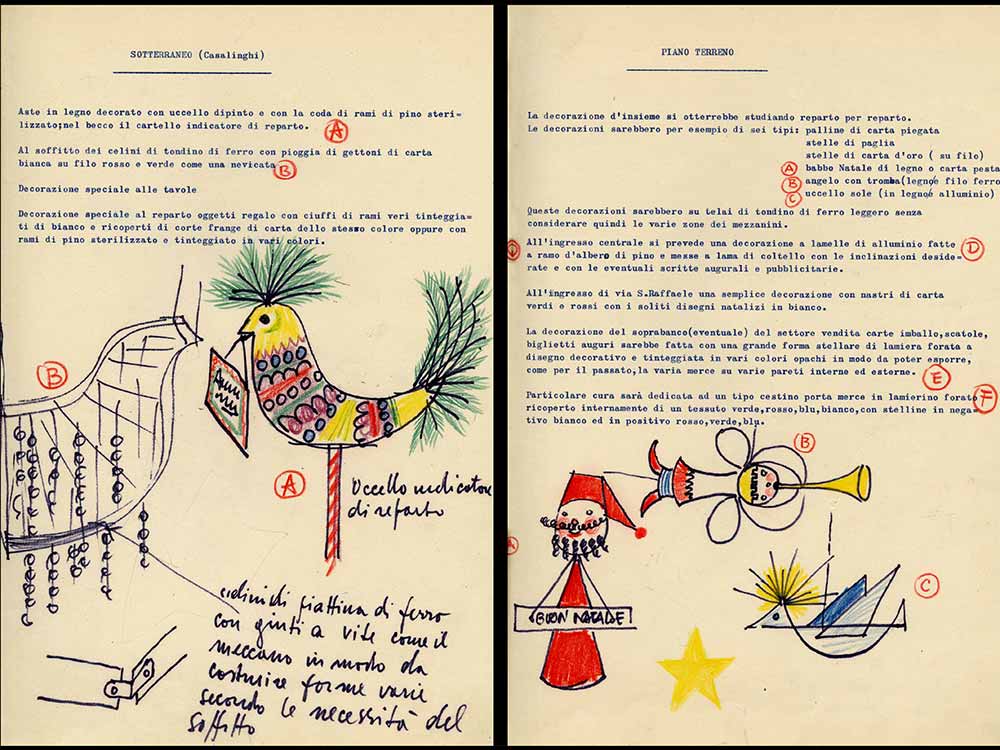
2 / 149 — Left: Albe Steiner, studio per addobbi natalizi al reparto casalinghi del piano sotterraneo, 1954
Dossier page, with typed notes and mixed technique sketches
Right: Albe Steiner, Studio per addobbi natalizi al reparto casalinghi al piano terreno, 1954
Dossier page, with typed notes and mixed technique sketches

3 / 149 — Internal installation, Albe Steiner, studio per cartelli indicatori di reparto, 1954
Dossier page, with handwritten notes and mixed technique sketches

4 / 149 — Fashion show set-up, Roberto Sambonet, bozzetto per allestimento sfliata "Moda autunno", 1955 ca.
Collage and mixed media on paper

5 / 149 — Fashion show set-up, Roberto Sambonet, bozzetto per allestimento di sfilata, 1955 ca.
Collage and mixed media on paper

6 / 149 — Fashion show set-up, Roberto Sambonet, bozzetto per allestimento di sfilata, 1955 ca.
Collage and mixed media on paper

7 / 149 — Vetrina, Albe Steiner, Roberto Sambonet, bozzetto per allestimento di vetrina, 1955 ca.
Collage and mixed media on paper

8 / 149 — Fashion show set-up, Roberto Sambonet, bozzetto per allestimento sfilata "Giardino all'italiana", 1955 ca.
Collage and mixed media on paper

9 / 149 — Internal installation, Roberto Sambonet, bozzetto per allestimento interno, 1955 ca.
Collage and pencil on paper
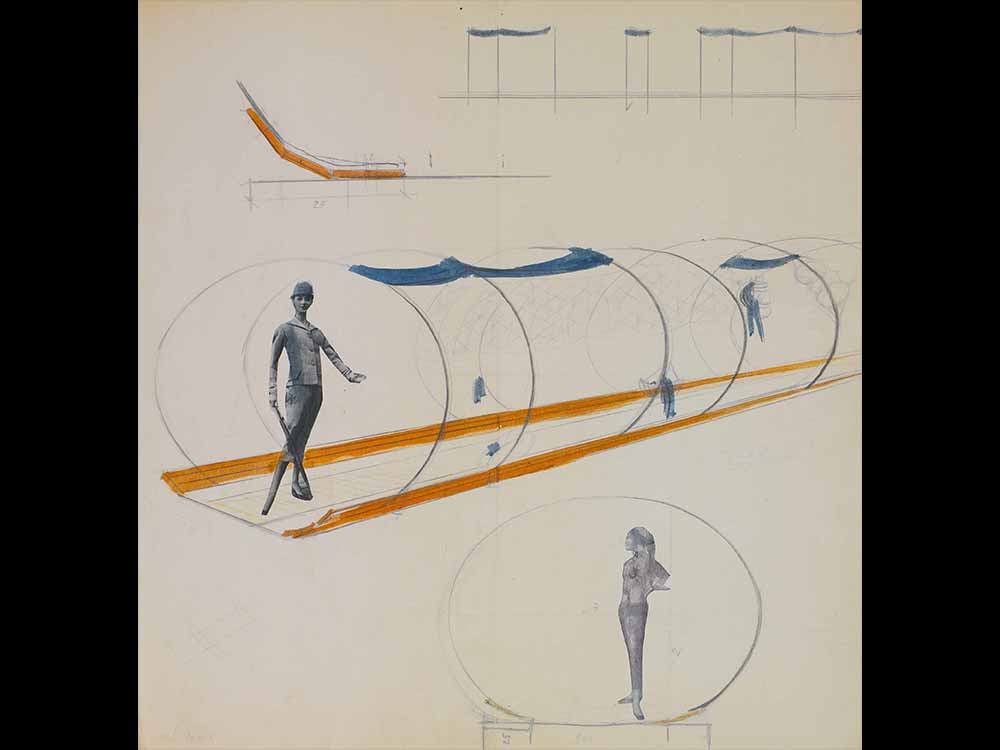
10 / 149 — Fashion show set-up, Roberto Sambonet, bozzetto per allestimento di sfilata, 1956-57
Collage and mixed media on paper

11 / 149 — Fashion show set-up, sfilata de La Rinascente, 1957

12 / 149 — Internal installation, La Rinascente Grandi Manifestazioni. India, 1959
Set-up Roberto Sambonet, Gian Carlo Ortelli
Shop-fitter Attilia Faggian
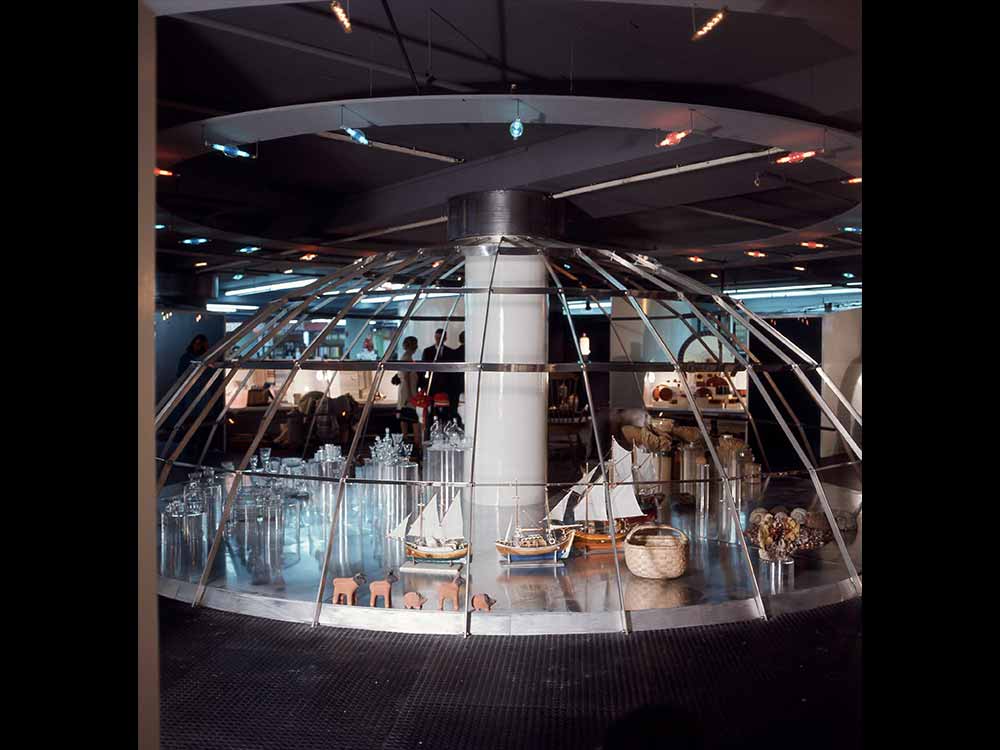
13 / 149 — Internal installation, Roberto Sambonet, Gian Carlo Ortelli, esposizione "Natale idea", 1967
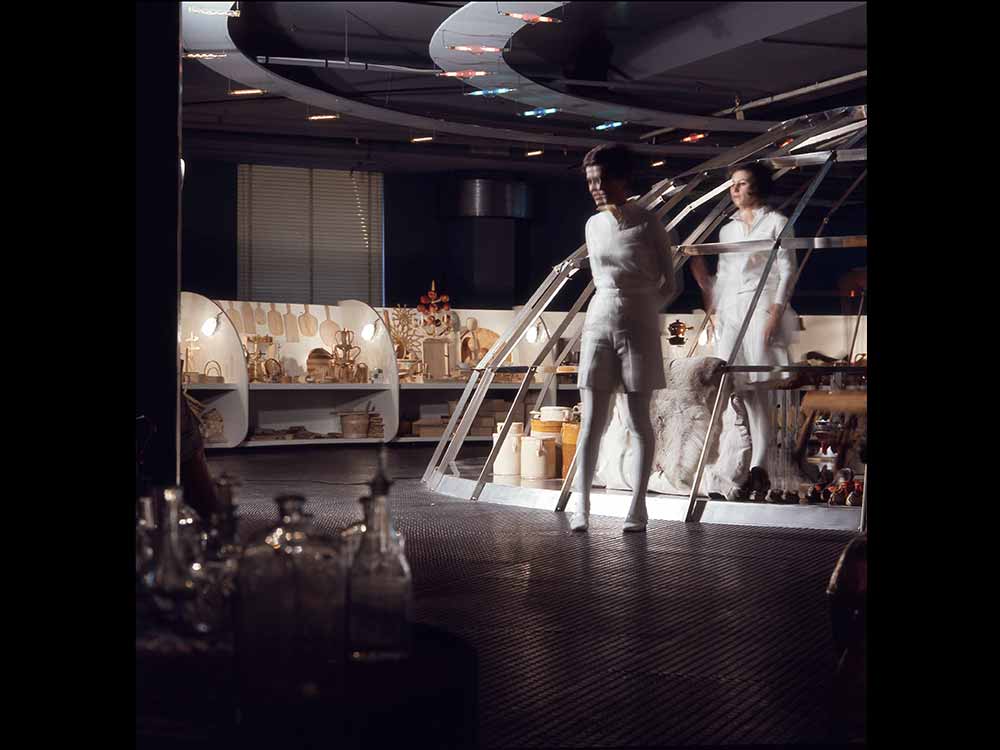
14 / 149 — Internal installation, Roberto Sambonet, Gian Carlo Ortelli, particolare dell'esposizione "Natale idea", 1967
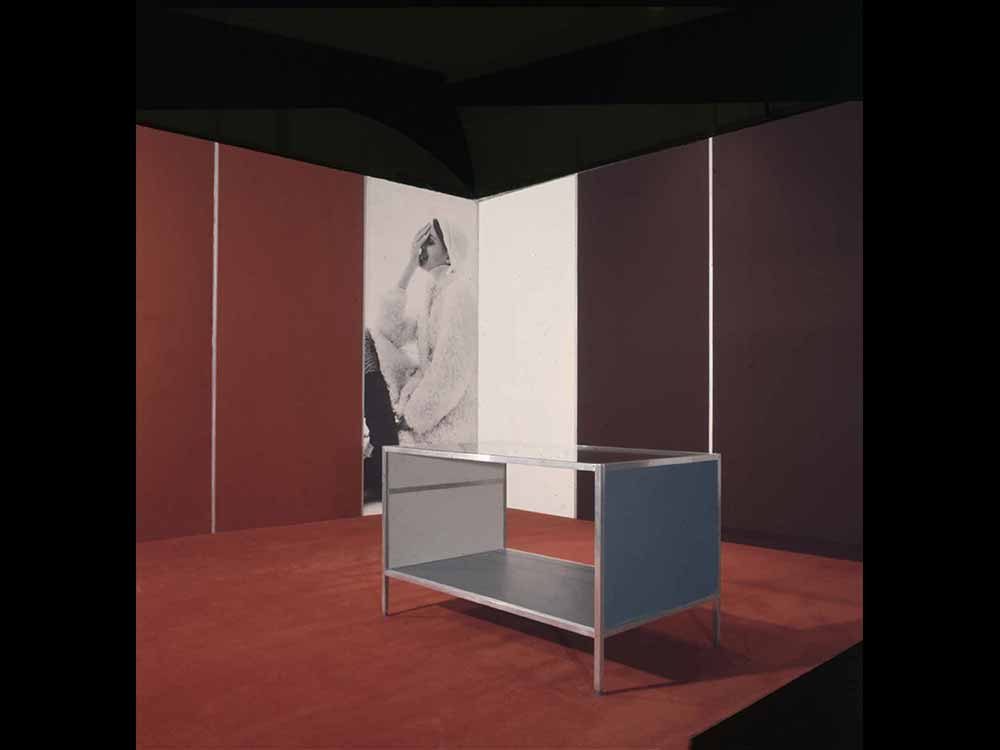
15 / 149 — Internal installation, Tomas Maldonado, banco piano per Upim, 1968 ca.
UPIM corporate image project

16 / 149 — Internal installation, Tomas Maldonado, banco piano per Upim, 1968 ca.
UPIM corporate image project
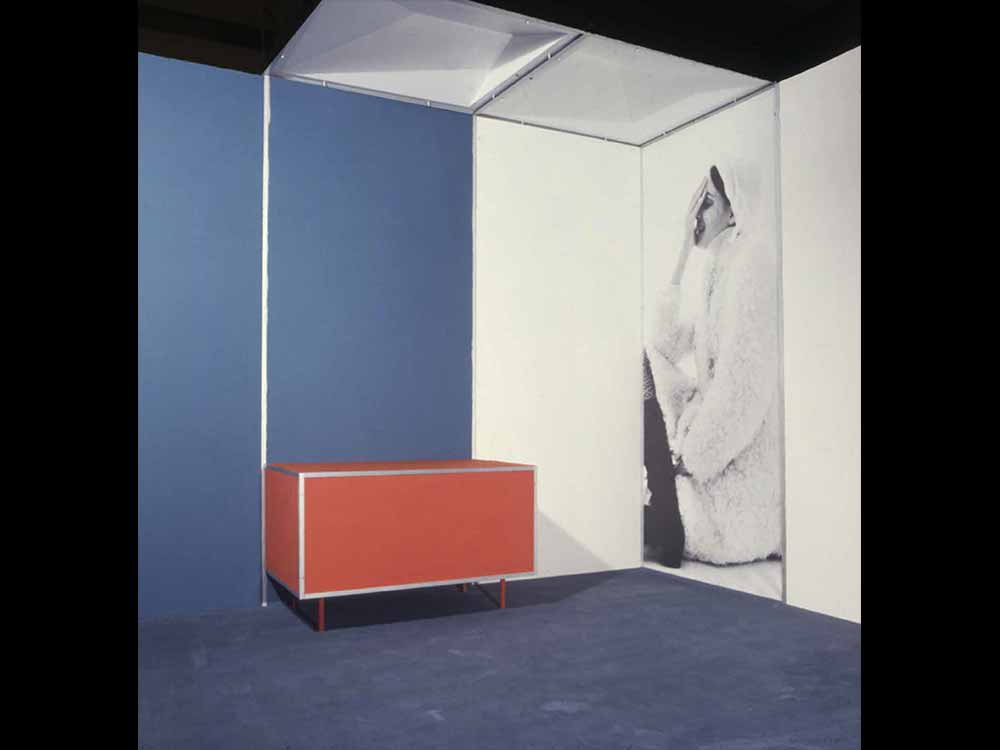
17 / 149 — Internal installation, Tomas Maldonado, banco piano per Upim, 1968 ca.
UPIM corporate image project

18 / 149 — Internal installation, Tomas Maldonado, banco piano per Upim, 1968 ca.
UPIM corporate image project
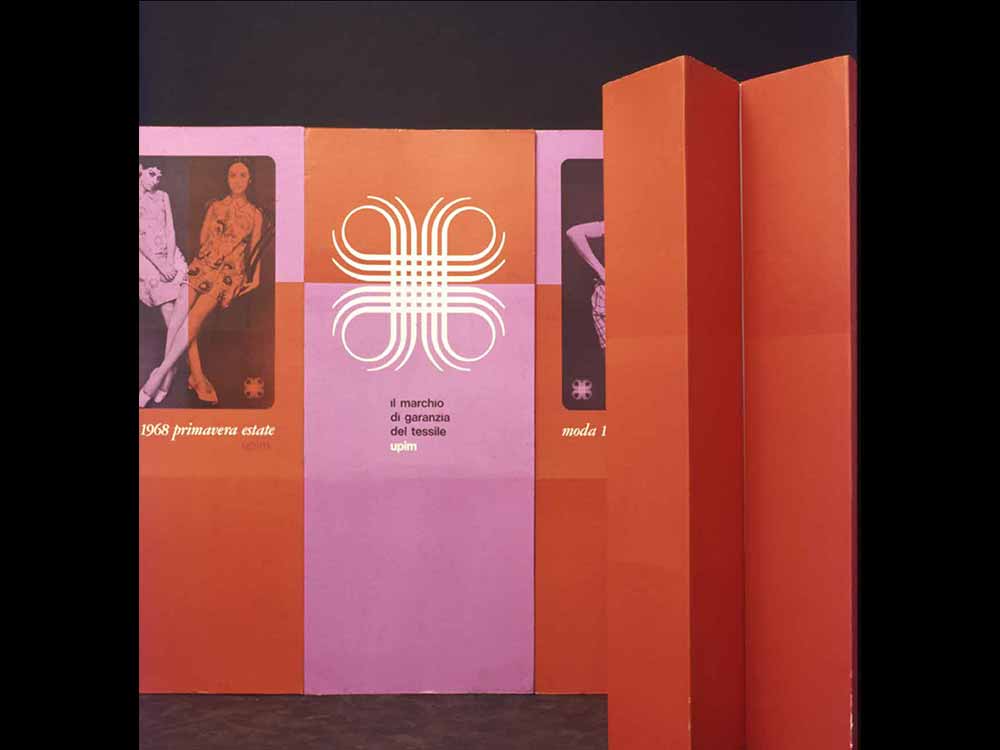
19 / 149 — Internal installation, Tomas Maldonado, supporti in cartone per l'esposizione di manifesti nelle vetrine Upim, 1968
UPIM corporate image project
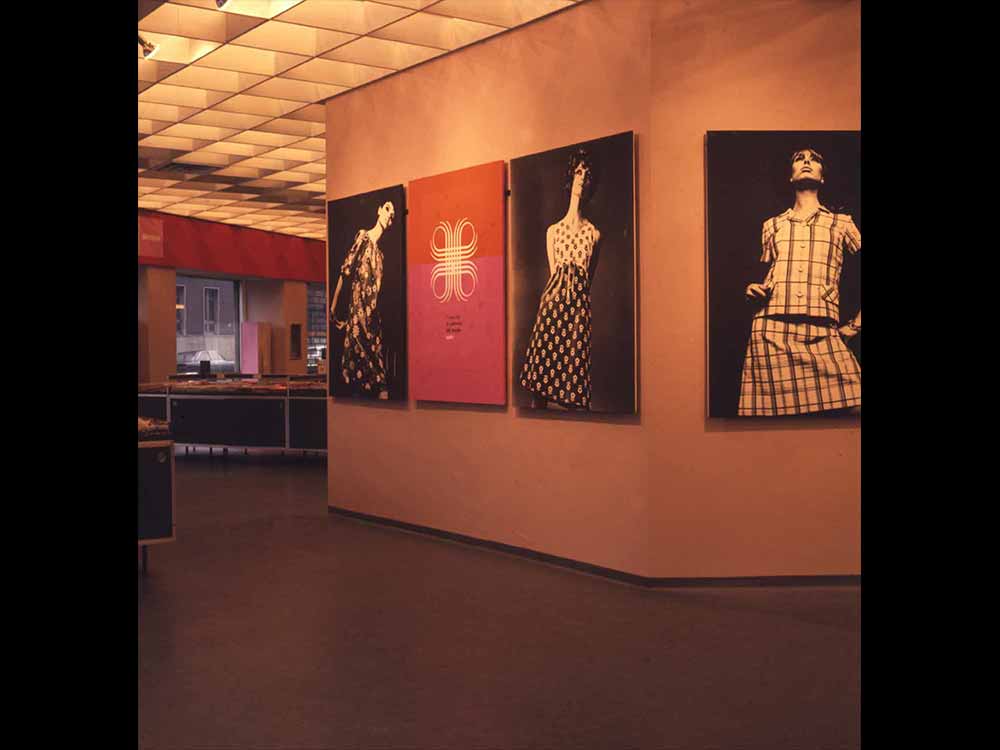
20 / 149 — Internal installation, Tomas Maldonado, interno Upim, 1968 ca.
UPIM corporate image project
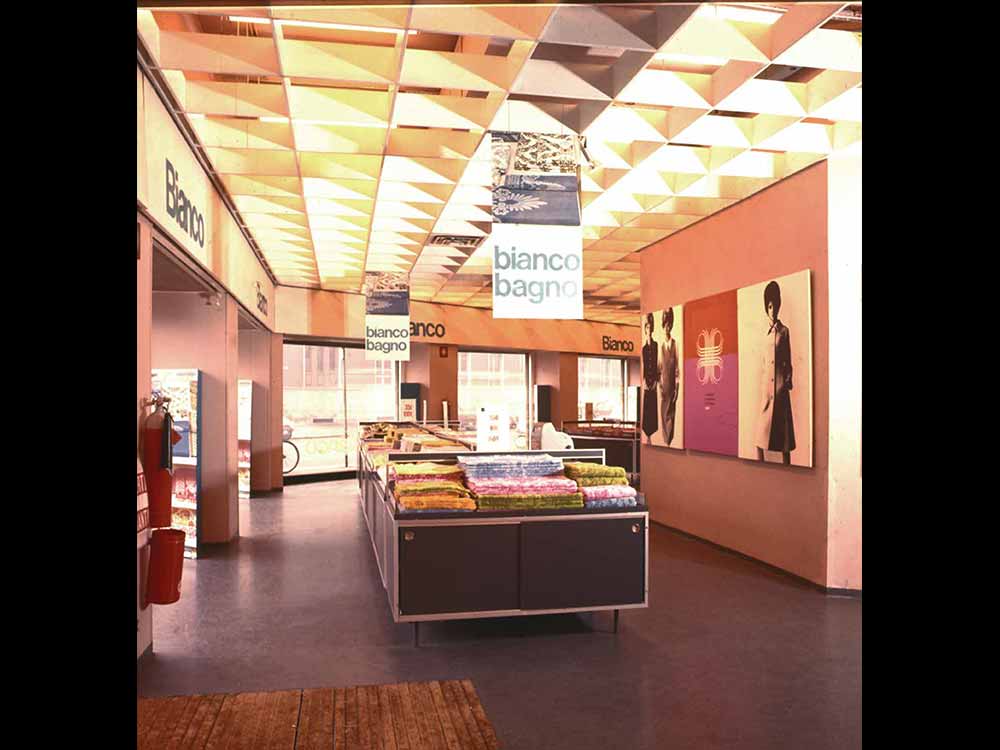
21 / 149 — Internal installation, Tomas Maldonado, allestimento "Bianco" all'Upim, 1968 ca.
UPIM corporate image project
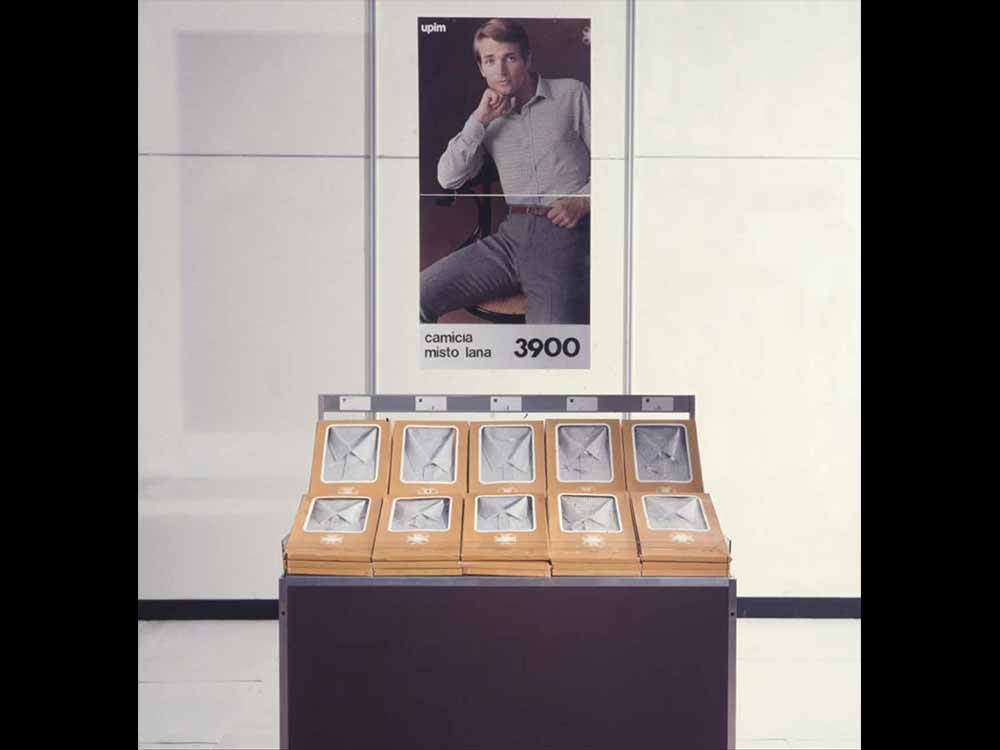
22 / 149 — Internal installation, Tomas Maldonado, banco per esposizione camicie all'Upim, 1968 ca.
UPIM corporate image project
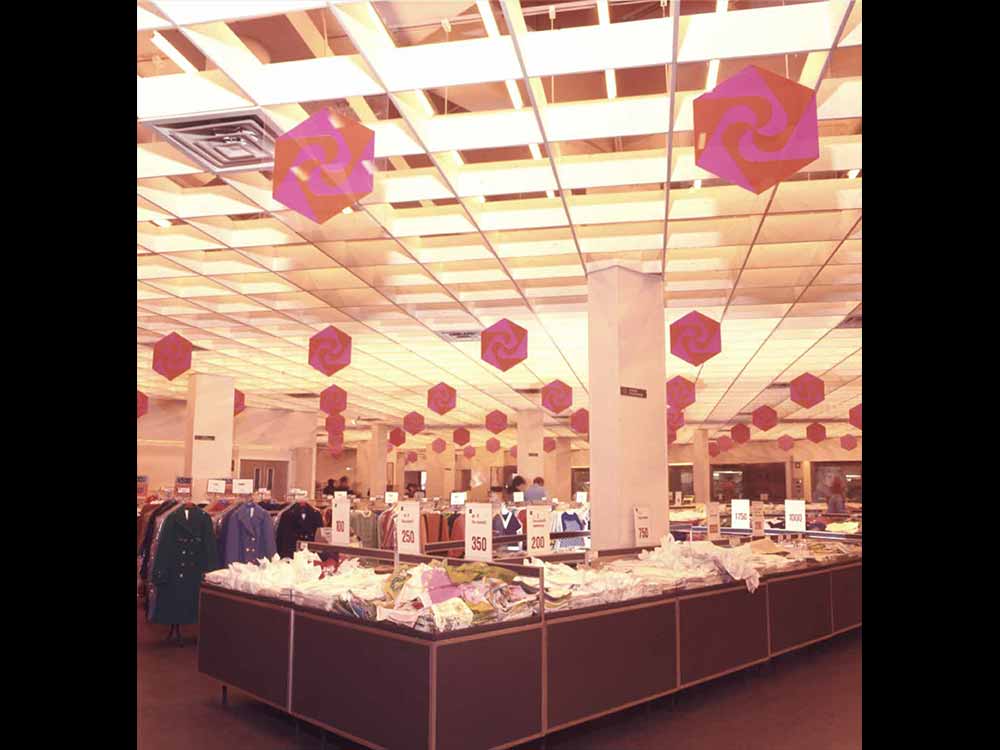
23 / 149 — Internal installation, Tomas Maldonado, interno Upim, 1968 ca.
UPIM corporate image project

24 / 149 — Left: Paola Lanzani, particolare della boutique Ted Lapidus nel reparto uomo de La Rinascente di Milano Piazza Duomo, 1974
Right: Paola Lanzani, particolare del reparto donna de La Rinascente di Milano Piazza Duomo, 1974

25 / 149 — Left: Paola Lanzani, particolare del reparto bambino a La Rinascente di Milano Piazza Duomo, 1974
Right: Paola Lanzani, particolare del reparto bambino a La Rinascente di Milano Piazza Duomo, 1974
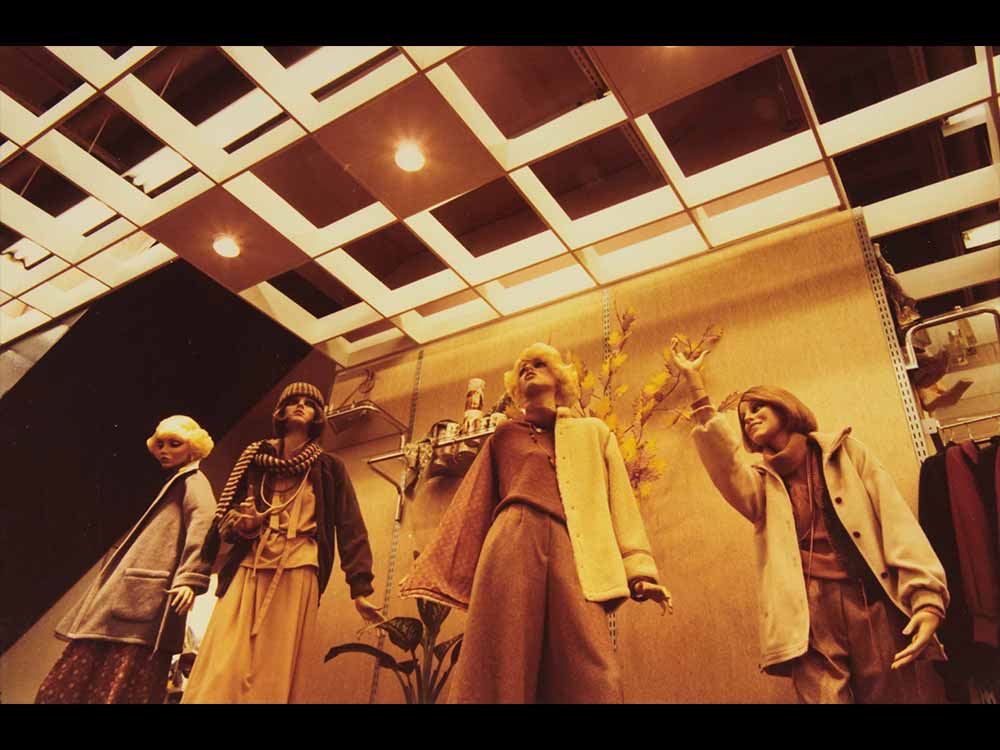
26 / 149 — Internal installation, Paola Lanzani, angolo espositivo della Upim di Milano Via Dante, 1978
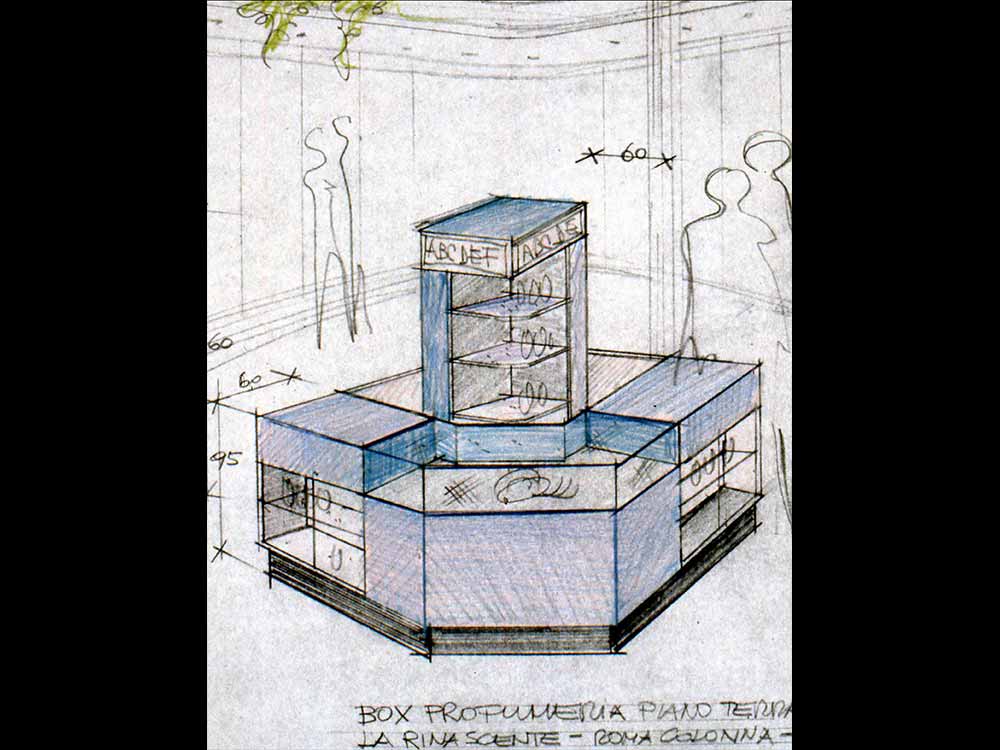
27 / 149 — Internal installation, Paola Lanzani, disegno di progetto per il box profumeria al piano terra de La Rinascente di Roma Piazza Colonna, 1985
Tecnica mista su carta
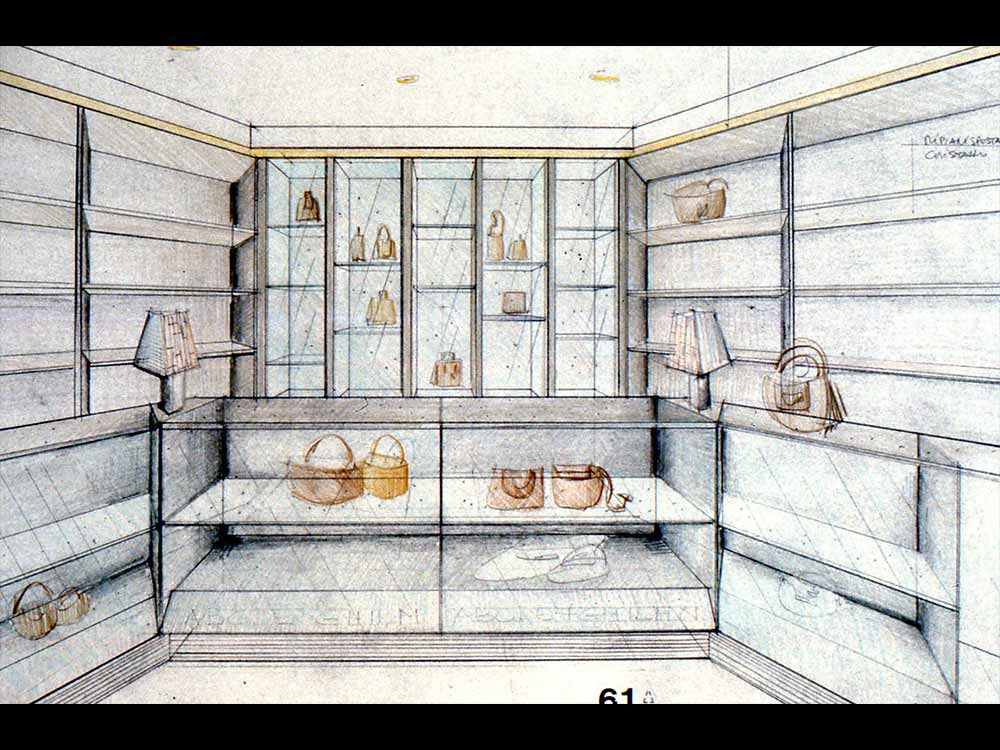
28 / 149 — Internal installation, Paola Lanzani, disegno di progetto per il reparto accessori de La Rinascente di Roma Piazza Colonna, 1985
Tecnica mista su carta

29 / 149 — Internal installation, Paola Lanzani, struttura espositiva centrale al piano terra de La Rinascente di Roma Piazza Colonna, 1985

30 / 149 — Internal installation, Paola Lanzani, stand espositivo al reparto donna de La Rinascente di Milano Piazza Duomo, [1988]

31 / 149 — Internal installation, Paola Lanzani, visione generale di un reparto dell'affiliato Croff di Novara, 1992-1993
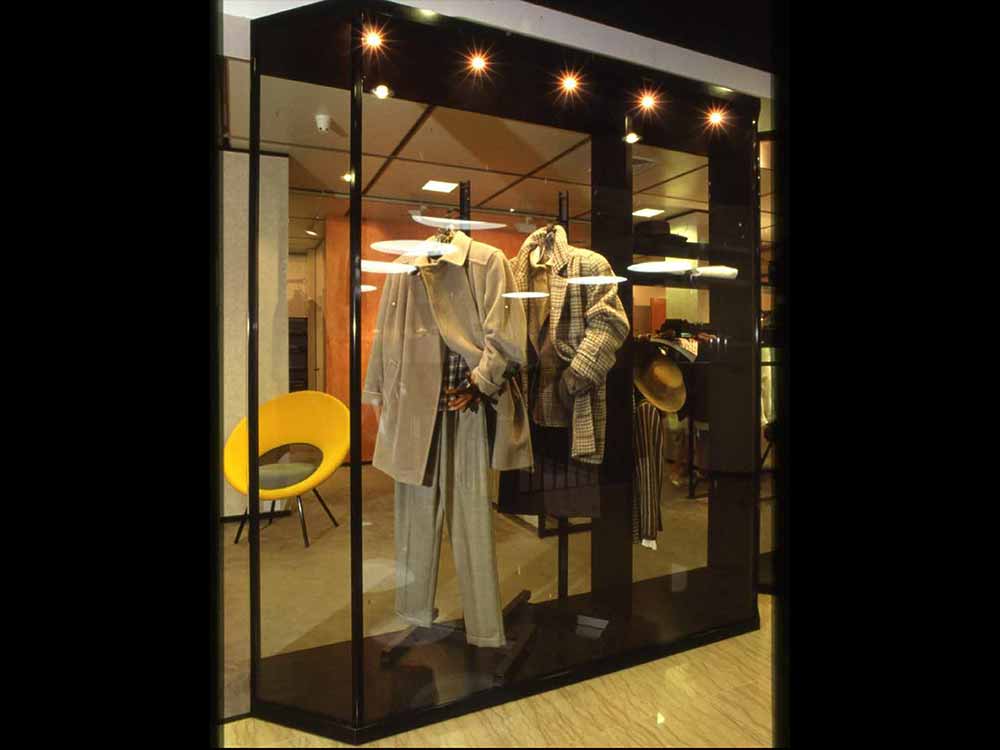
32 / 149 — Internal installation, Piercarla Toscano Lanzani Racchelli, stand espositivo a La Rinascente di Genova, 1982-1987

33 / 149 — Internal installation, Piercarla Toscano Lanzani Racchelli, particolare di allestimento interno de La Rinascente di Milano Piazza Duomo, 1982-1987
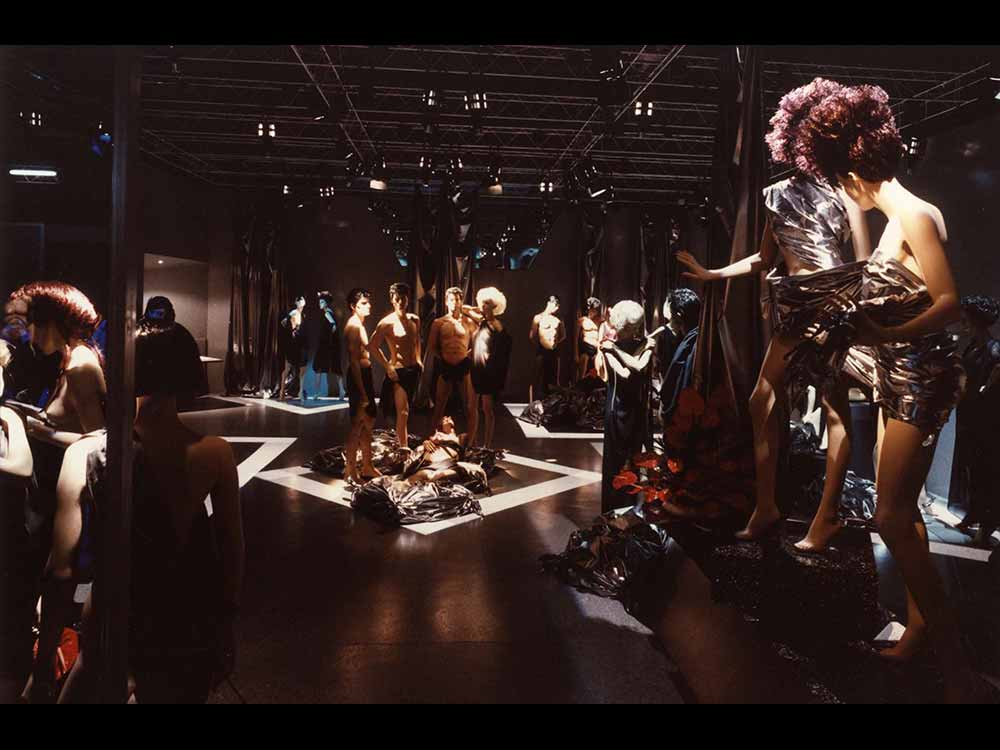
34 / 149 — Internal installation, Piercarla Toscano Lanzani Racchelli, allestimento con manichini a La Rinascente di Milano Piazza Duomo, 1982-1987

35 / 149 — Internal installation, Piercarla Toscano Lanzani Racchelli, stand espositivo a La Rinascente di Milano Piazza Duomo, 1982-1987

36 / 149 — Internal installation, Ettore Mariani, America jogging. LR, 1979
Graphic project Ettore Mariani
Illustration Andrianus Vander Elst
Modular design for installation in the young department
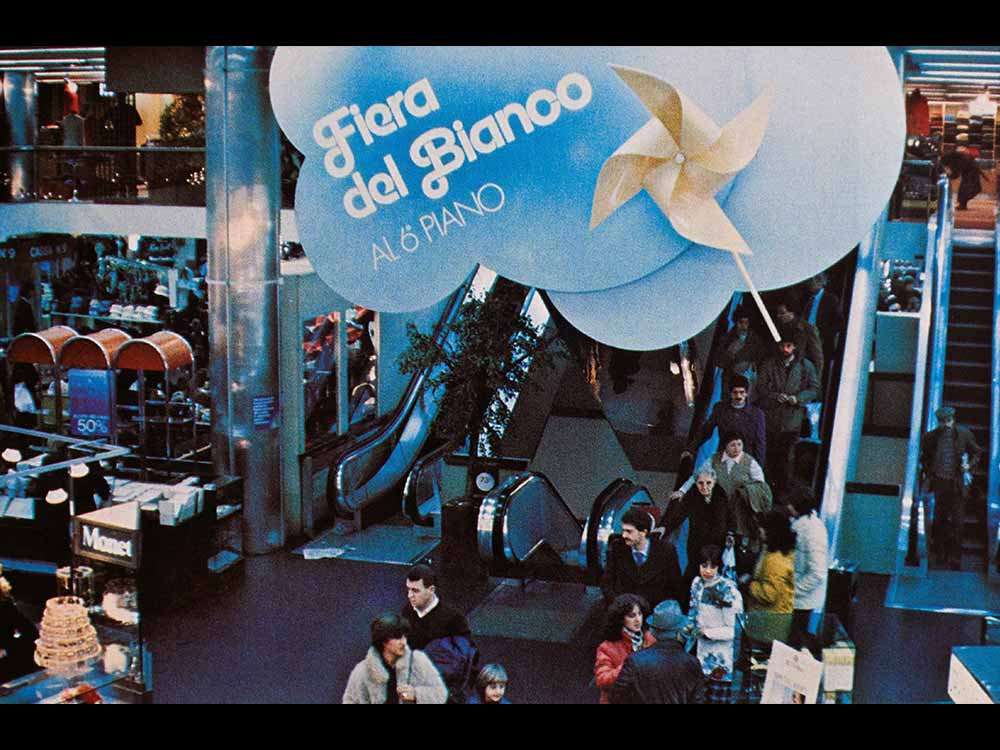
37 / 149 — Internal installation, Ettore Mariani, Fiera del Bianco, 1980
Graphic project Ettore Mariani
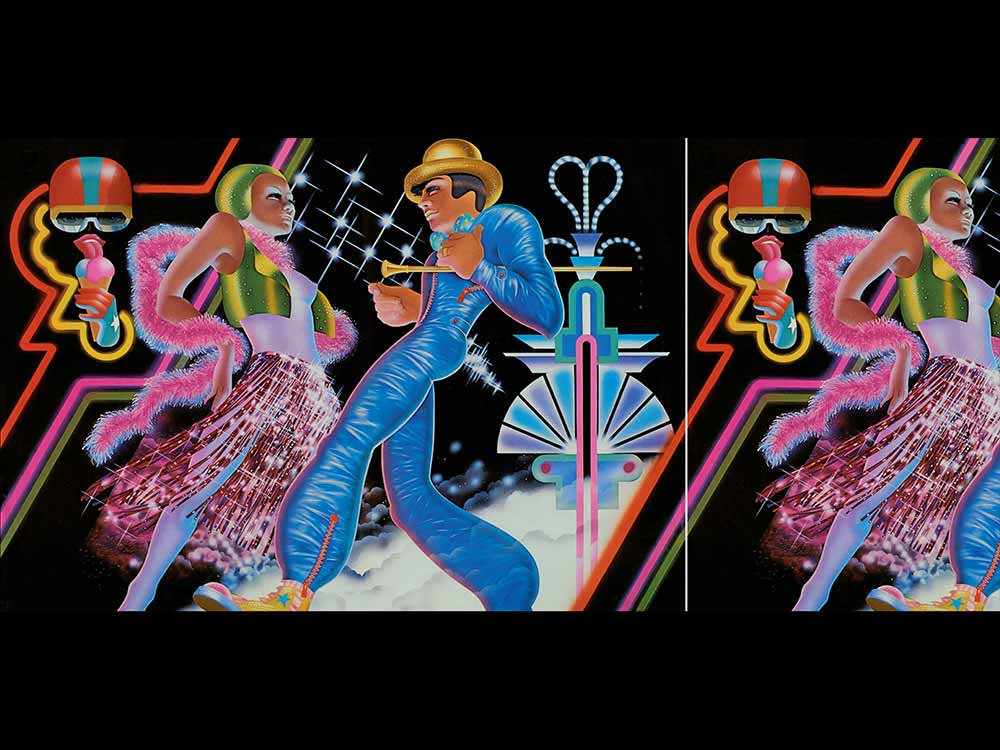
38 / 149 — Internal installation, Ettore Mariani, Show Point, 1980
Graphic project Ettore Mariani
Illustration Andrianus Vander Elst
Modular design for installation in the young department
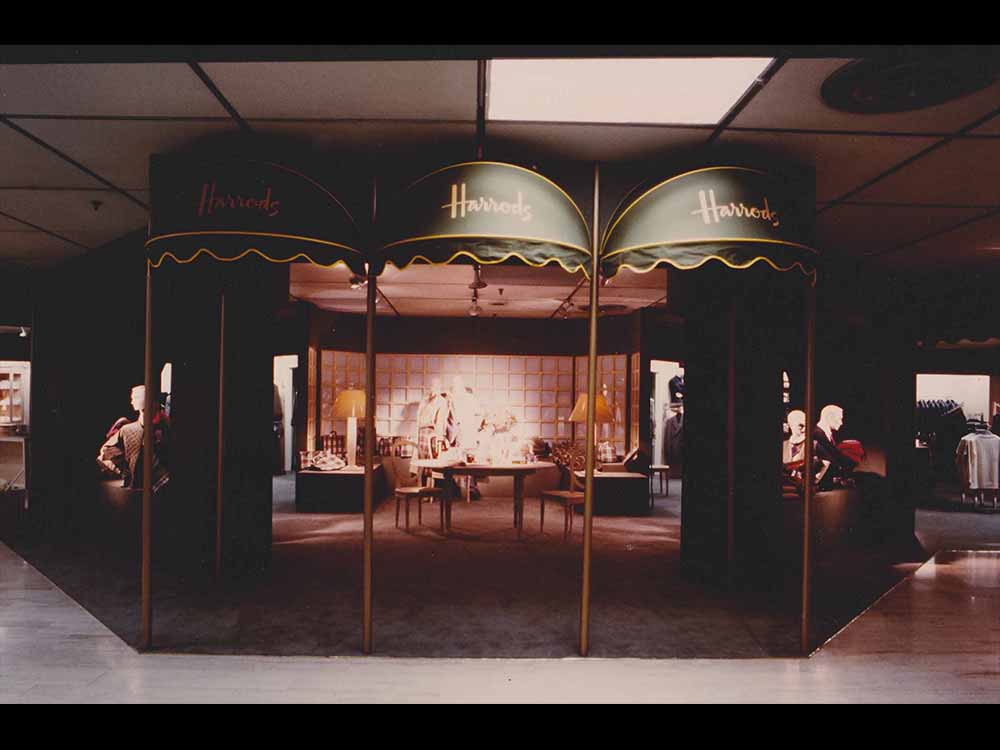
39 / 149 — Internal installation, Giorgio Pulici, Harrods at La Rinascente, 1994
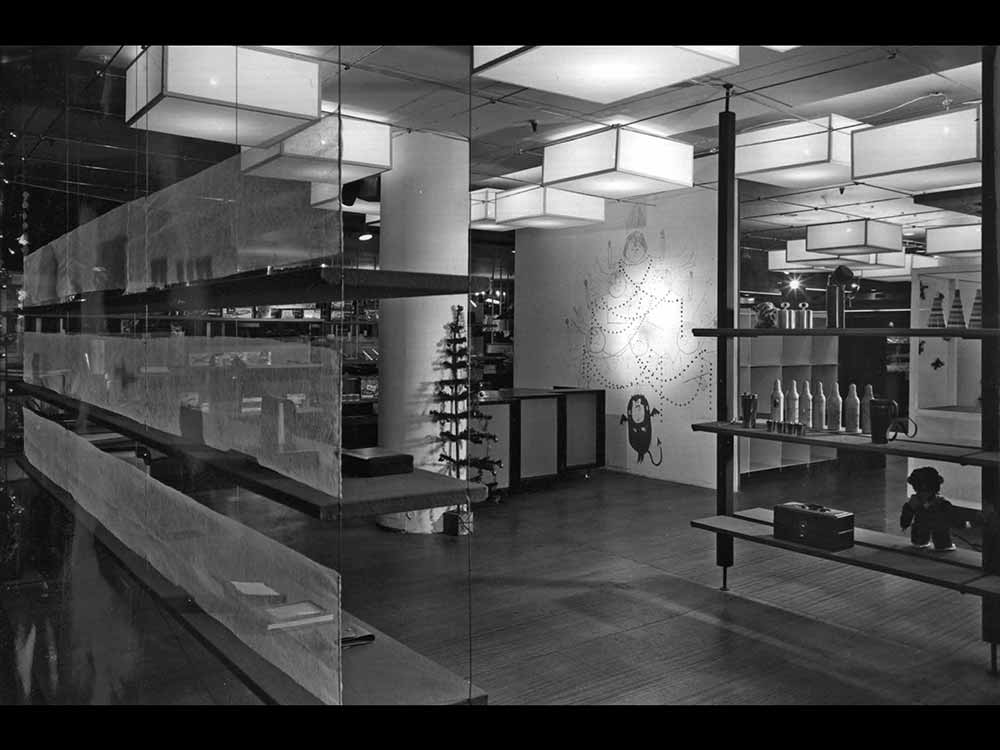
40 / 149 — Internal installation, Giancarlo Iliprandi, Carlo Pagani, allestimento interno per il Natale, 1955
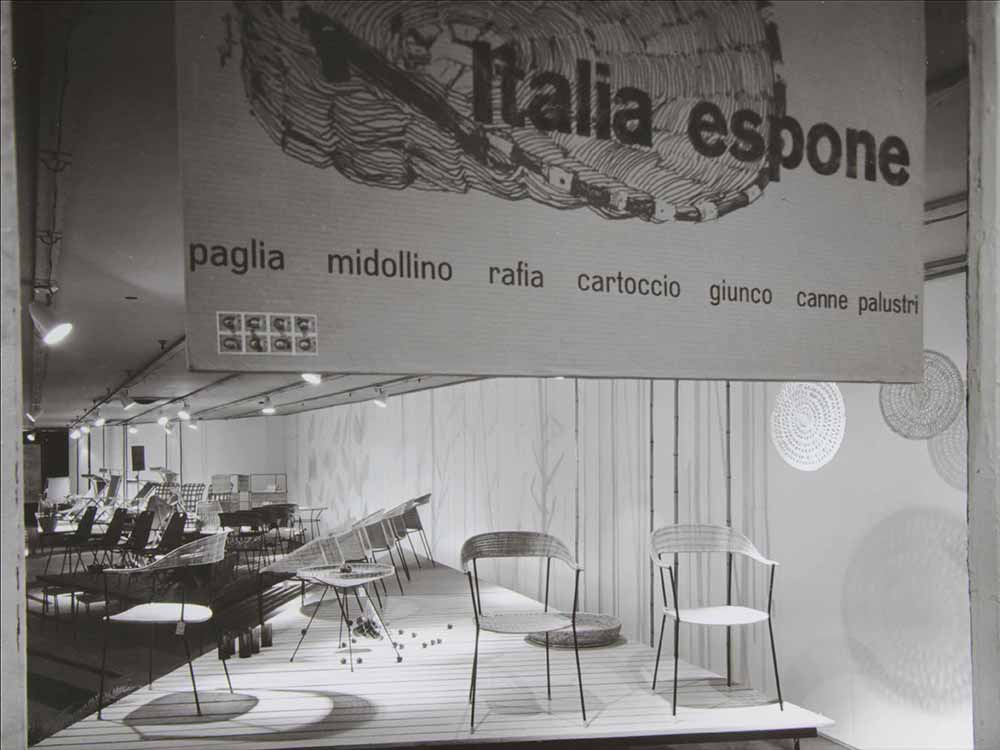
41 / 149 — Internal installation, Giancarlo Iliprandi, Gian Carlo Ortelli, allestimento interno per la manifestazione "Italia espone", 1956

42 / 149 — Internal installation, Giancarlo Iliprandi, Gian Carlo Ortelli, allestimento interno per la manifestazione "Italia espone", 1956

43 / 149 — Internal installation, Giancarlo Iliprandi, Gian Carlo Ortelli, allestimento interno per la manifestazione "Italia espone", 1956
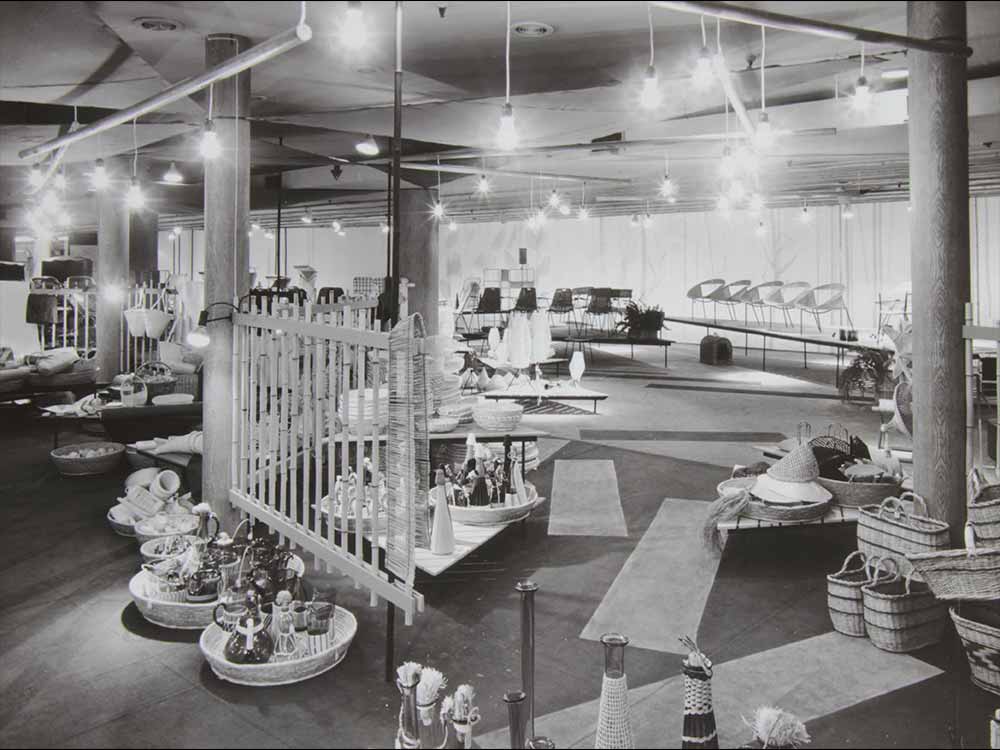
44 / 149 — Internal installation, Giancarlo Iliprandi, Gian Carlo Ortelli, allestimento interno per la manifestazione "Italia espone", 1956

45 / 149 — Internal installation, Giancarlo Iliprandi, Gian Carlo Ortelli, allestimento interno per la manifestazione "Italia espone", 1956

46 / 149 — Internal installation, Giancarlo Iliprandi, Gian Carlo Ortelli, allestimento interno per la manifestazione "Italia espone", 1956

47 / 149 — Internal installation, Giancarlo Iliprandi, Gian Carlo Ortelli, allestimento interno per la manifestazione "Italia espone", 1956
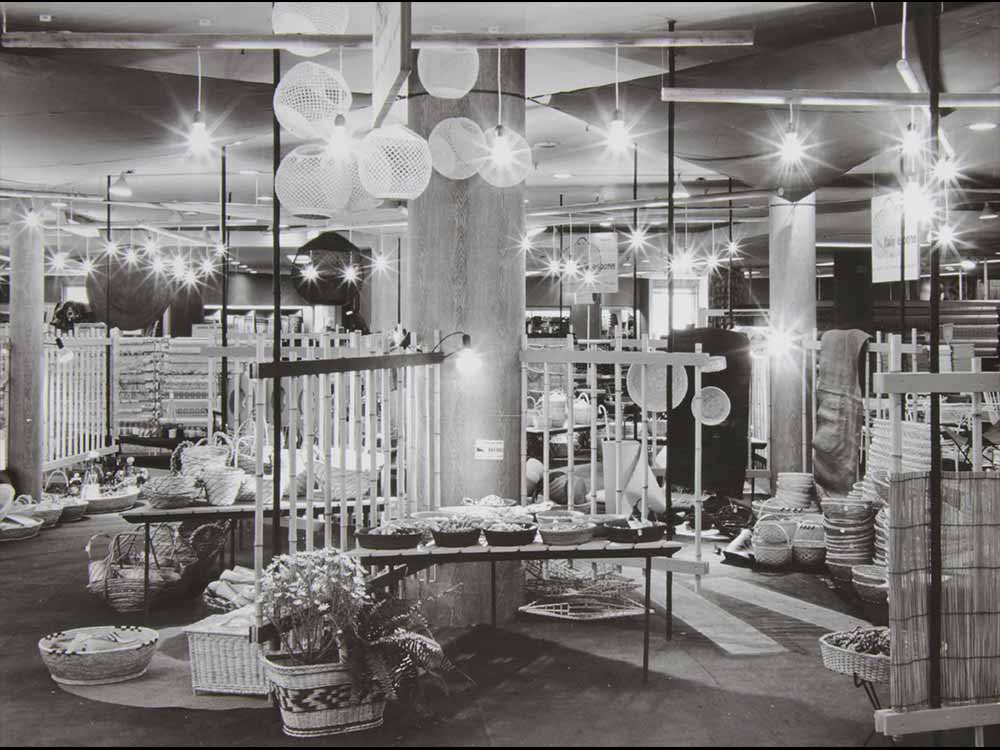
48 / 149 — Internal installation, Giancarlo Iliprandi, Gian Carlo Ortelli, allestimento interno per la manifestazione "Italia espone", 1956

49 / 149 — Internal installation, Giancarlo Iliprandi, Gian Carlo Ortelli, allestimento interno per la manifestazione "Italia espone", 1956
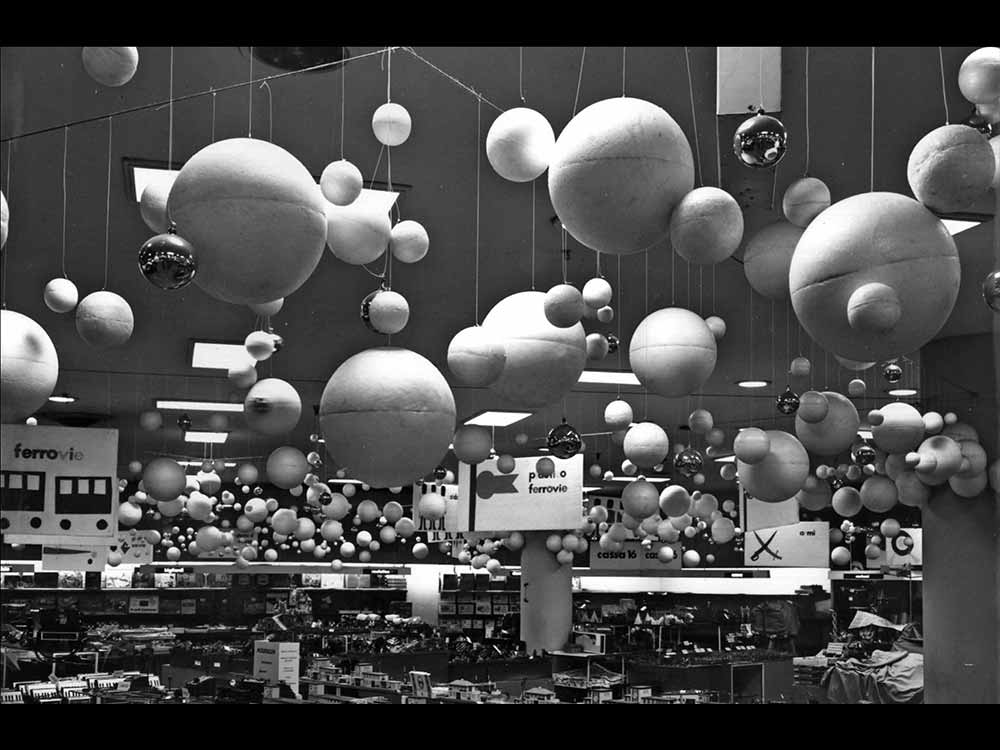
50 / 149 — Internal installation, Giancarlo Iliprandi, Gian Carlo Ortelli, allestimento interno per "Natale idea", 1956
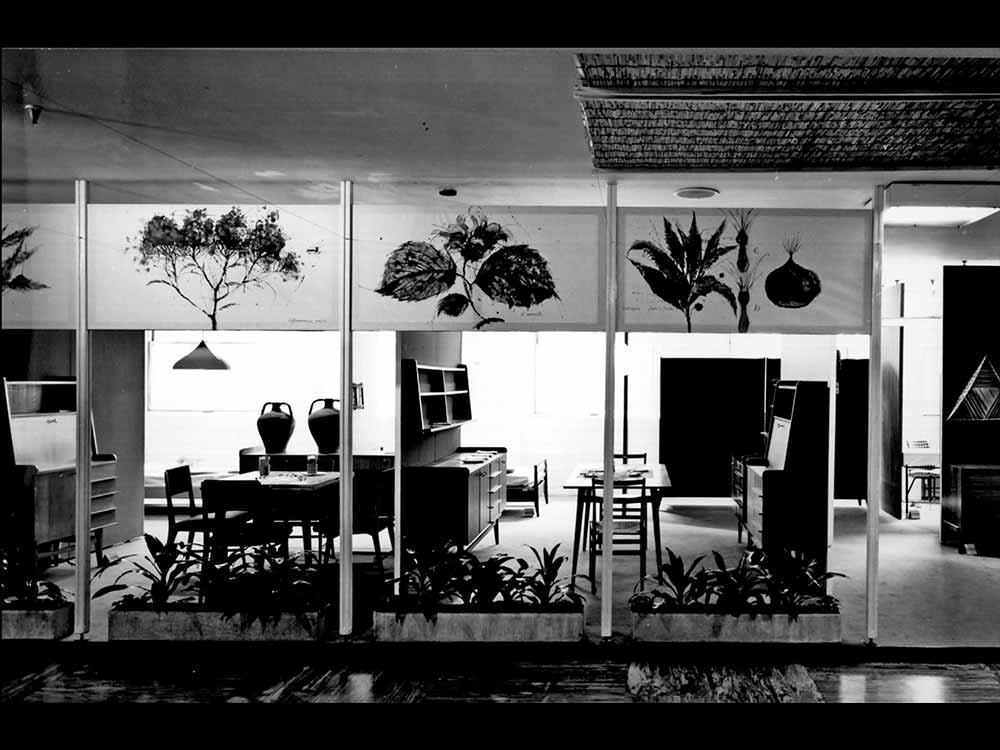
51 / 149 — Internal installation, Giancarlo Iliprandi, allestimento del reparto casa, 1957
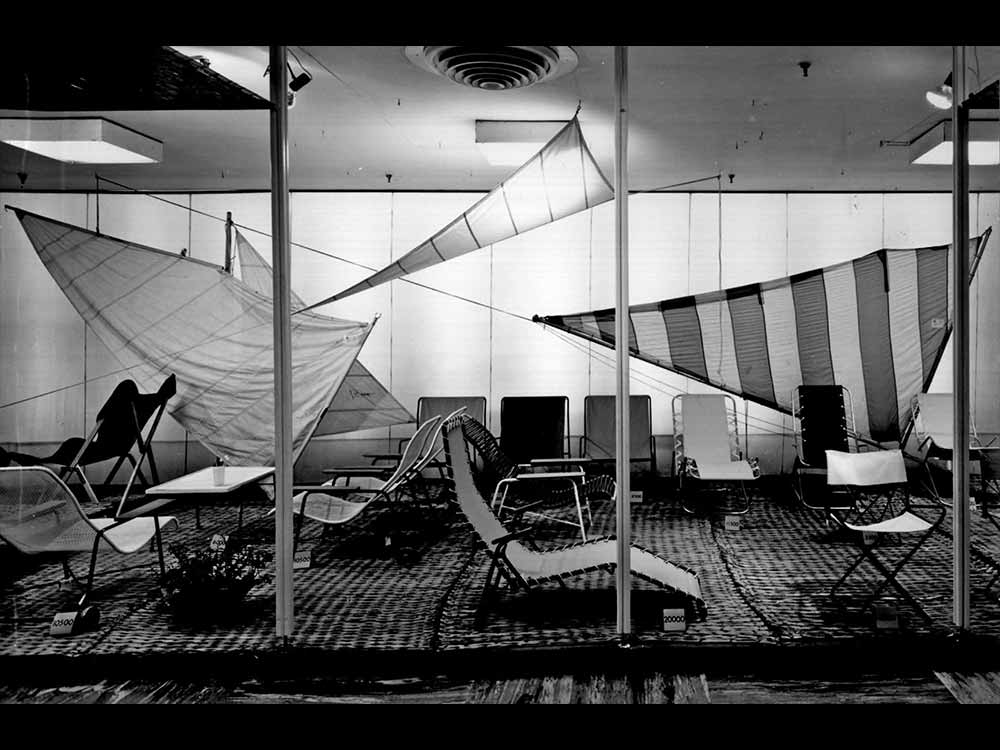
52 / 149 — Internal installation, Giancarlo Iliprandi, allestimento del reparto arredo e accessori per esterni, 1957
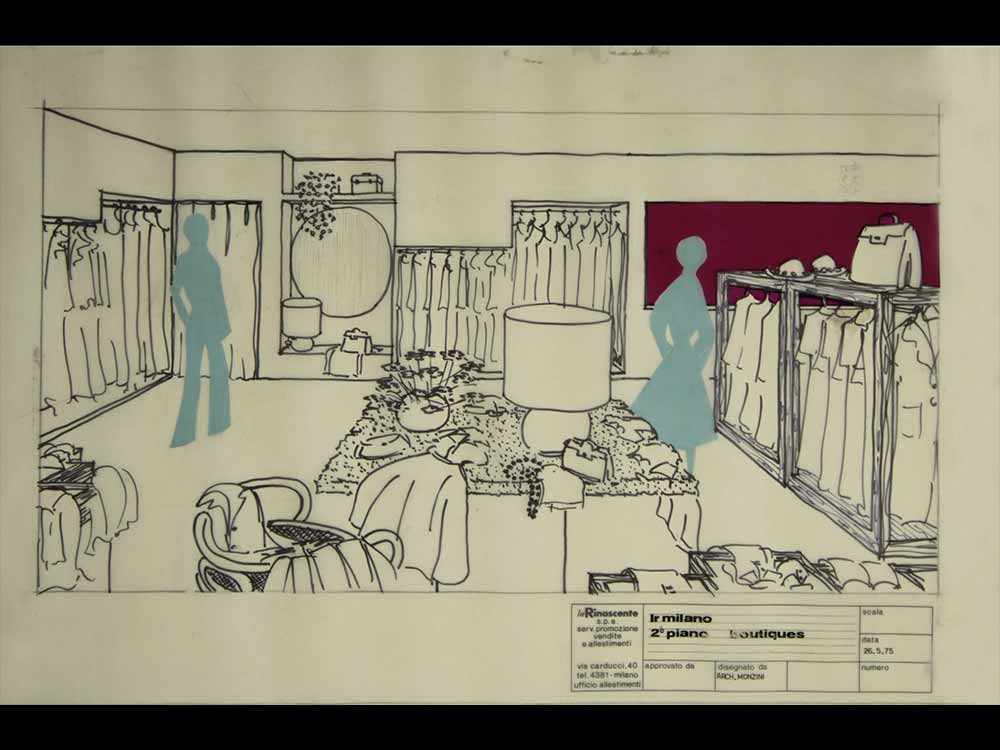
53 / 149 — Internal installation, Rosanna Monzini, LR Milano, 2° piano boutiques. Proposta di allestimento, 1975
Hand-drawn picture on tracing paper screens
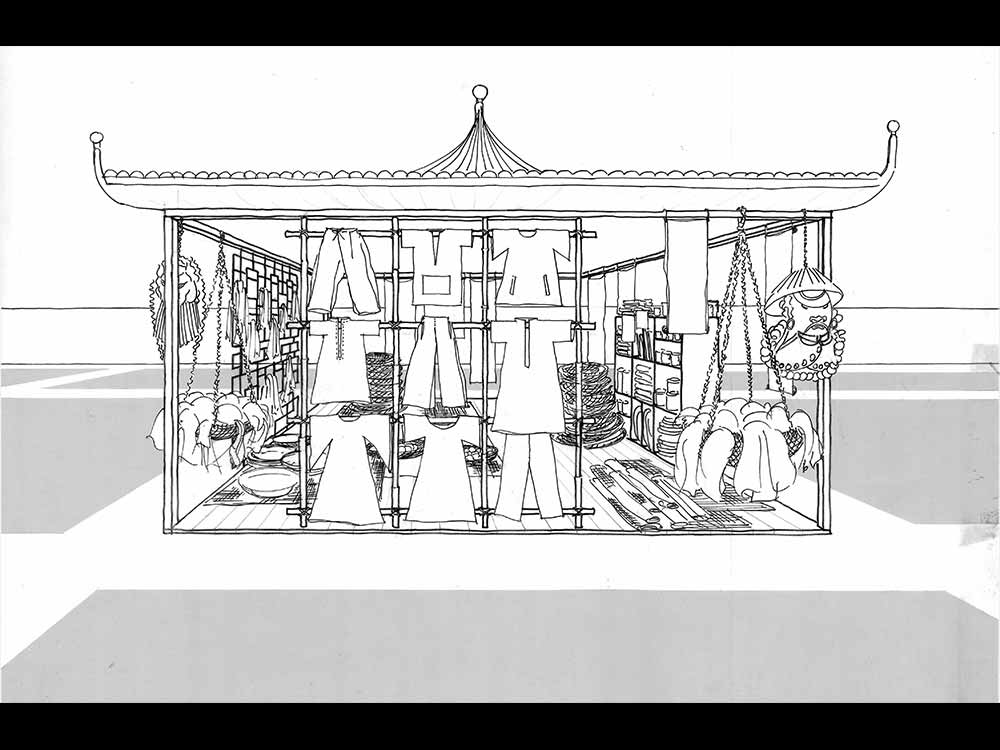
54 / 149 — Internal installation, Rosanna Monzini, Cina. Proposta di allestimento, 1975
Hand-drawn picture on tracing paper colored screens
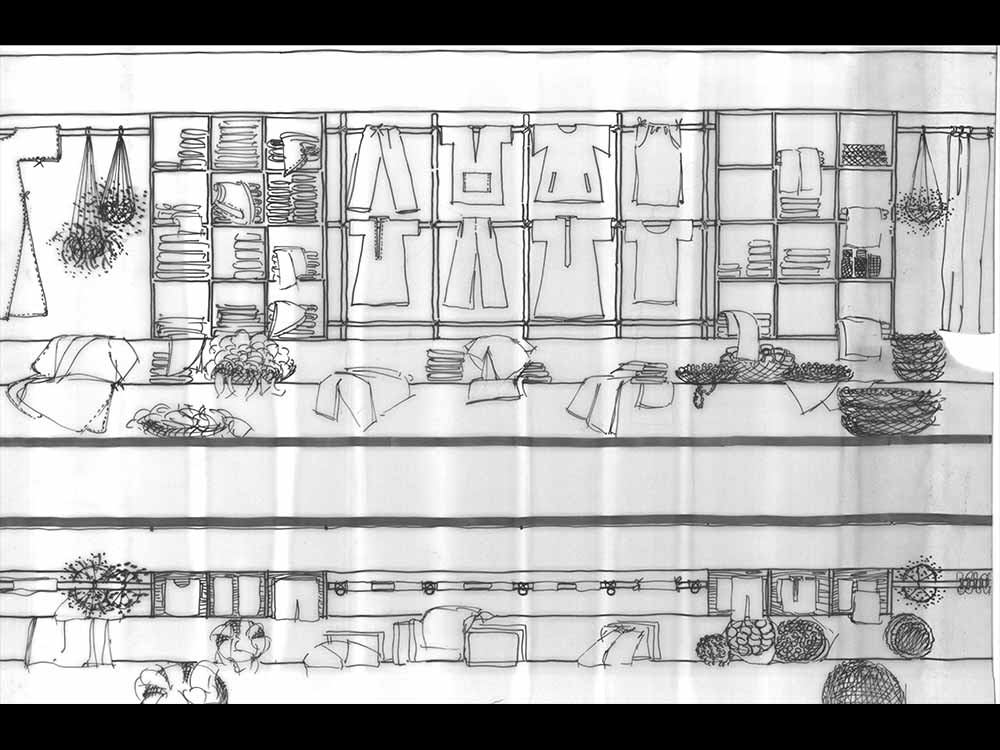
55 / 149 — Internal installation, Rosanna Monzini, Cina. Proposta di allestimento, 1975
Hand-drawn picture on tracing paper

56 / 149 — Internal installation, Rosanna Monzini, allestimento "Dahomey" per il piano dedicato all'Africa, 1976

57 / 149 — Internal installation, Rosanna Monzini, allestimento "Costa d'Avorio" per il piano dedicato all'Africa, 1976
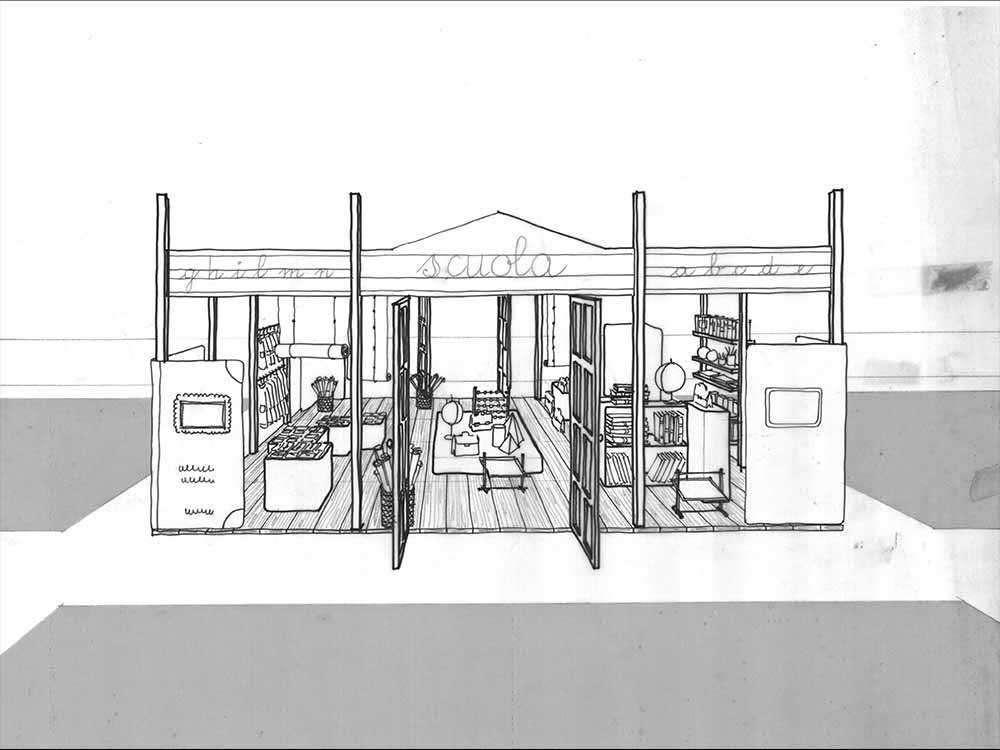
58 / 149 — Internal installation, Rosanna Monzini, Scuola. Proposta di allestimento, 1976
Hand-drawn picture on tracing paper colored screens

59 / 149 — Internal installation, Rosanna Monzini, Scuola. Proposta di allestimento, 1976
Hand-drawn picture on tracing paper
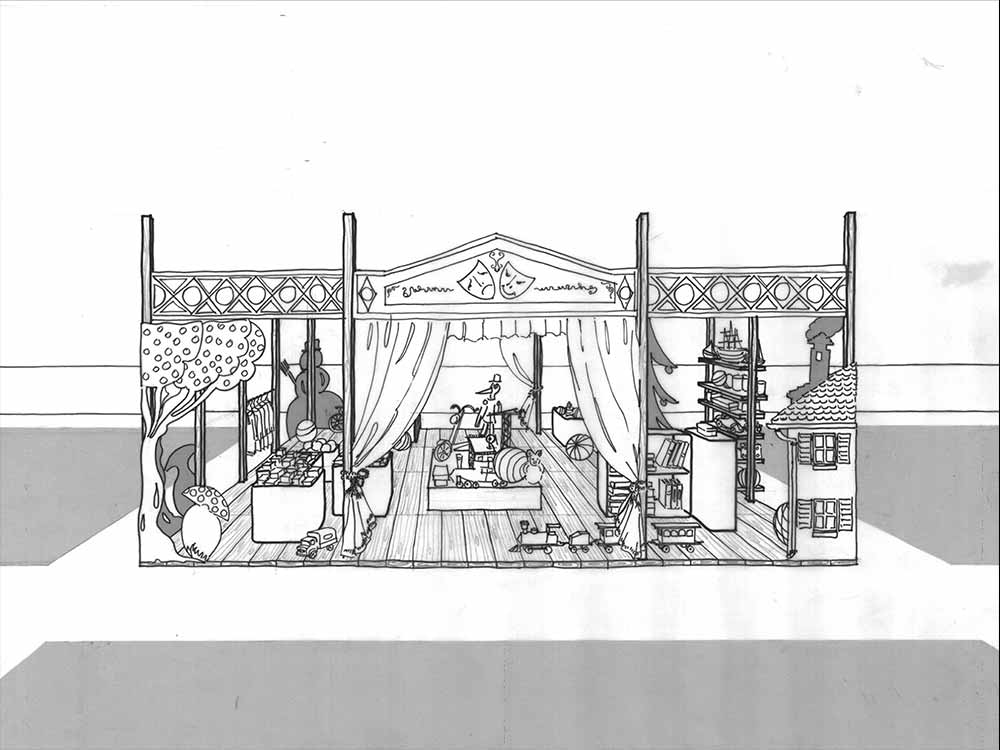
60 / 149 — Internal installation, Rosanna Monzini, Scuola. Proposta di allestimento, 1976
Hand-drawn picture on tracing paper screens

61 / 149 — Internal installation, Rosanna Monzini, Estate, 1976

62 / 149 — Internal installation, Rosanna Monzini, Primavera LR. Pedana promozionale al reparto uomo, 1977
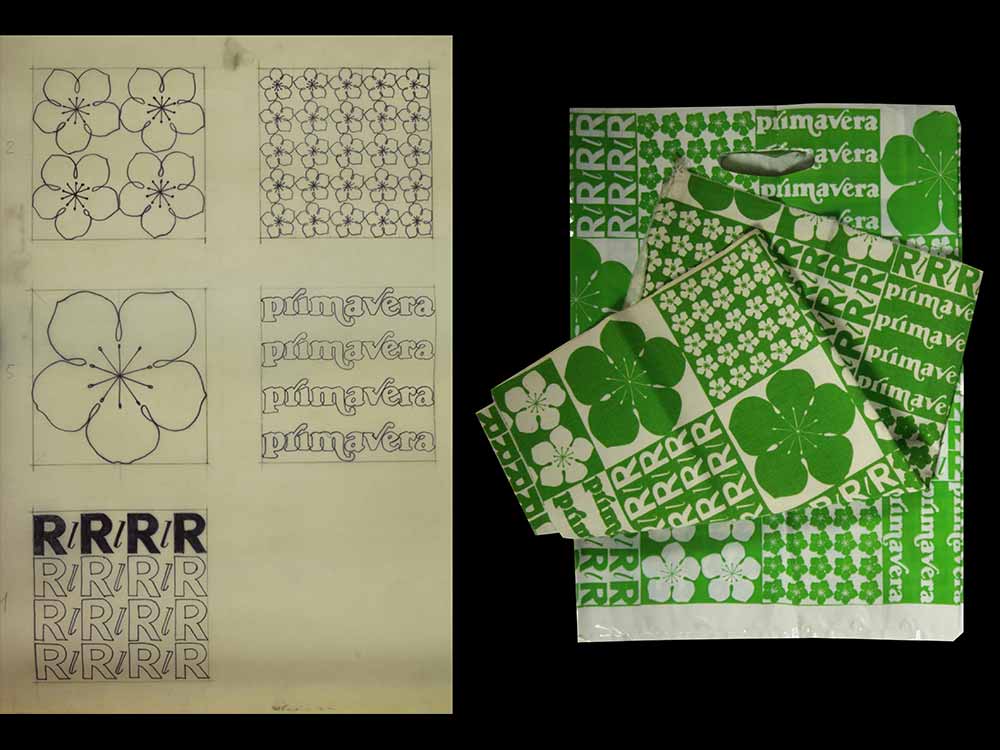
63 / 149 — Left: Rosanna Monzini, disegno per tessuto dell'allestimento "Primavera LR", 1977
Pagina di fascicolo, con note dattiloscritte e schizzi a tecnica mista.
Right: Rosanna Monzini, stoffa per rivestimento e sacchetto in plastica per l'allestimento "Primavera LR", 1977
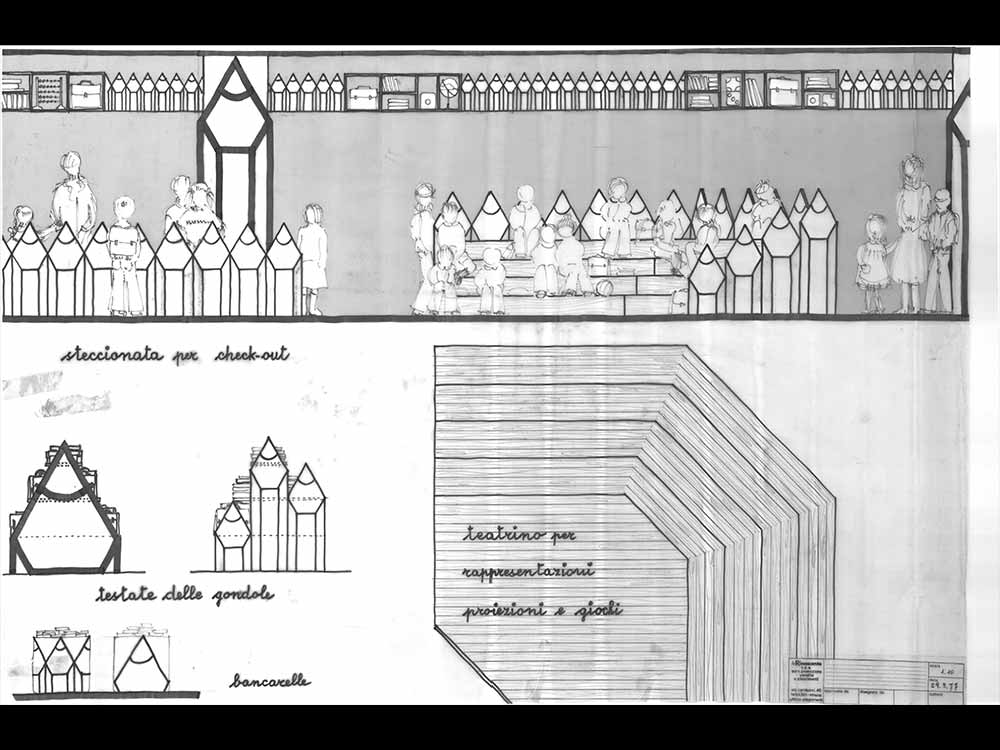
64 / 149 — Internal installation, Rosanna Monzini, Scuola. Progetto di allesimento con teatrino, 1977
Hand-drawn picture on tracing paper screens

65 / 149 — Internal installation, Rosanna Monzini, "Salon de café" per l'allestimento della manifestazione autunnale Les Campagnards, 1977
Sketch, pencil on tracing paper
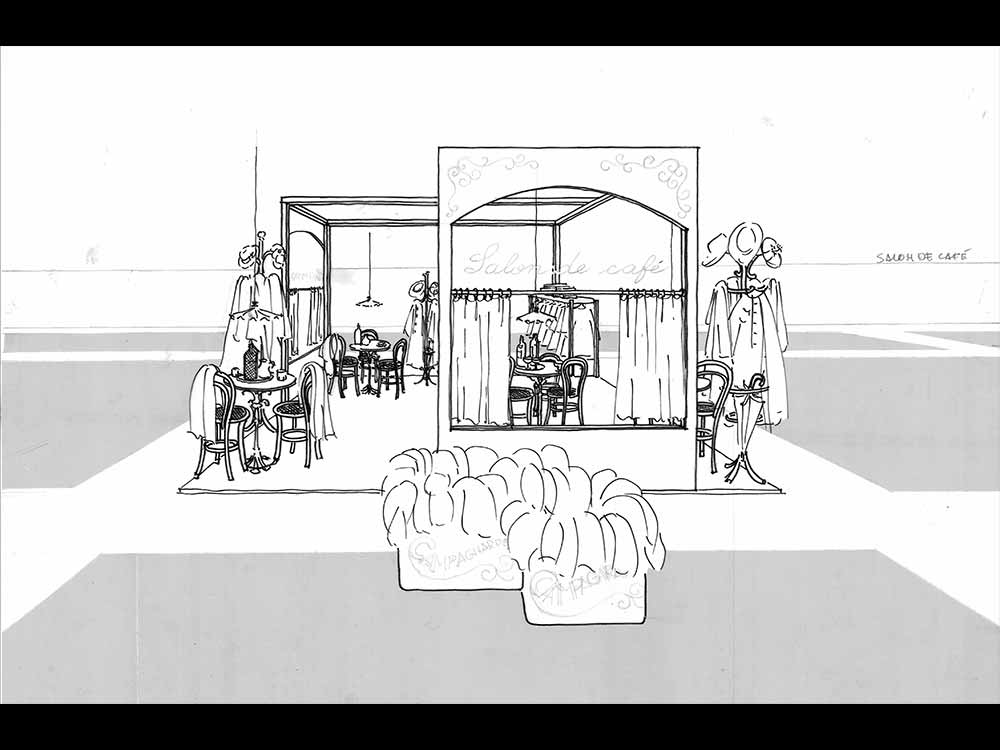
66 / 149 — Internal installation, Rosanna Monzini, "Salon de café". Proposta di allestimento per la manifestazione autunnale Les Campagnards, 1977
Hand-drawn picture on tracing paper colored screens
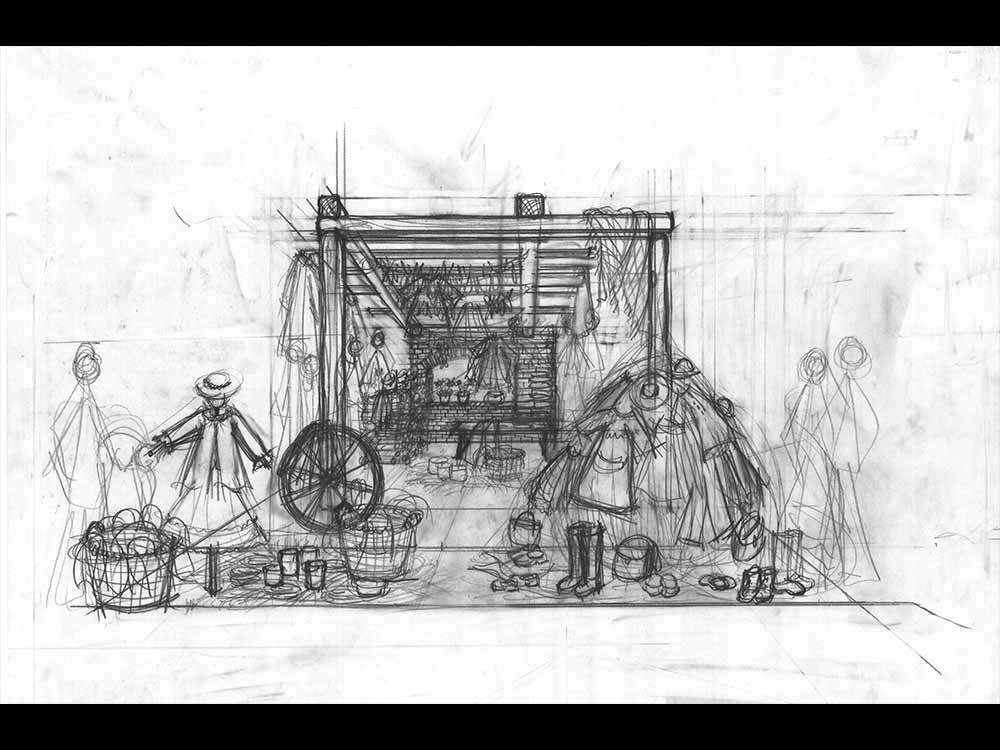
67 / 149 — Internal installation, Rosanna Monzini, "aia" per l'allestimento della manifestazione autunnale "Les Campagnards", 1977
Sketch, pencil on tracing paper

68 / 149 — Internal installation, Rosanna Monzini, aia. Proposta di allestimento per la manifestazione autunnale "Les Campagnards", 1977
Hand-drawn picture on tracing paper colored screens
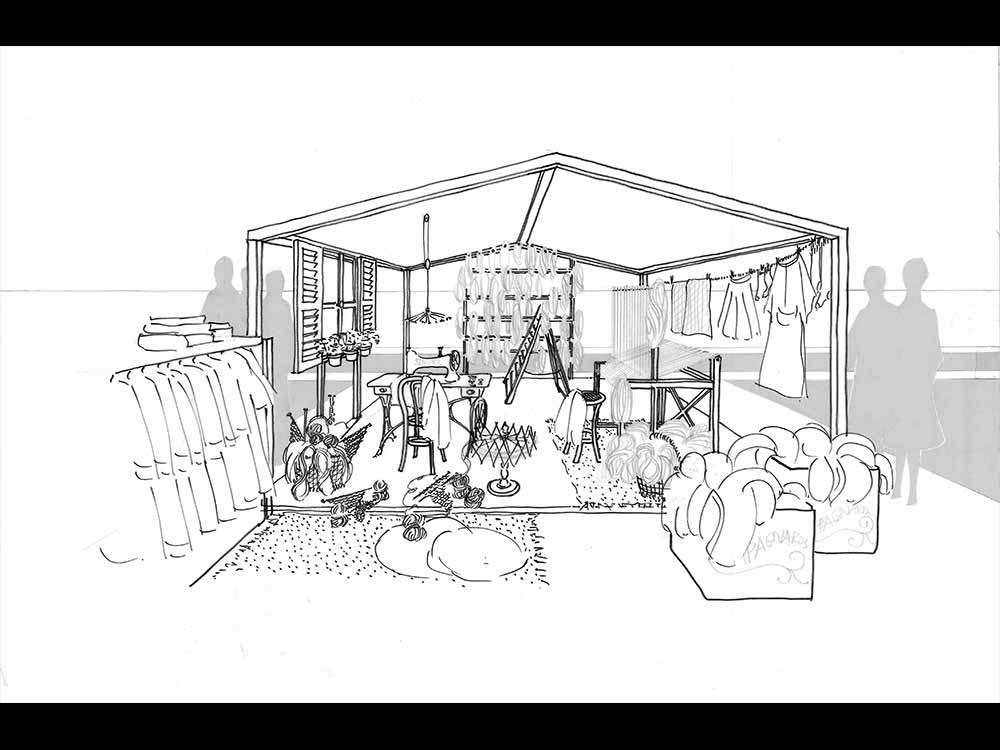
69 / 149 — Internal installation, Rosanna Monzini, boutique fantasia. Proposta di allestimento per la manifestazione autunnale "Les Campagnards", 1977
Hand-drawn picture on tracing paper colored screens

70 / 149 — Internal installation, Rosanna Monzini, camino. Proposta di allestimento per la manifestazione autunnale "Les Campagnards", 1977
Hand-drawn picture on tracing paper colored screens
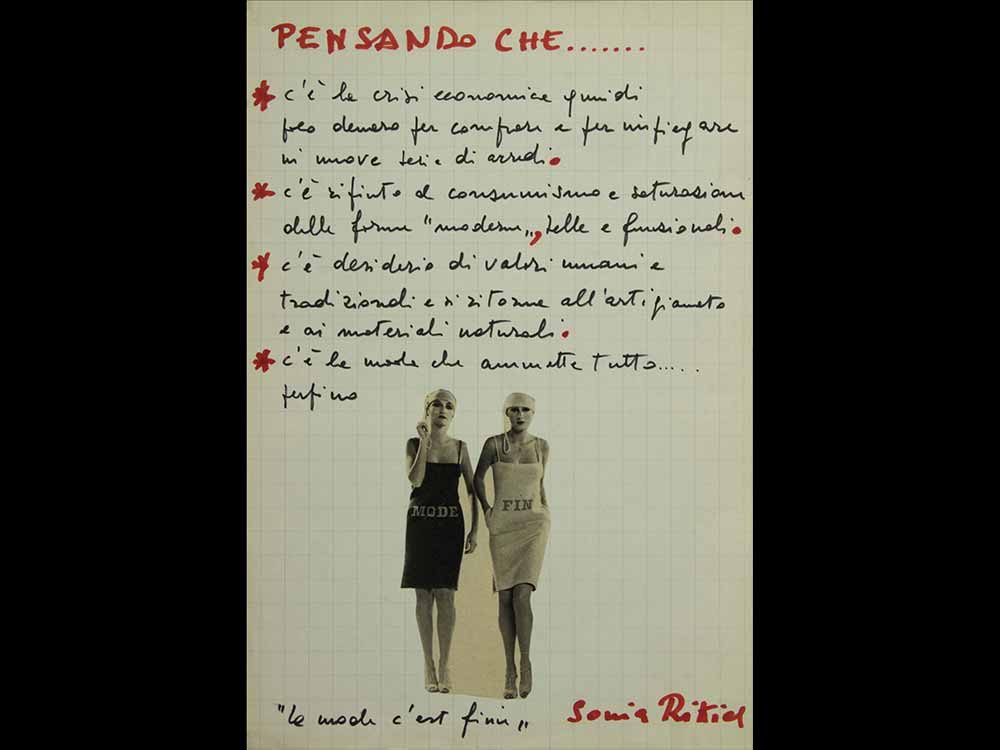
71 / 149 — Internal installation, Rosanna Monzini, Ready made scuola. Premesse, 1977
Folder page with ideas for set-up proposals

72 / 149 — Internal installation, Rosanna Monzini, Ready made scuola. Premesse, 1977
Folder page with ideas for set-up proposals
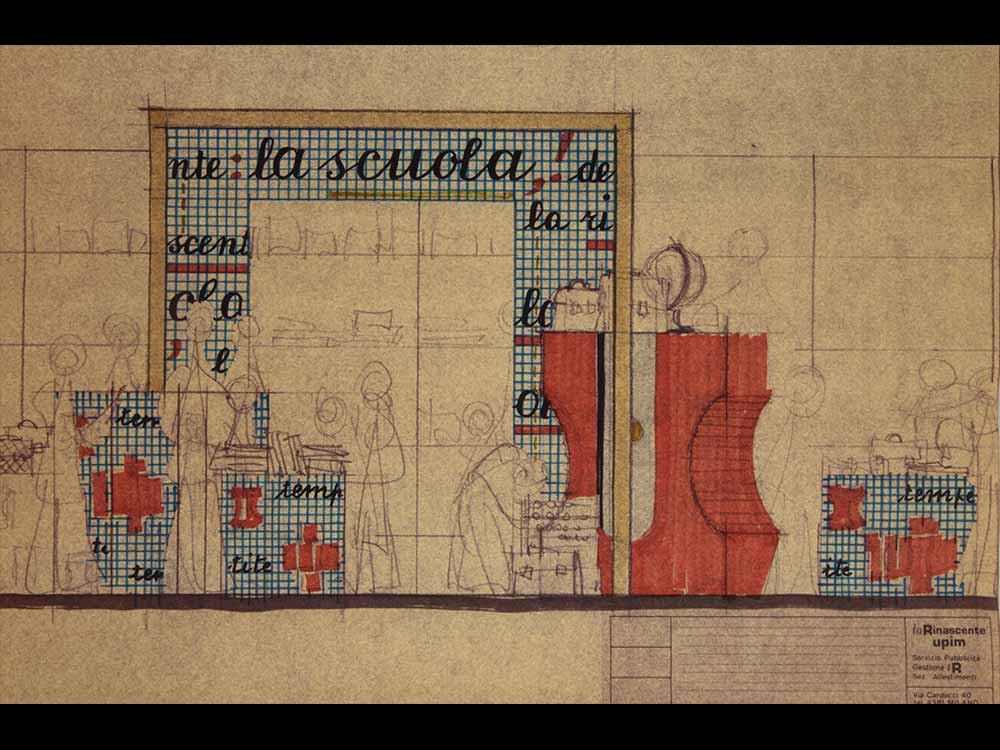
73 / 149 — Internal installation, Rosanna Monzini, La scuola. Progetto di allestimento, 1978
Hand-drawn picture on paperboard

74 / 149 — Internal installation, Rosanna Monzini, La scuola. Progetto di allestimento, 1978
Hand-drawn picture on paperboard
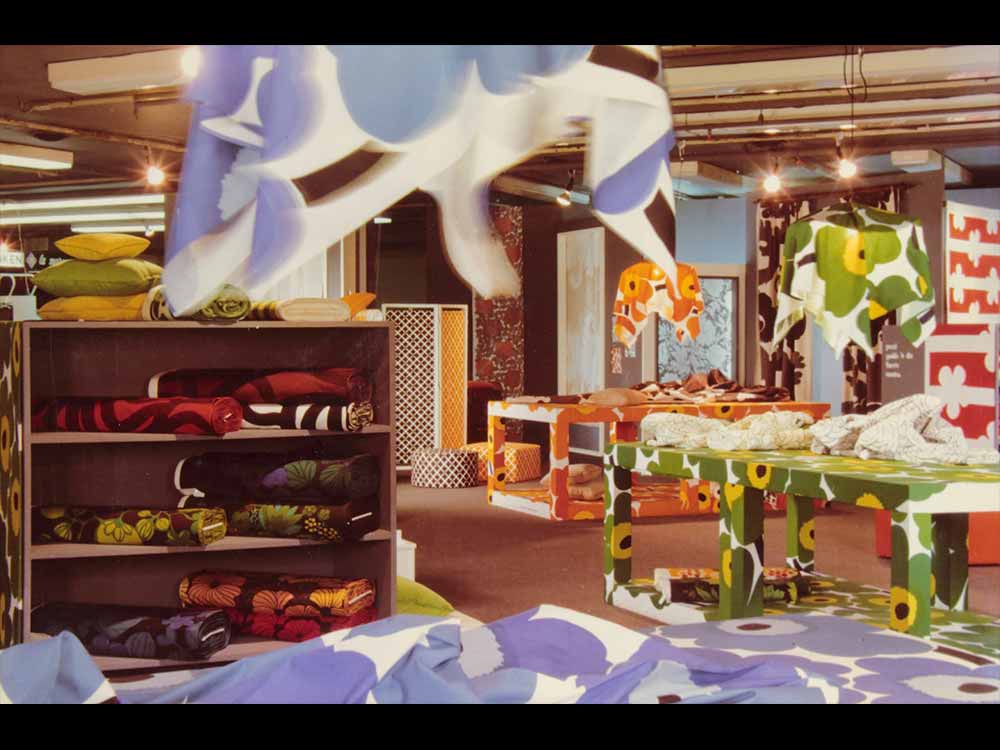
75 / 149 — Internal installation, Rosanna Monzini, allestimento su ispirazione, Marimekko, 1978-1979
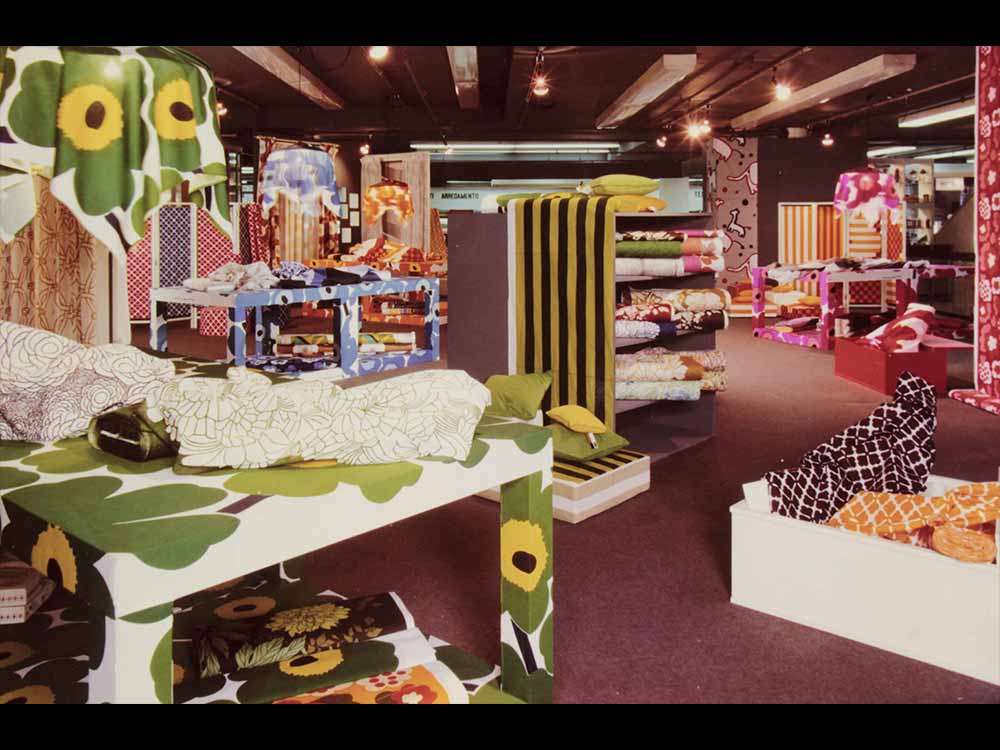
76 / 149 — Internal installation, Rosanna Monzini, allestimento su ispirazione, Marimekko, 1978-1979
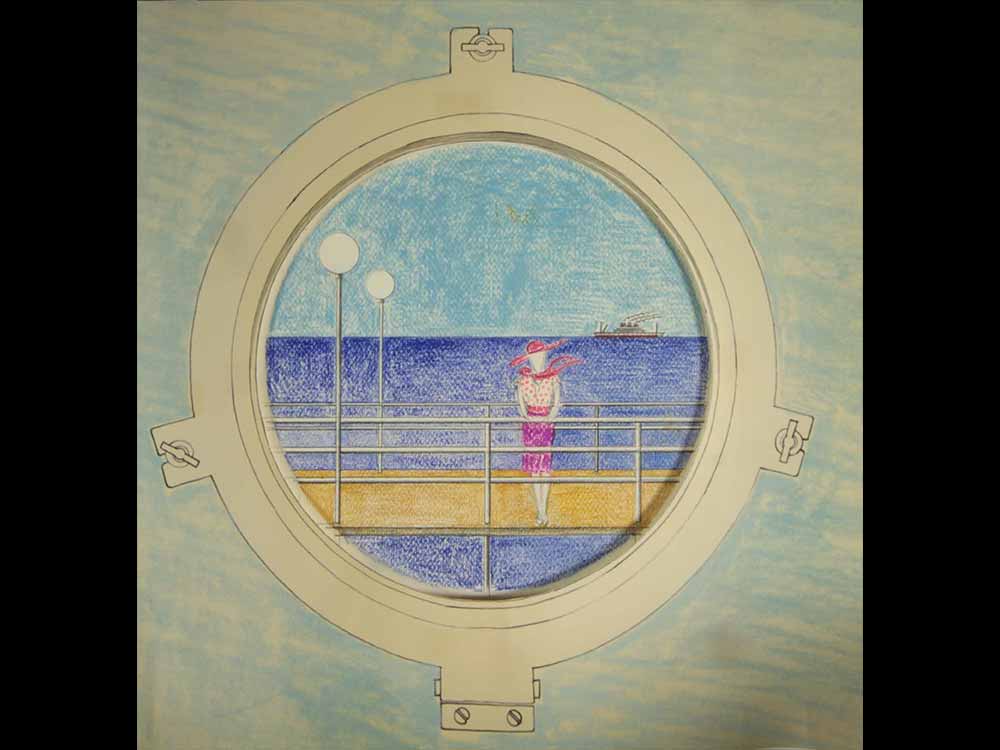
77 / 149 — Internal installation, Rosanna Monzini, Mare. Oblò effetto sole per proposta di scenografia, 1983
Overlapping hand-drawn pictures on paperboard
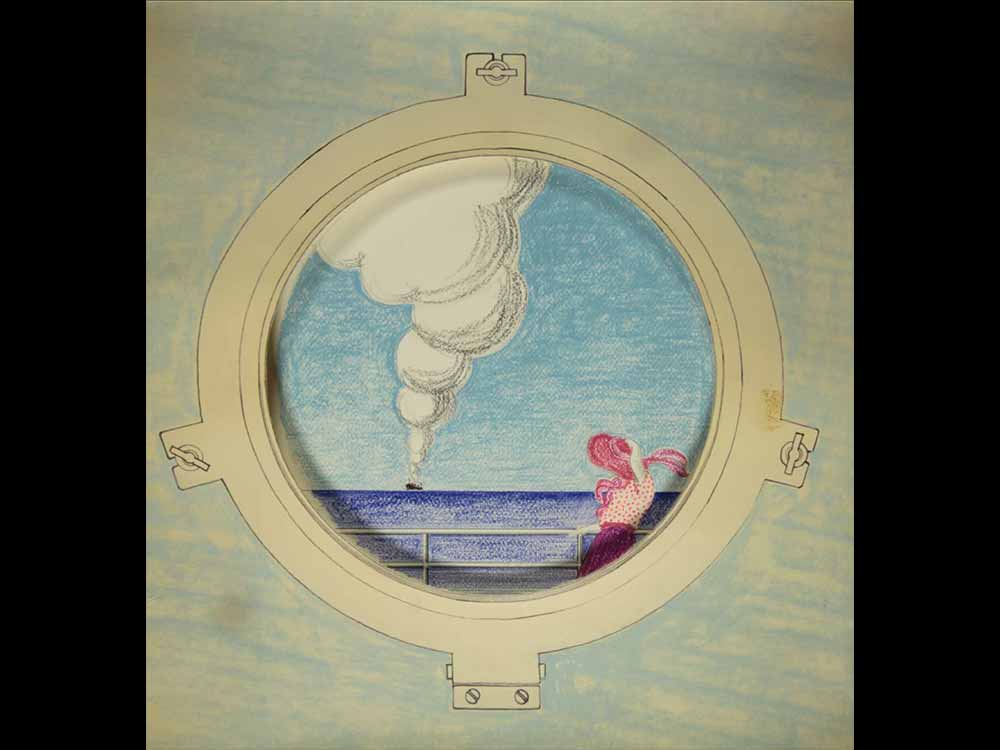
78 / 149 — Internal installation, Rosanna Monzini, Mare. Oblò effetto sole per proposta di scenografia, 1983
Overlapping hand-drawn pictures on paperboard

79 / 149 — Internal installation, Rosanna Monzini, Mare. Oblò effetto sole per proposta di scenografia, 1983
Overlapping hand-drawn pictures on paperboard
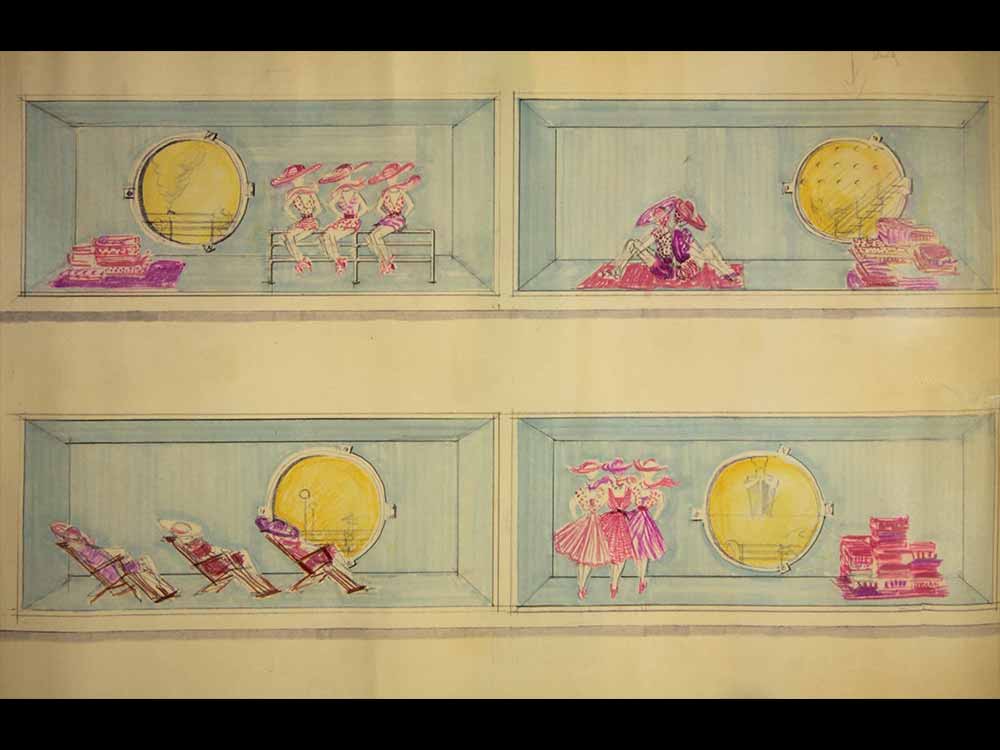
80 / 149 — Internal installation, Rosanna Monzini, Mare. Proposta di allestimento, 1983
Hand-drawn picture on paperboard
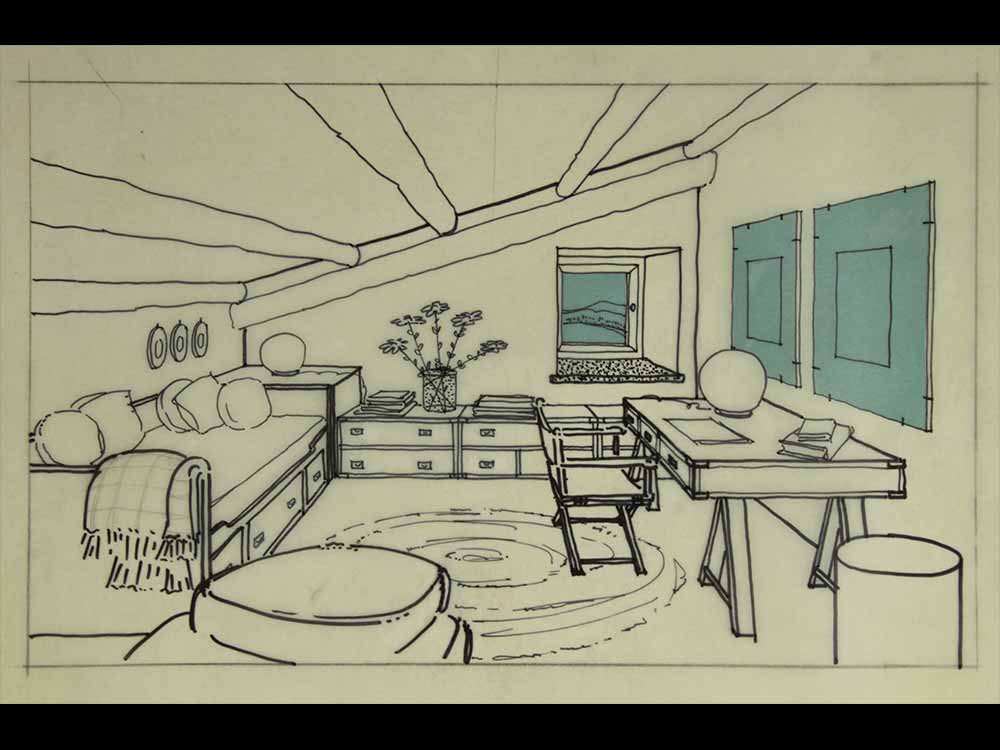
81 / 149 — Internal installation, Rosanna Monzini, Croff Centro Casa. Proposte di arredo, 1985 ca.
Hand-drawn picture on tracing paper screens

82 / 149 — Internal installation, Rosanna Monzini, Croff Centro Casa. Proposte di arredo, 1985 ca.
Hand-drawn picture on tracing paper screens

83 / 149 — Internal installation, Rosanna Monzini, Croff Centro Casa. Proposte di arredo, 1985 ca.
Hand-drawn picture on tracing paper
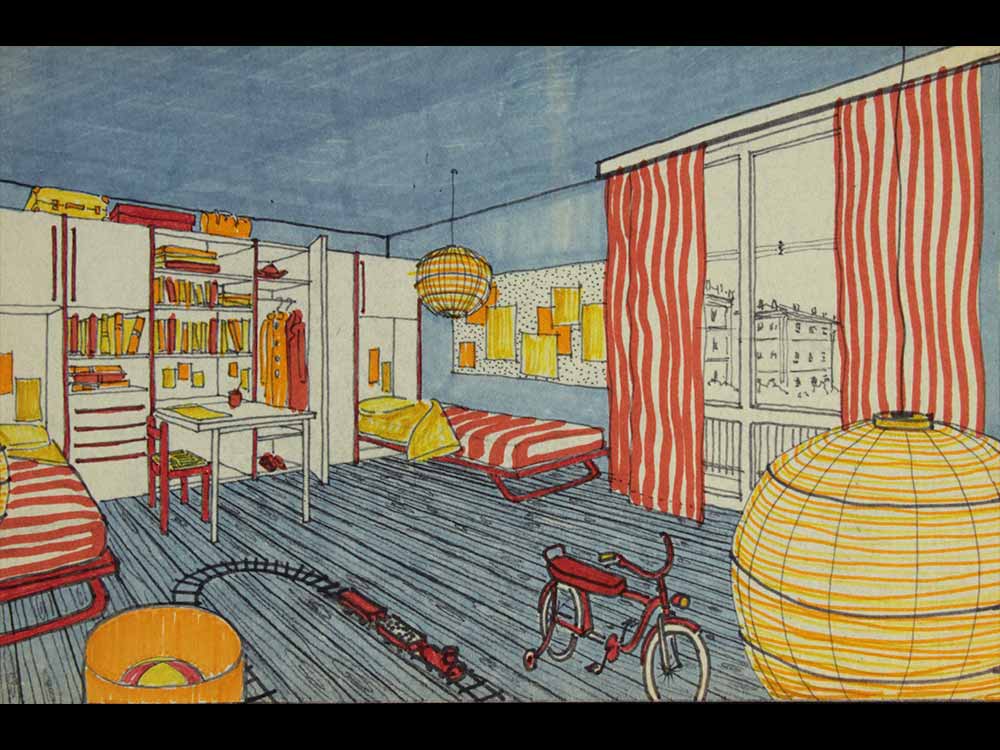
84 / 149 — Internal installation, Rosanna Monzini, Croff Centro Casa. Proposte di arredo, 1985 ca.
Hand-drawn picture on paperboard
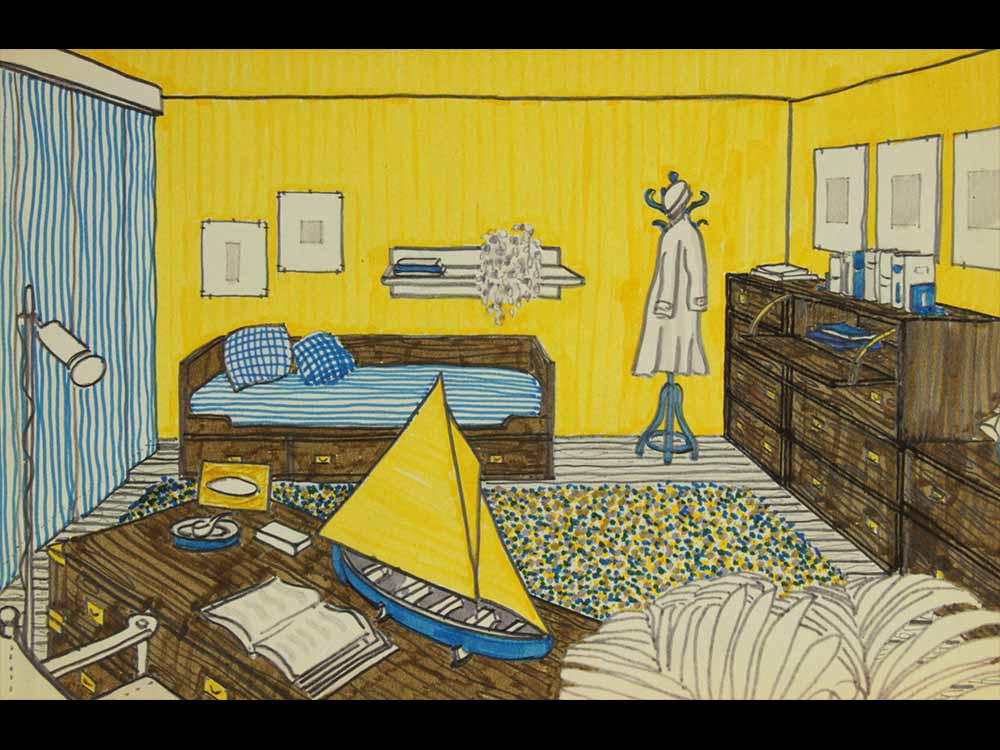
85 / 149 — Internal installation, Rosanna Monzini, Croff Centro Casa. Proposte di arredo, 1985 ca.
Hand-drawn picture on paperboard
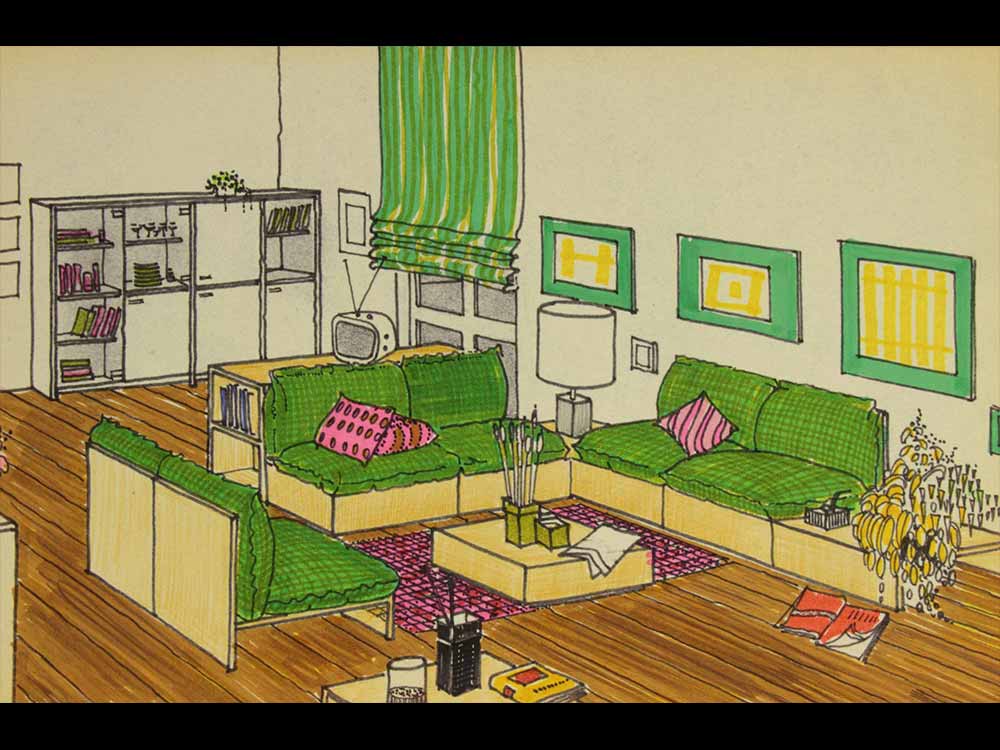
86 / 149 — Internal installation, Rosanna Monzini, Croff Centro Casa. Proposte di arredo, 1985 ca.
Hand-drawn picture on paperboard
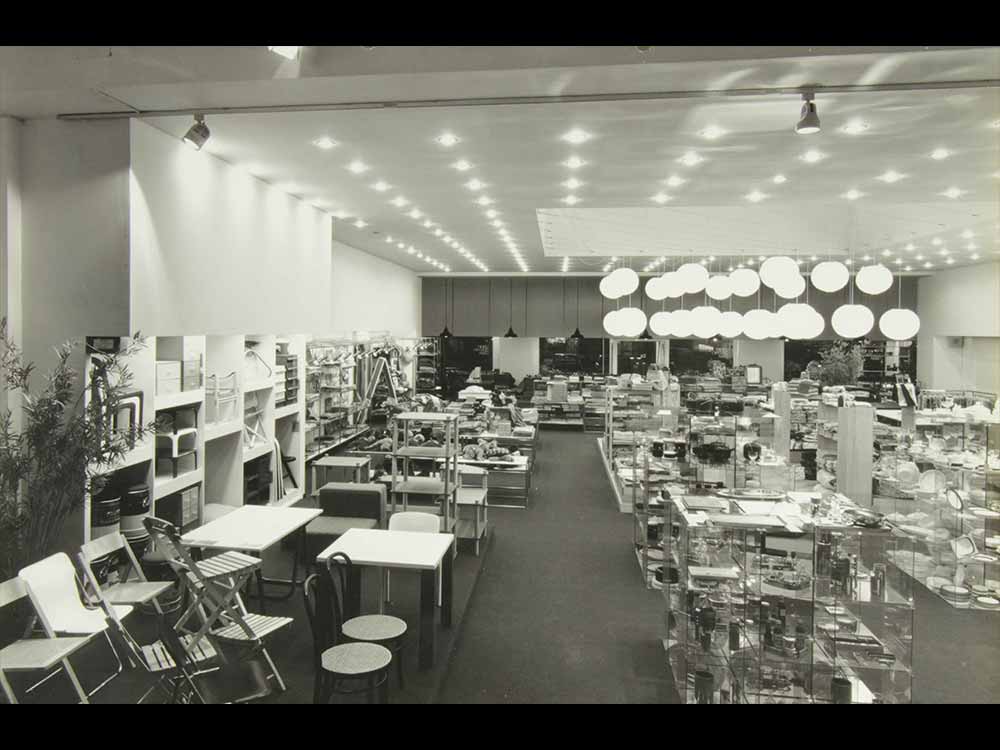
87 / 149 — Internal installation, Rosanna Monzini, Croff Centro Casa. Set-up di reparto, 1985 ca.
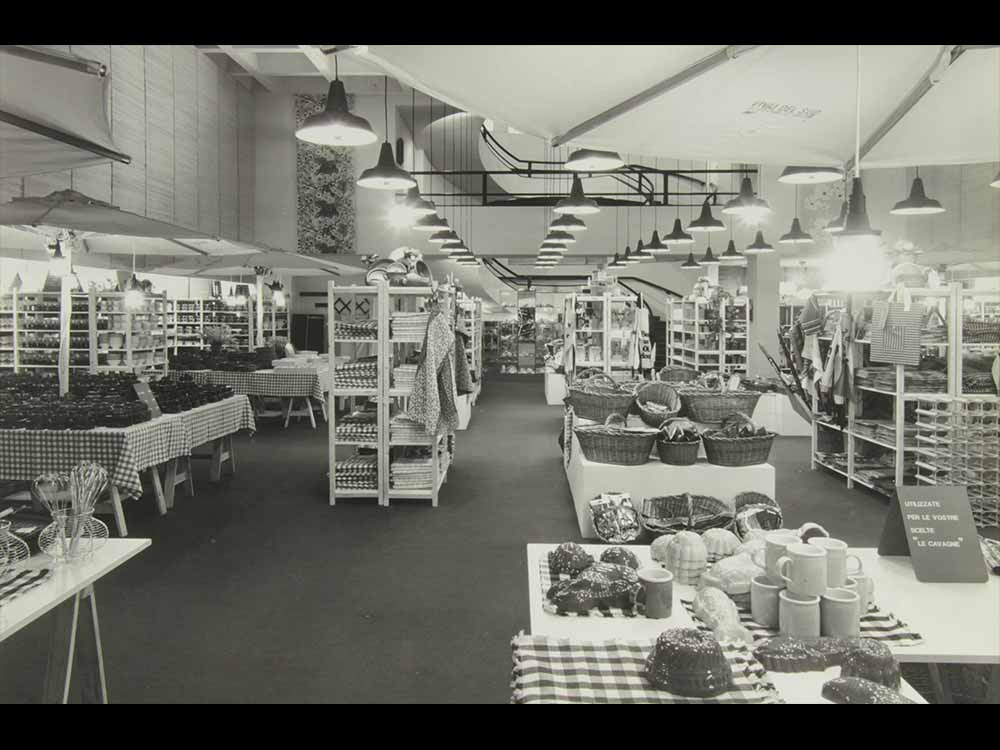
88 / 149 — Internal installation, Rosanna Monzini, Croff Centro Casa. Set-up di reparto, 1985 ca.
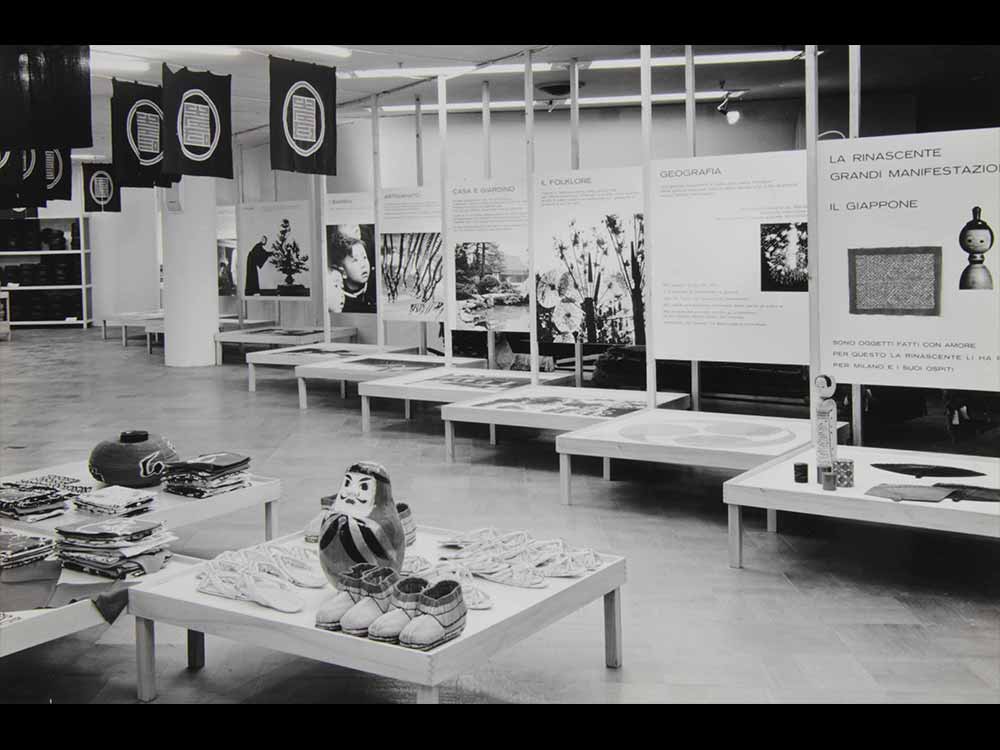
89 / 149 — Internal installation, Gian Carlo Ortelli, La Rinascente Grandi Manifestazioni. Il Giappone, 1956
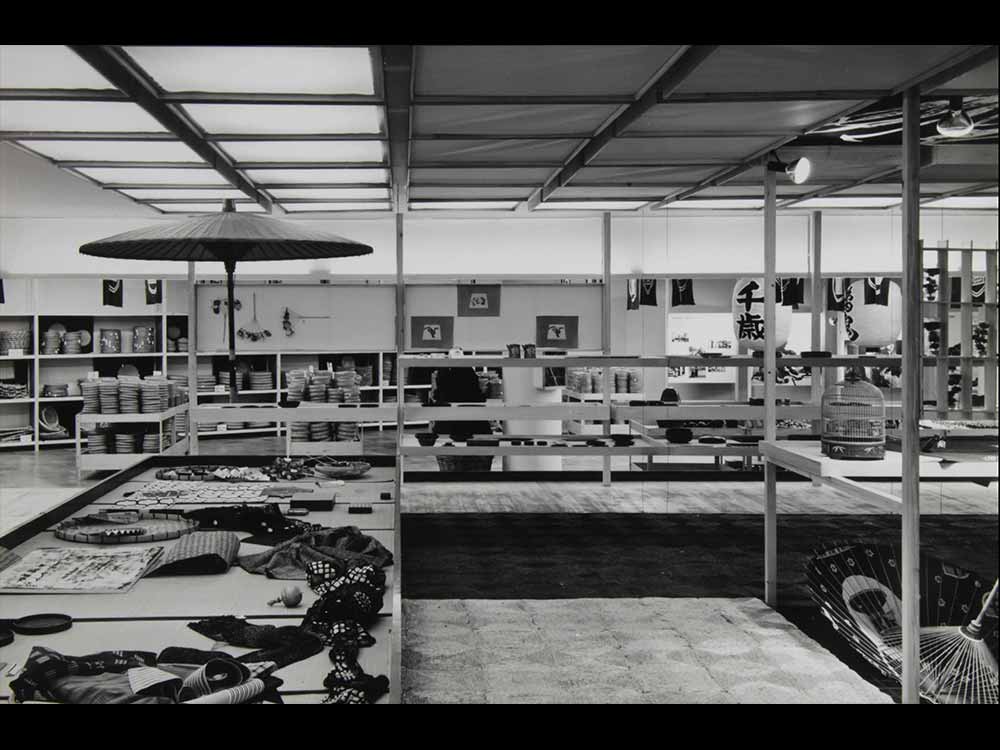
90 / 149 — Internal installation, Gian Carlo Ortelli, La Rinascente Grandi Manifestazioni. Il Giappone, 1956

91 / 149 — Internal installation, Gian Carlo Ortelli, La Rinascente Grandi Manifestazioni. Il Giappone, 1956
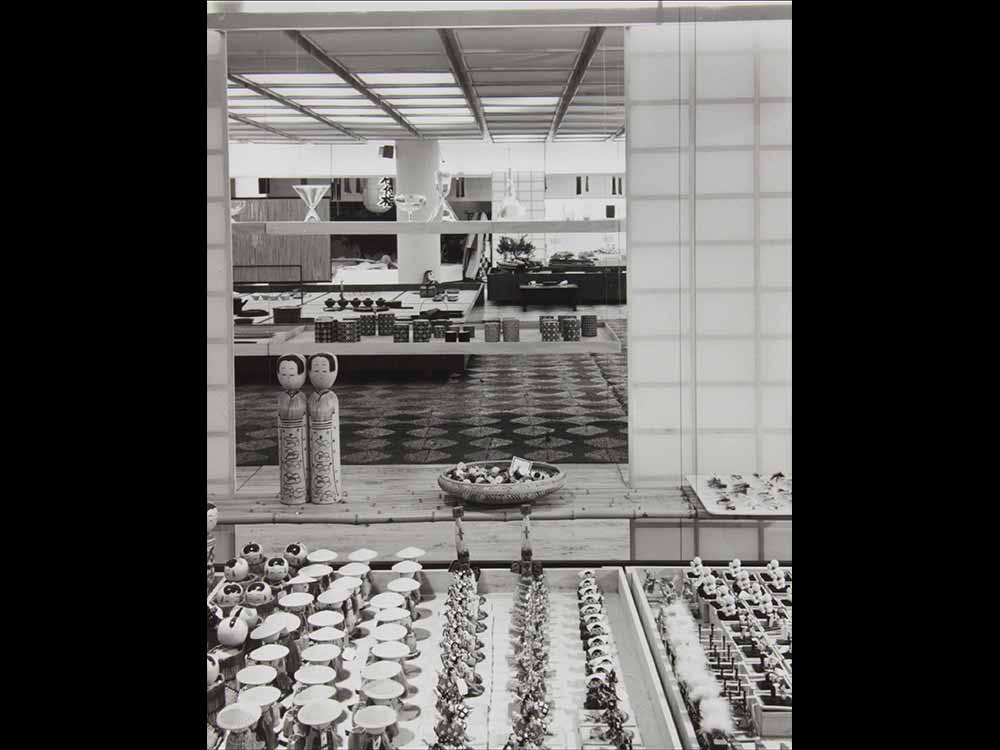
92 / 149 — Internal installation, Gian Carlo Ortelli, La Rinascente Grandi Manifestazioni. Il Giappone, 1956

93 / 149 — Internal installation, Gian Carlo Ortelli, La Rinascente Grandi Manifestazioni. Il Giappone, 1956
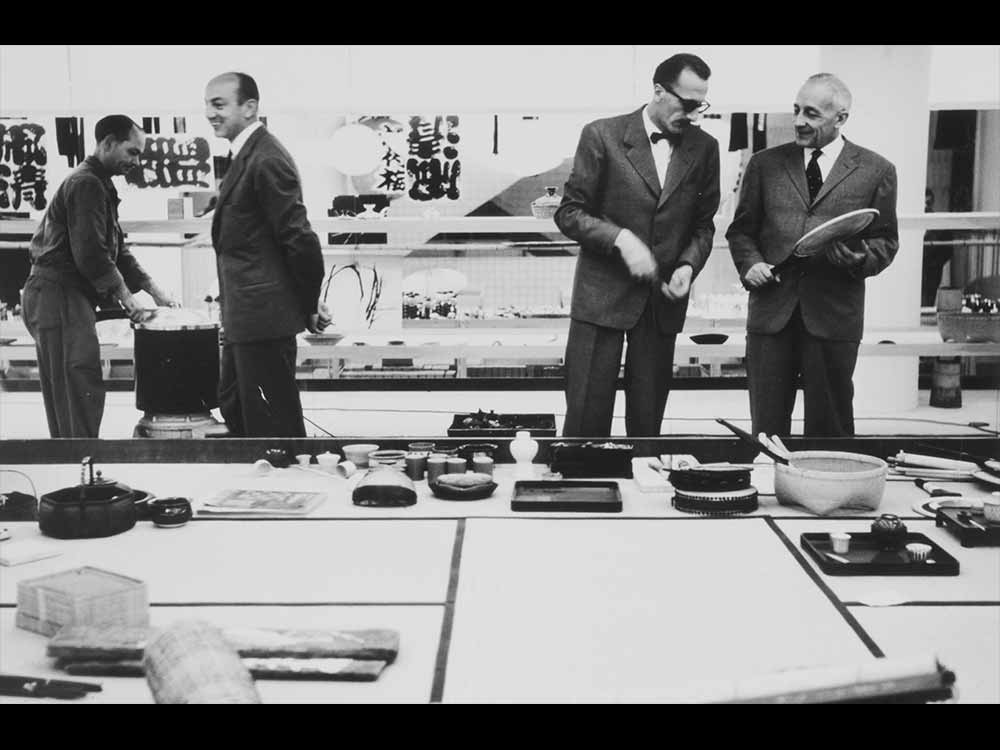
94 / 149 — Internal installation, Gian Carlo Ortelli, preparazione dell'allestimento per La Rinascente Grandi Manifestazioni. Il Giappone, 1956
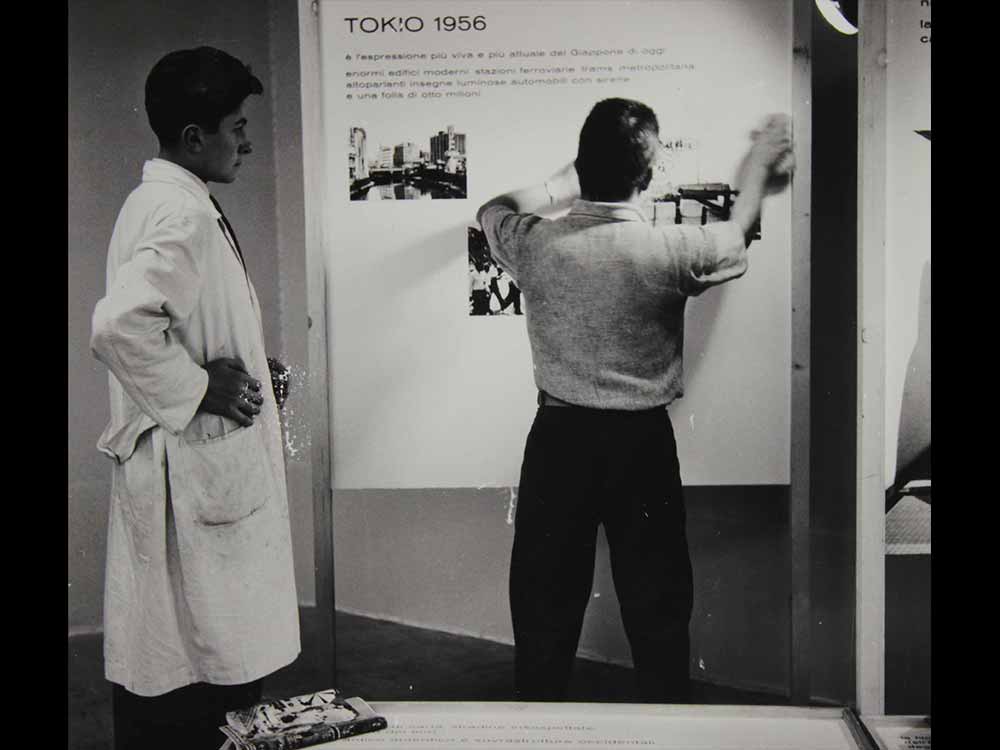
95 / 149 — Internal installation, Gian Carlo Ortelli, preparazione dell'allestimento per La Rinascente Grandi Manifestazioni. Il Giappone, 1956
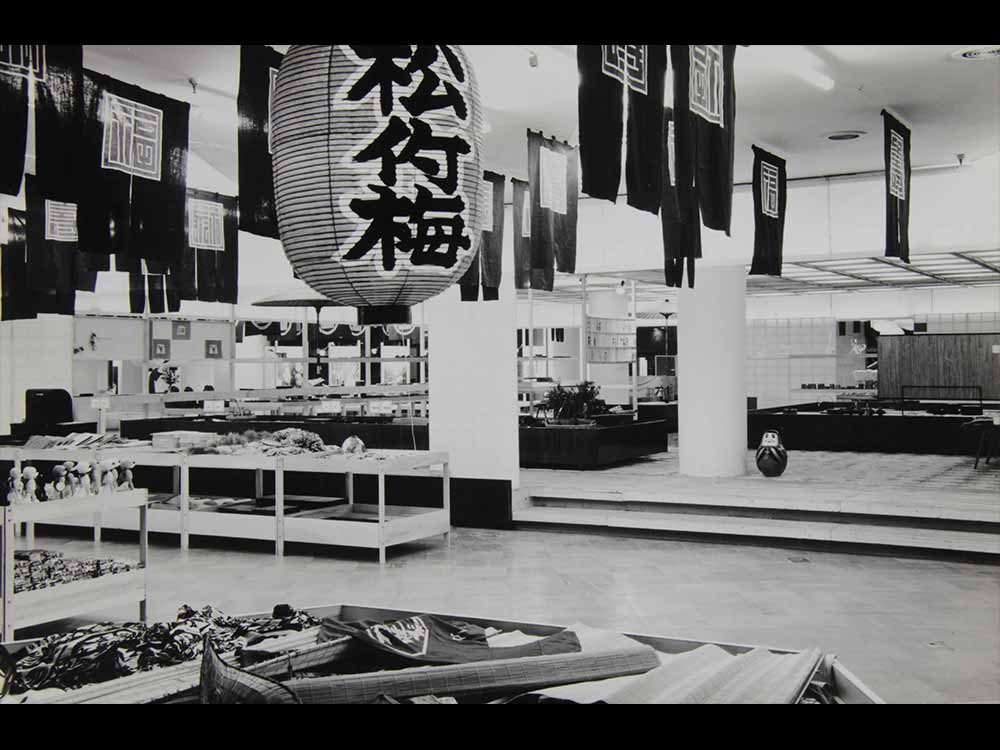
96 / 149 — Internal installation, Gian Carlo Ortelli, La Rinascente Grandi Manifestazioni. Il Giappone, 1956

97 / 149 — Internal installation, Gian Carlo Ortelli, La Rinascente Grandi Manifestazioni. Il Giappone, 1956
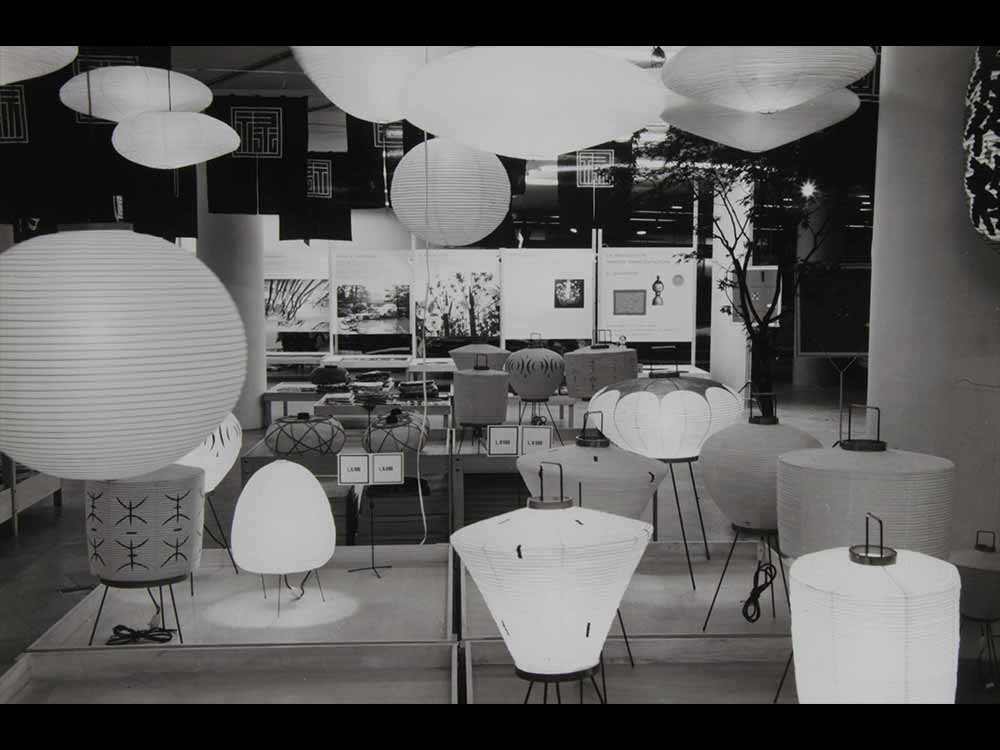
98 / 149 — Internal installation, Gian Carlo Ortelli, La Rinascente Grandi Manifestazioni. Il Giappone, 1956
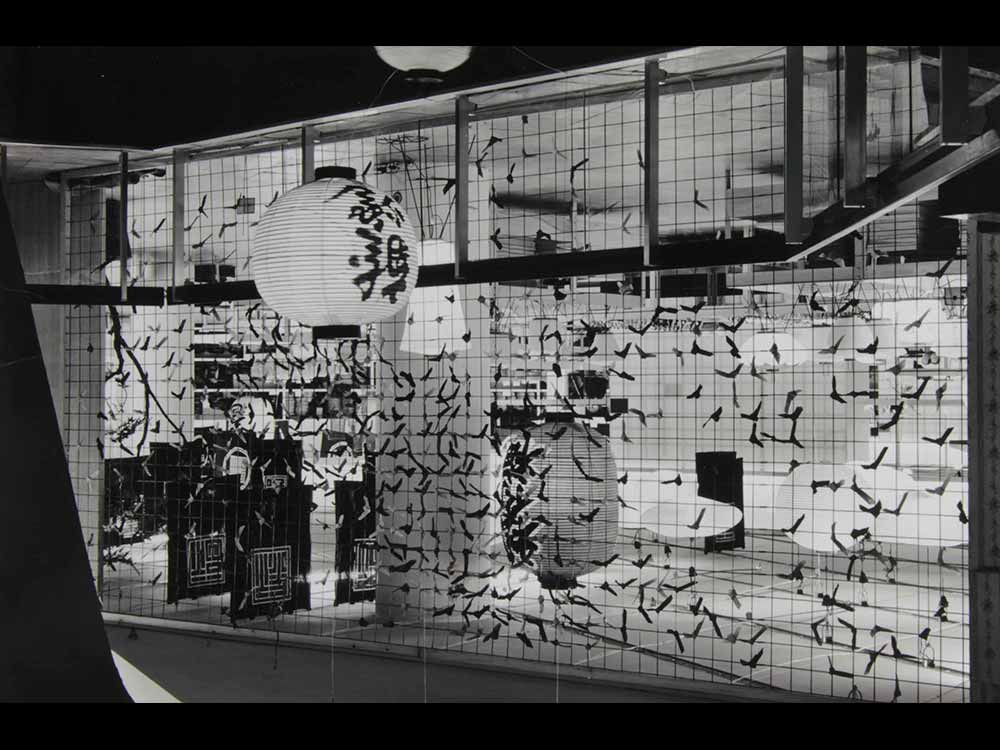
99 / 149 — Internal installation, Gian Carlo Ortelli, La Rinascente Grandi Manifestazioni. Il Giappone, 1956
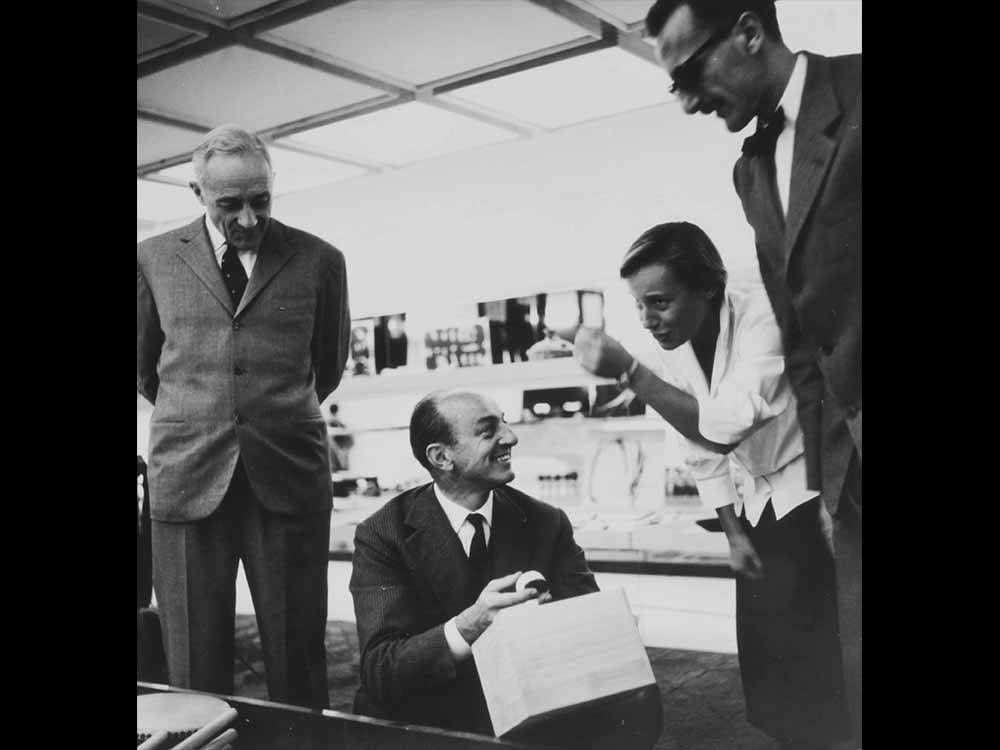
100 / 149 — Internal installation, Gian Carlo Ortelli, preparazione dell'allestimento per La Rinascente Grandi Manifestazioni. Il Giappone, 1956
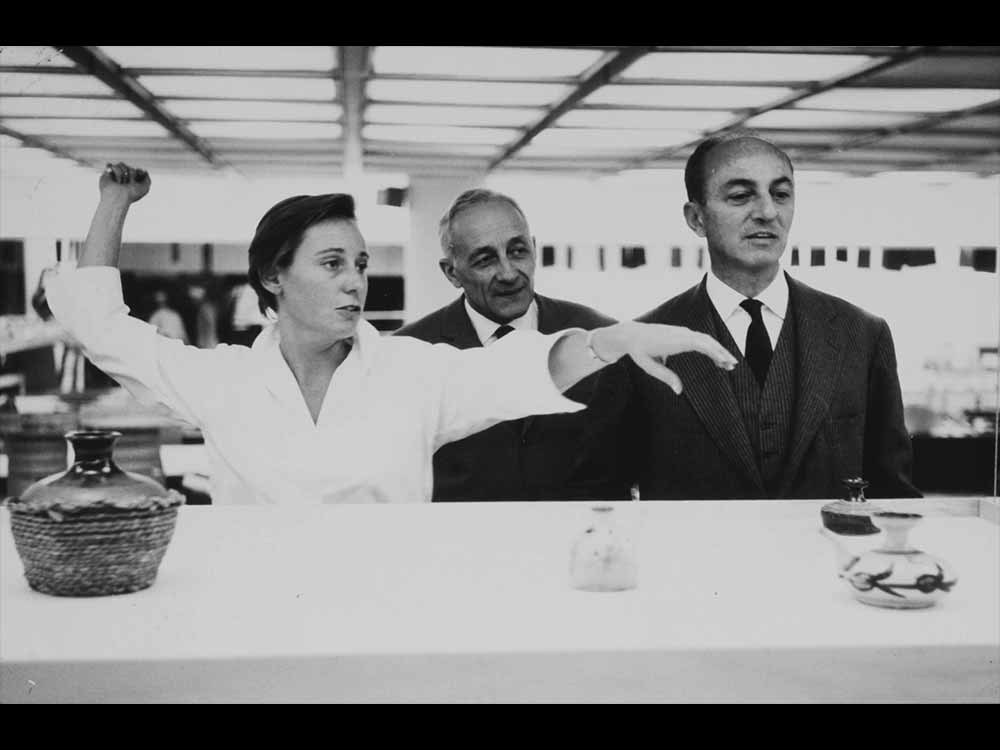
101 / 149 — Internal installation, Gian Carlo Ortelli, preparazione dell'allestimento per La Rinascente Grandi Manifestazioni. Il Giappone, 1956
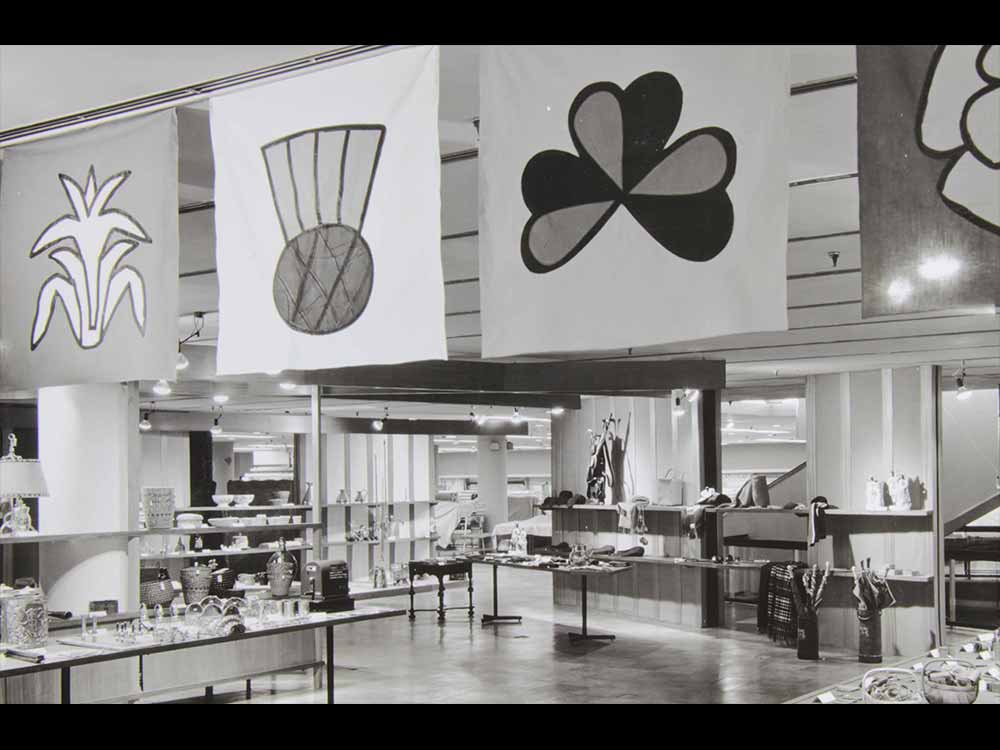
102 / 149 — Internal installation, Gian Carlo Ortelli, La Rinascente Grandi Manifestazioni. Gran Bretagna, 1957
Shop-fitter Attilia Faggian

103 / 149 — Internal installation, Gian Carlo Ortelli, La Rinascente Grandi Manifestazioni. Gran Bretagna, 1957
Shop-fitter Attilia Faggian

104 / 149 — Internal installation, Gian Carlo Ortelli, particolare dell'allestimento per "La Rinascente Grandi Manifestazioni. Gran Bretagna", 1957
Shop-fitter Attilia Faggian

105 / 149 — Internal installation, Gian Carlo Ortelli, particolare dell'allestimento per "La Rinascente Grandi Manifestazioni. Gran Bretagna", 1957
Shop-fitter Attilia Faggian
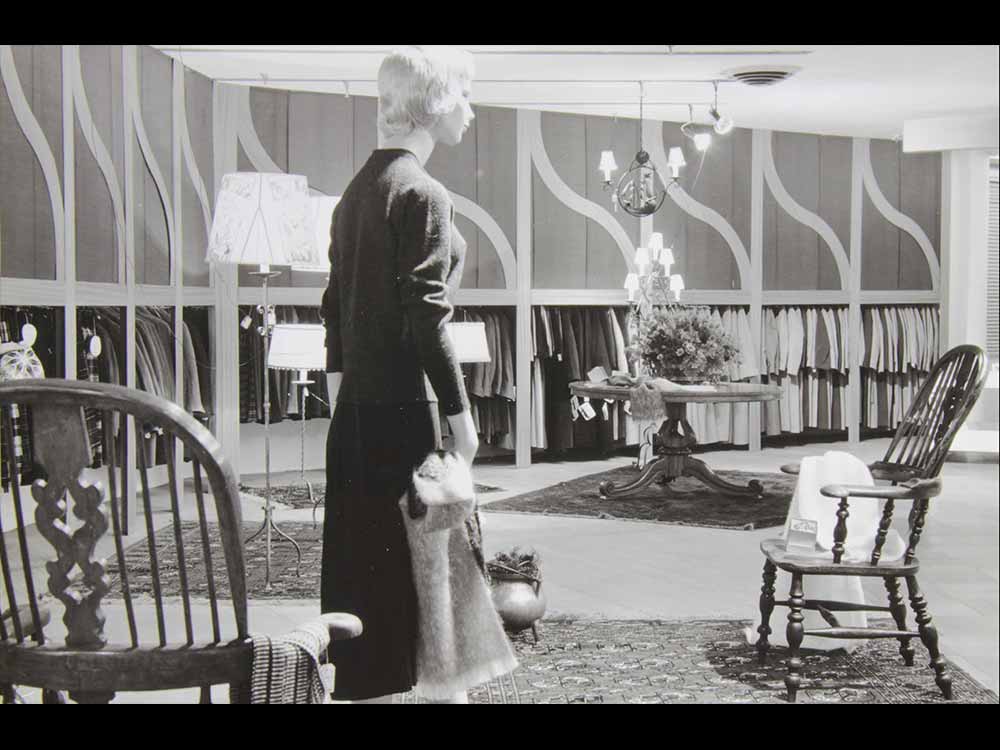
106 / 149 — Internal installation, Gian Carlo Ortelli, La Rinascente Grandi Manifestazioni. Gran Bretagna, 1957
Shop-fitter Attilia Faggian

107 / 149 — Internal installation, Gian Carlo Ortelli, La Rinascente Grandi Manifestazioni. Gran Bretagna, 1957
Shop-fitter Attilia Faggian
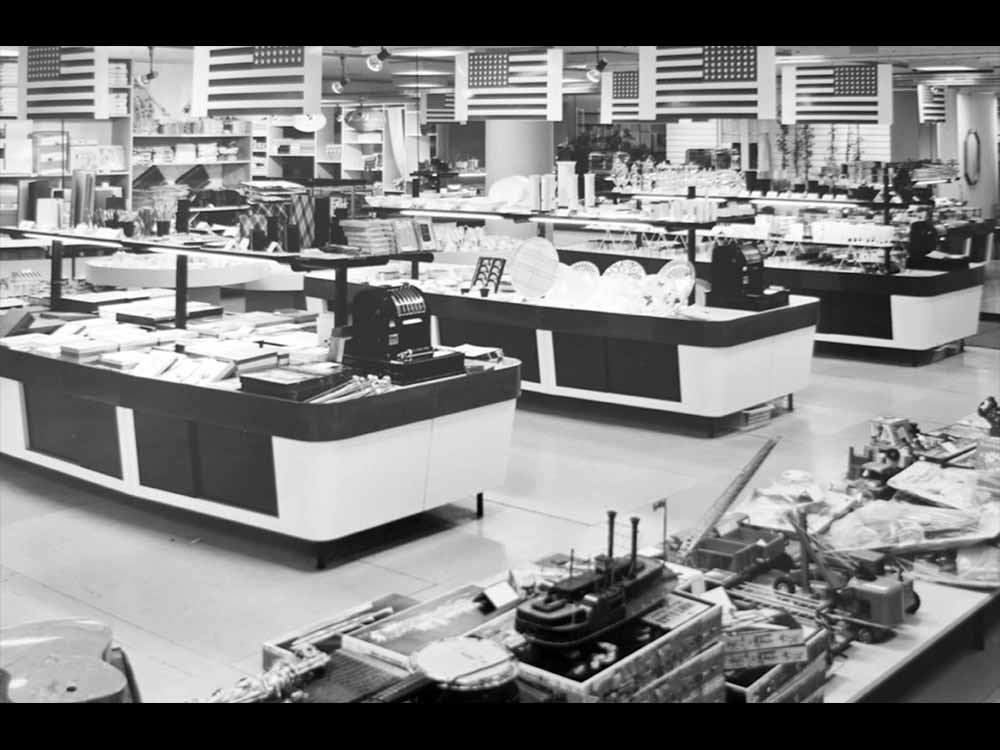
108 / 149 — Internal installation, Gian Carlo Ortelli, Un mese d'America a La Rinascente, 1958

109 / 149 — Internal installation, Gian Carlo Ortelli, cartelle colore per l'allestimento de "Un mese d'America a La Rinascente", 1958
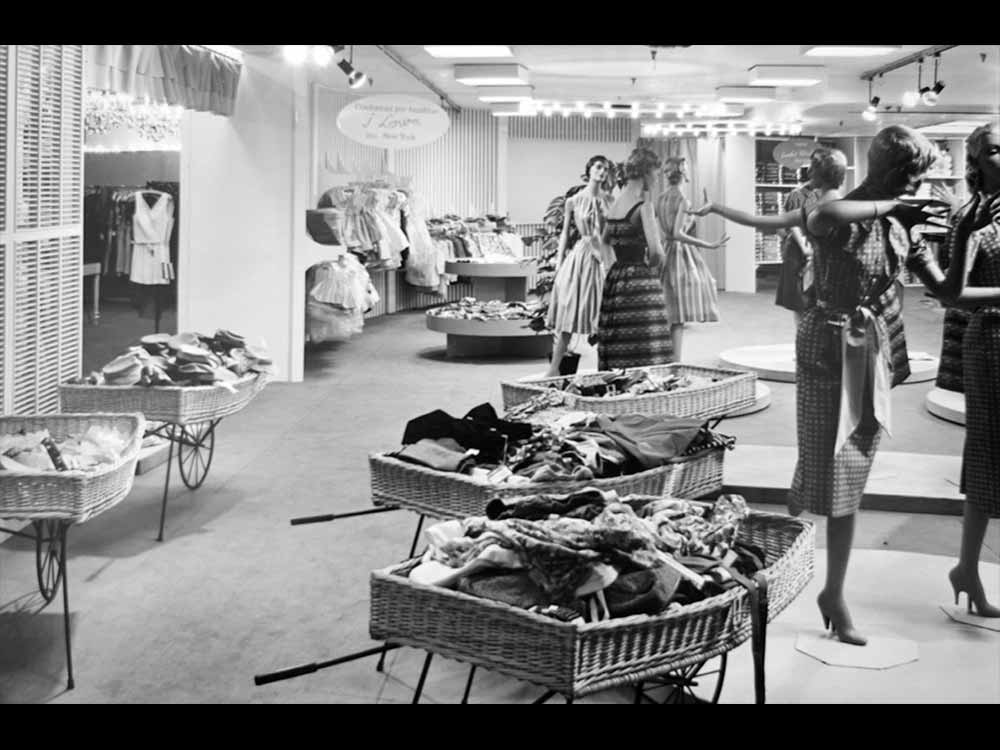
110 / 149 — Internal installation, Gian Carlo Ortelli, Un mese d'America a La Rinascente, 1958
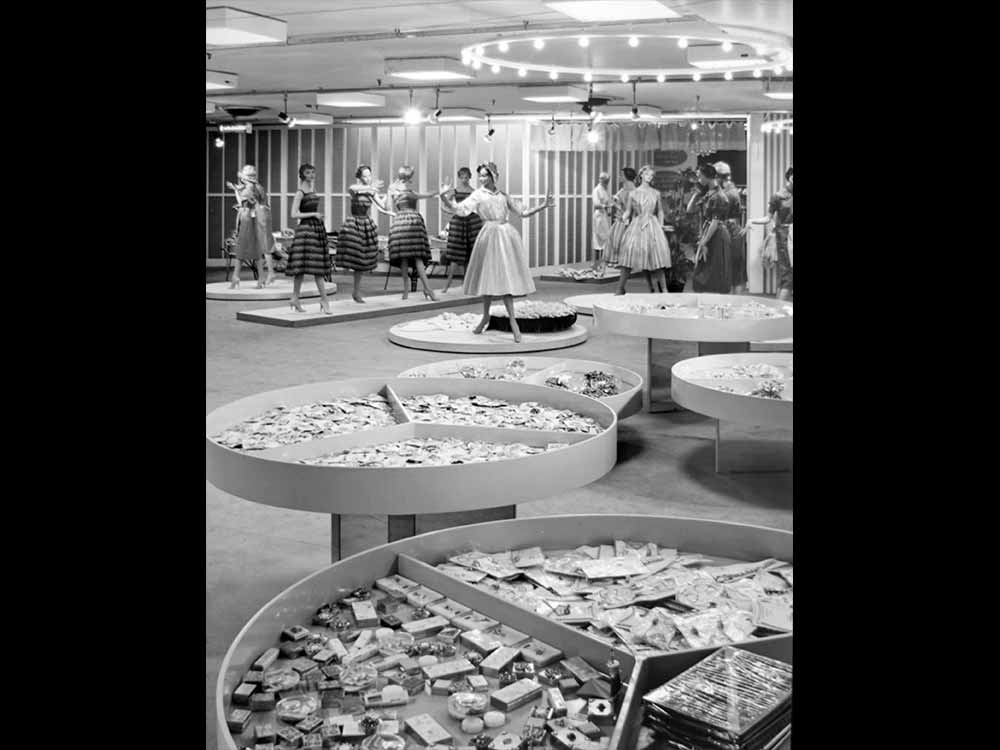
111 / 149 — Internal installation, Gian Carlo Ortelli, Un mese d'America a La Rinascente, 1958

112 / 149 — Internal installation, Gian Carlo Ortelli, Un mese d'America a La Rinascente, 1958
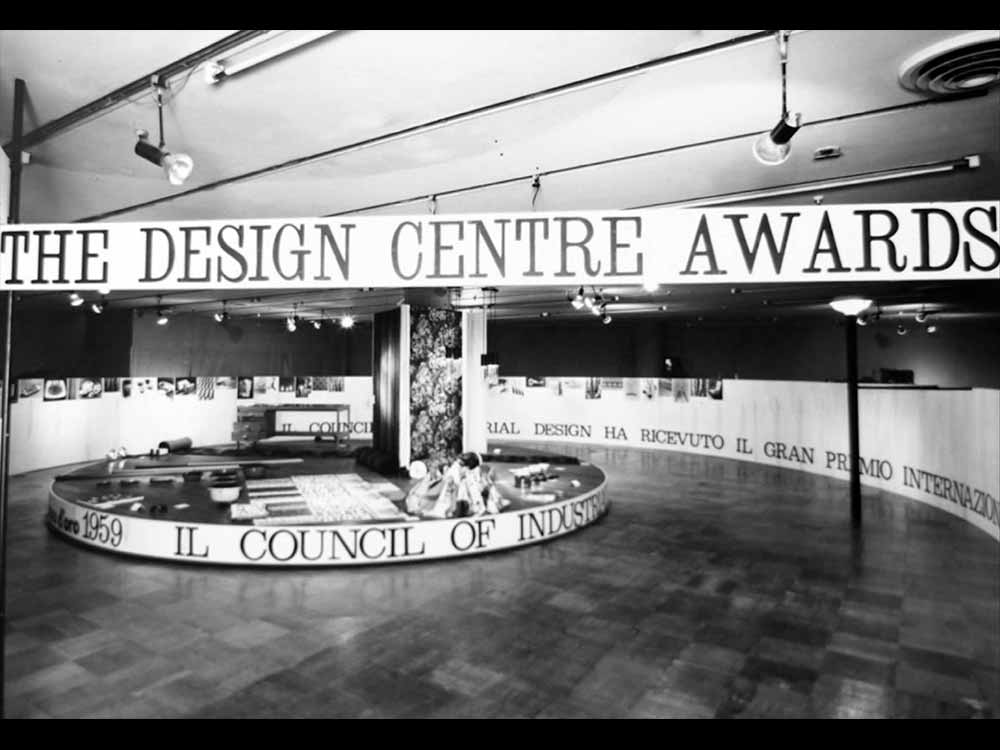
113 / 149 — Internal installation, Gian Carlo Ortelli, Council of industrial design, 1960
Exhibition dedicated to the Council, winner of the Great
International Prize la Rinascente Compasso d’Oro for the year

114 / 149 — Internal installation, Gian Carlo Ortelli, reparto moda donna de La Rinascente di Genova Via Roma, 1960 ca.

115 / 149 — Internal installation, Gian Carlo Ortelli, reparto cappelli per signora a La Rinascente di Genova Via Roma, 1960 ca.
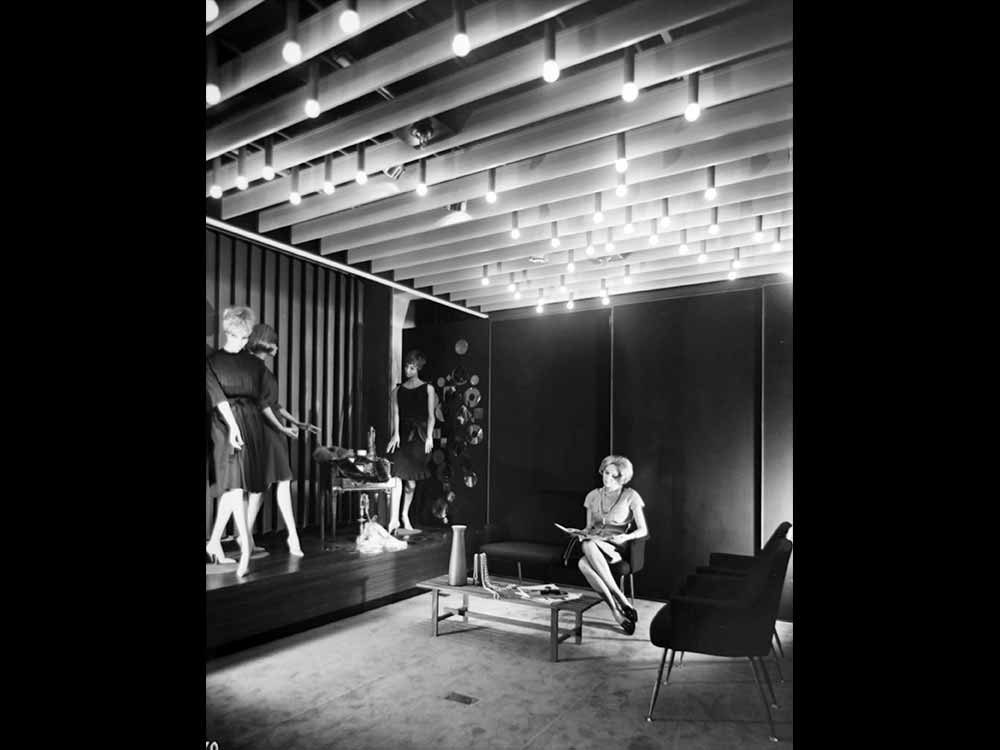
116 / 149 — Internal installation, Gian Carlo Ortelli, salottino al piano moda donna de La Rinascente di Roma Piazza Fiume, 1961

117 / 149 — Internal installation, Gian Carlo Ortelli, particolare del reparto cappelli per signora a La Rinascente di Roma Piazza Fiume, 1961
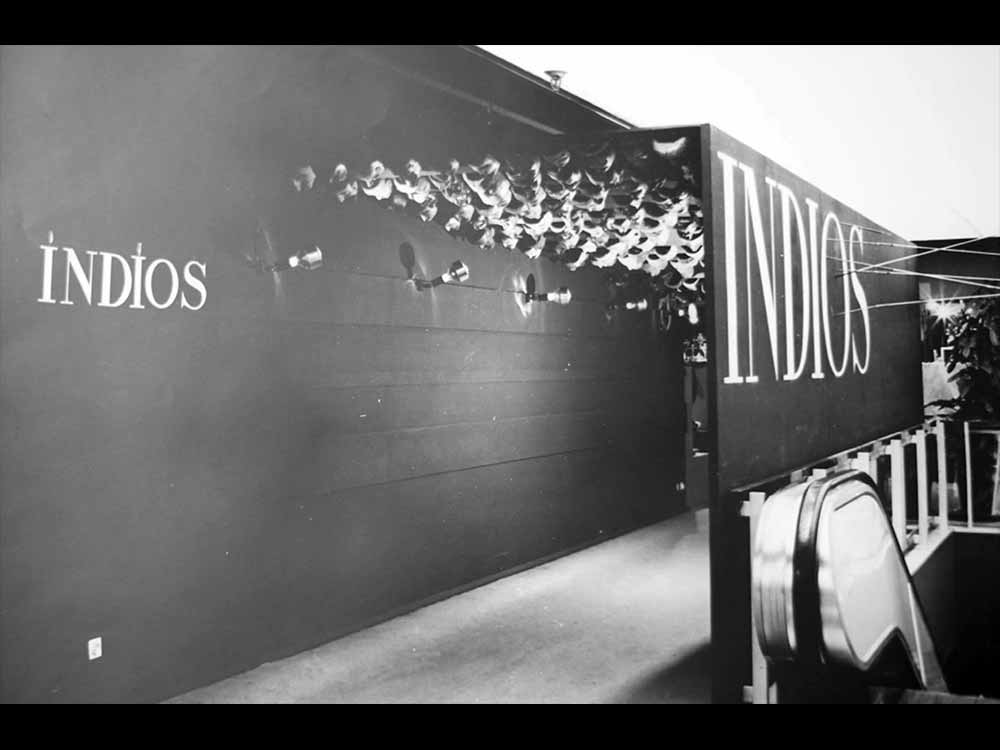
118 / 149 — Internal installation, Gian Carlo Ortelli, Roberto Sambonet, La Rinascente Grandi Manifestazioni. Indios, 1964
Shop-fitter Attilia Faggian
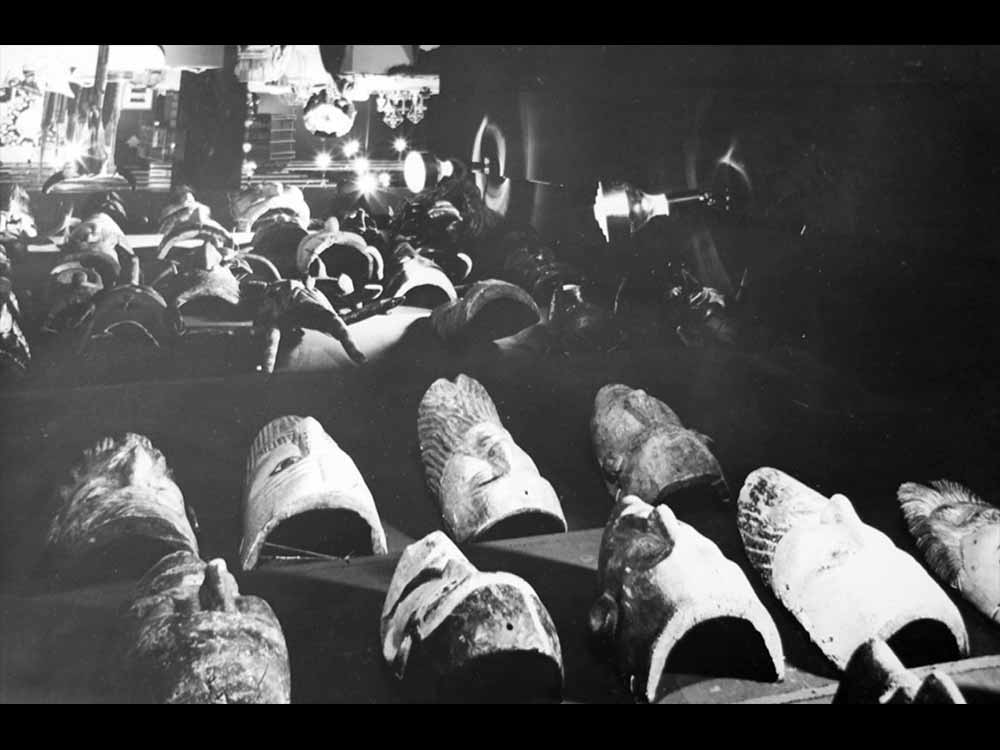
119 / 149 — Internal installation, Gian Carlo Ortelli, Roberto Sambonet, particolare dell'allestimento "La Rinascente Grandi Manifestazioni. Indios", 1964
Shop-fitter Attilia Faggian
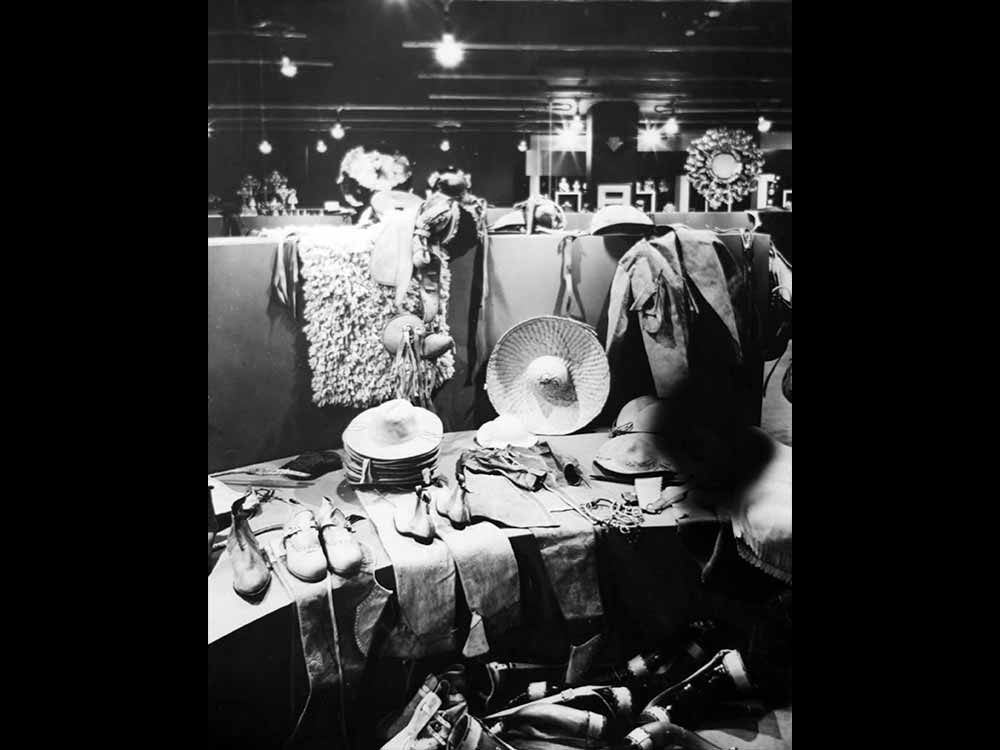
120 / 149 — Internal installation, Gian Carlo Ortelli, Roberto Sambonet, particolare dell'allestimento "La Rinascente Grandi Manifestazioni. Indios", 1964
Shop-fitter Attilia Faggian

121 / 149 — Internal installation, Gian Carlo Ortelli, Ritorno al '30, 1966
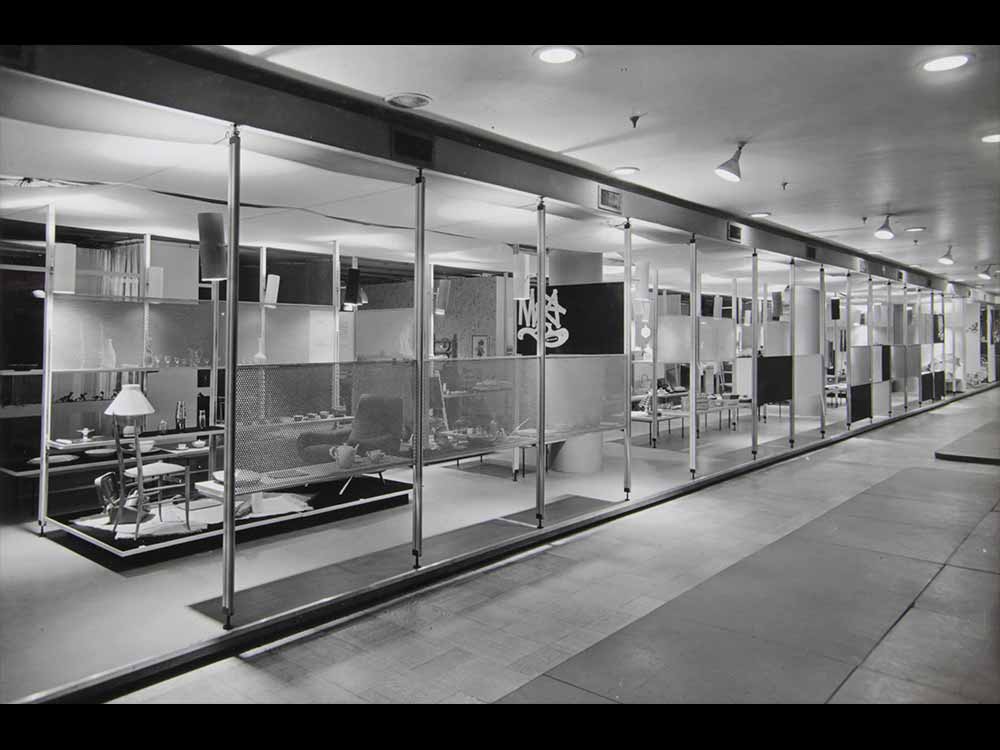
122 / 149 — Internal installation, Carlo Pagani, mostra "L'estetica del prodotto", 1953
Decorator Bruno Munari
Items chosen by Albe Steiner, Alberto Rosselli
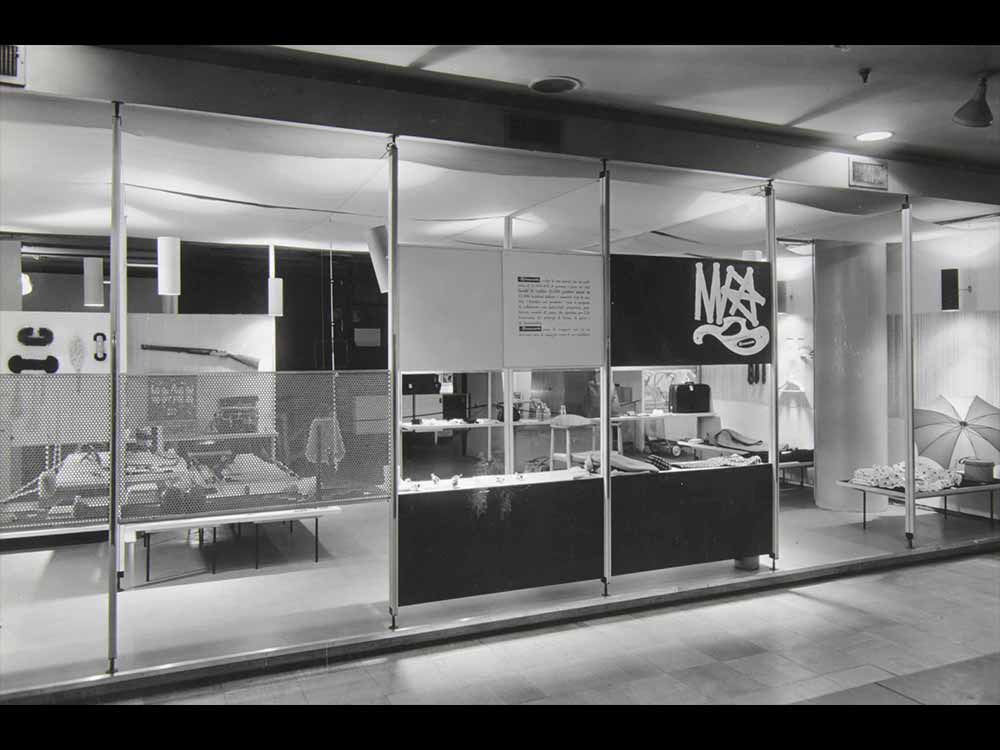
123 / 149 — Internal installation, Carlo Pagani, mostra "L'estetica del prodotto", 1953
Decorator Bruno Munari
Items chosen by Albe Steiner, Alberto Rosselli
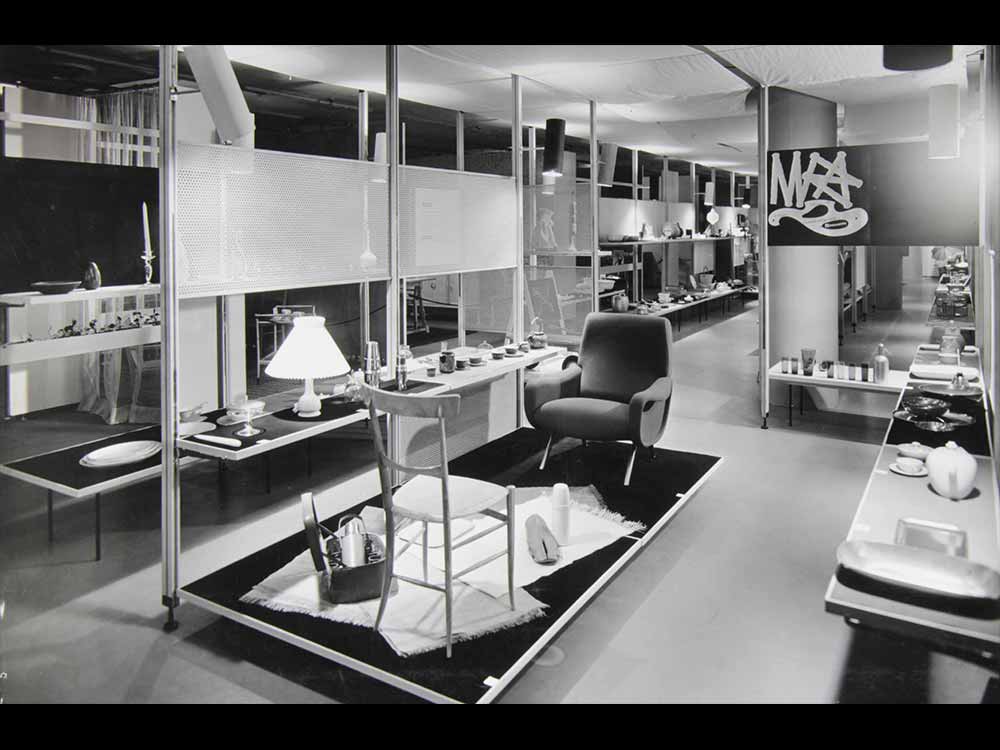
124 / 149 — Internal installation, Carlo Pagani, mostra "L'estetica del prodotto", 1953
Decorator Bruno Munari
Items chosen by Albe Steiner, Alberto Rosselli
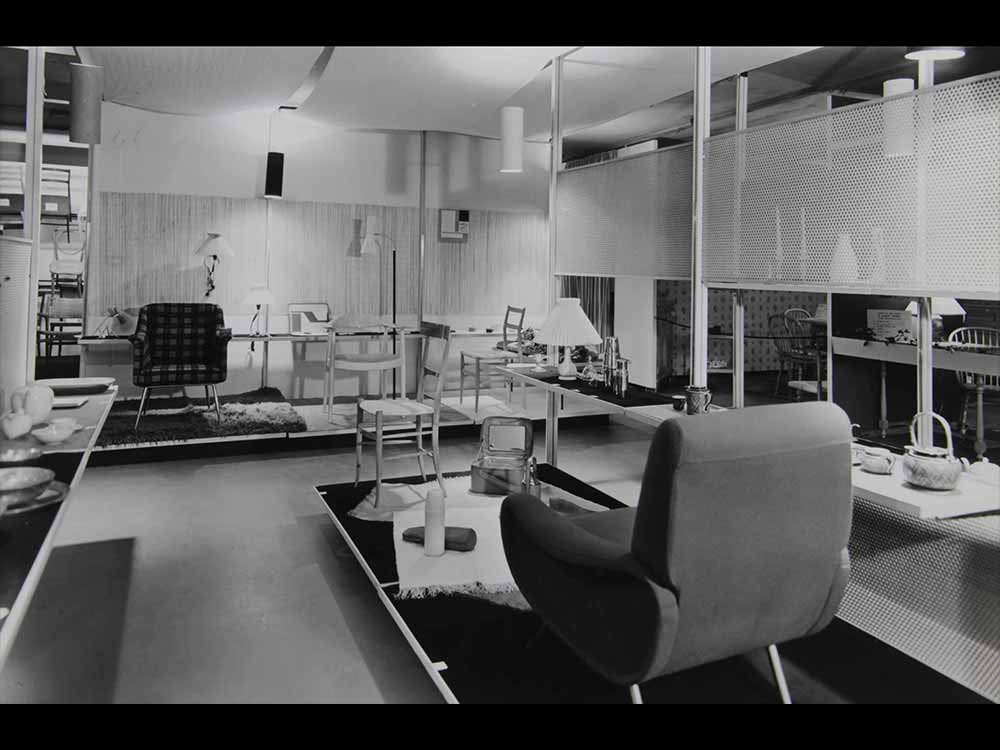
125 / 149 — Internal installation, Carlo Pagani, mostra "L'estetica del prodotto", 1953
Decorator Bruno Munari
Items chosen by Albe Steiner, Alberto Rosselli
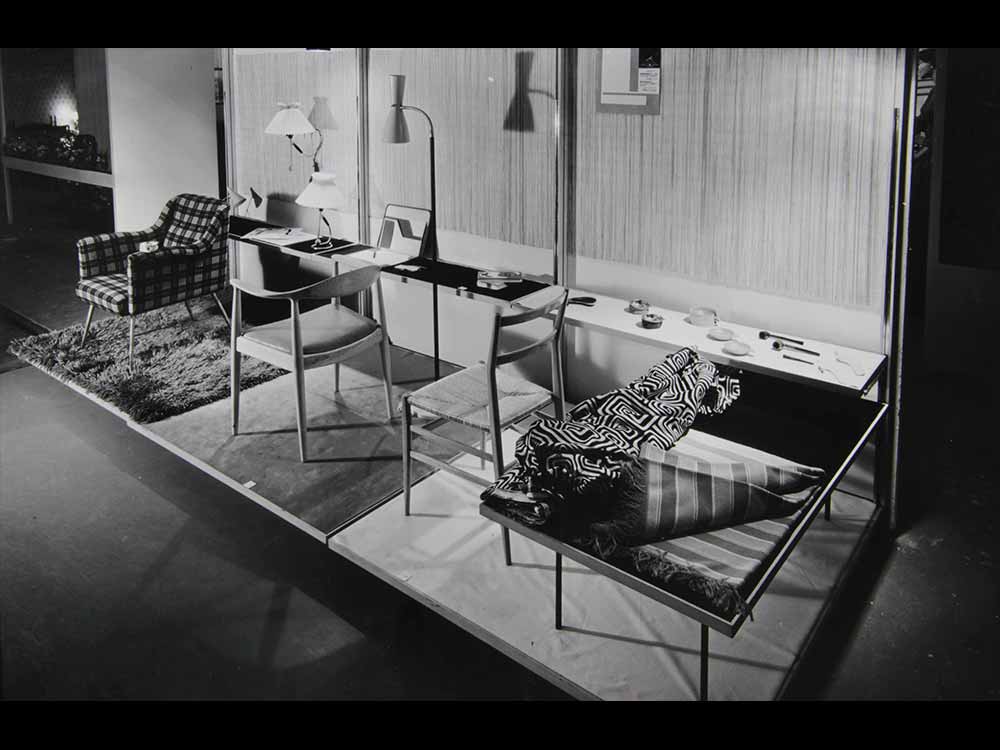
126 / 149 — Internal installation, Carlo Pagani, mostra "L'estetica del prodotto", 1953
Decorator Bruno Munari
Items chosen by Albe Steiner, Alberto Rosselli
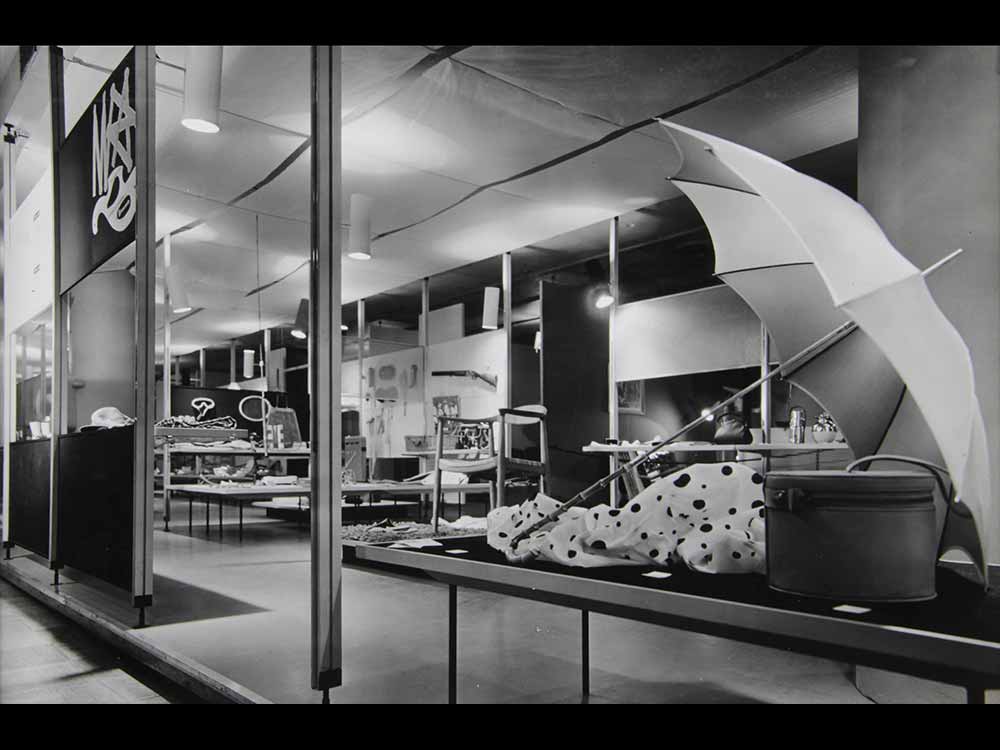
127 / 149 — Internal installation, Carlo Pagani, mostra "L'estetica del prodotto", 1953
Decorator Bruno Munari
Items chosen by Albe Steiner, Alberto Rosselli
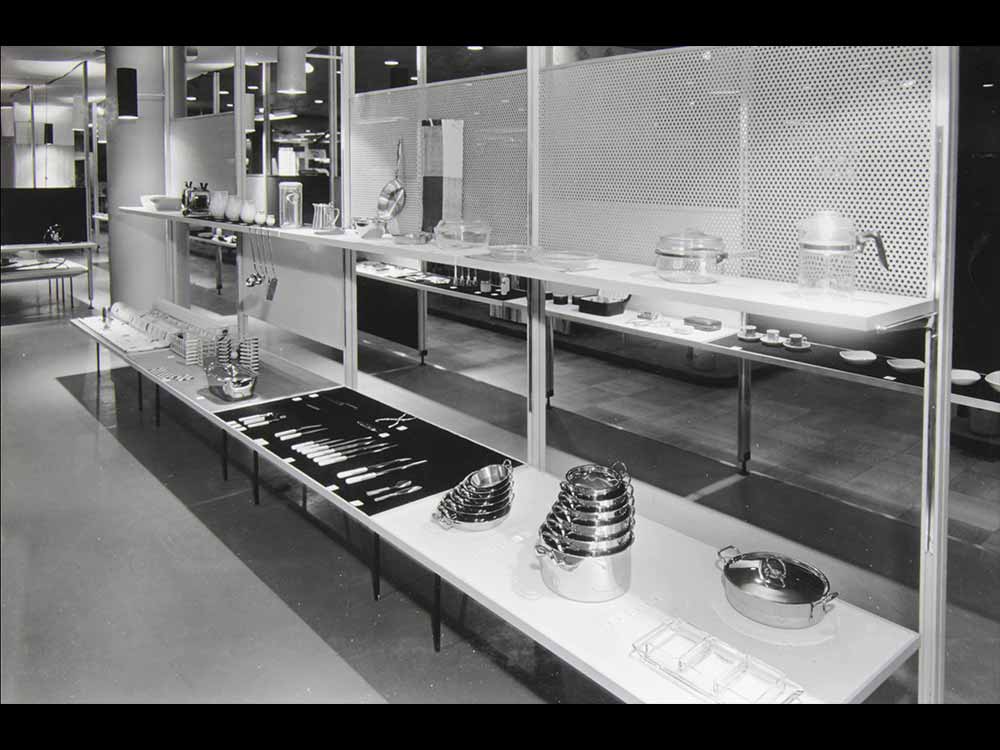
128 / 149 — Internal installation, Carlo Pagani, mostra "L'estetica del prodotto", 1953
Decorator Bruno Munari
Items chosen by Albe Steiner, Alberto Rosselli
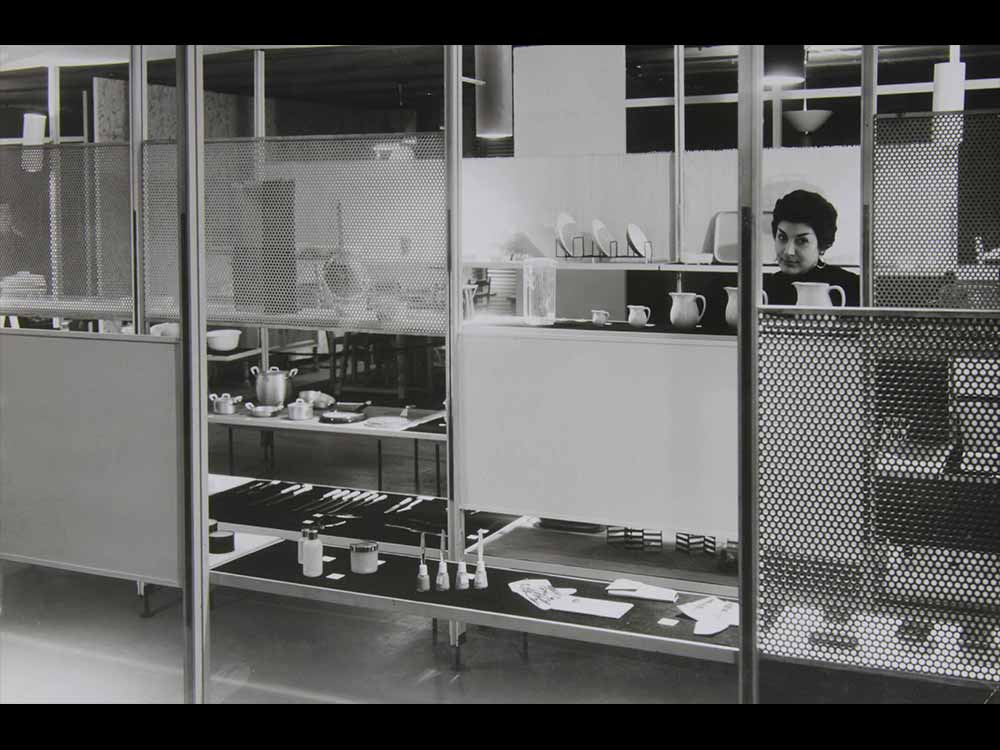
129 / 149 — Internal installation, Carlo Pagani, mostra "L'estetica del prodotto", 1953
Decorator Bruno Munari
Items chosen by Albe Steiner, Alberto Rosselli
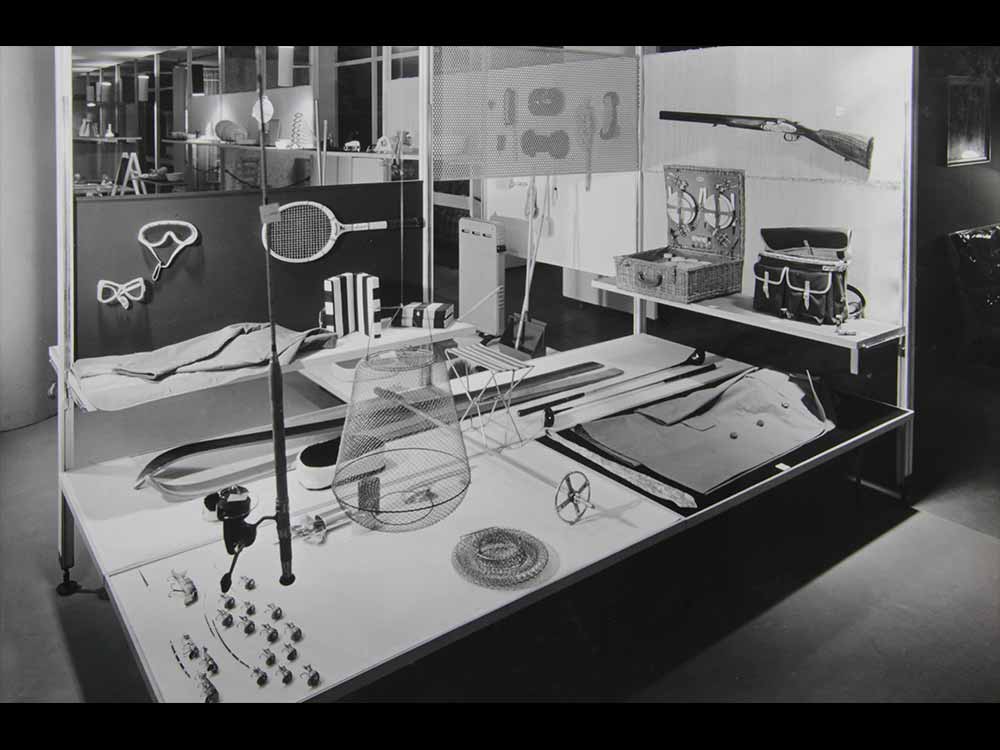
130 / 149 — Internal installation, Carlo Pagani, Mostra "L'estetica del prodotto", 1953
Decorator Bruno Munari
Items chosen by Albe Steiner, Alberto Rosselli

131 / 149 — Internal installation, Carlo Pagani, Gian Carlo Ortelli, mostra dei vincitori del I Compasso d'oro, X Triennale di Milano, 1954
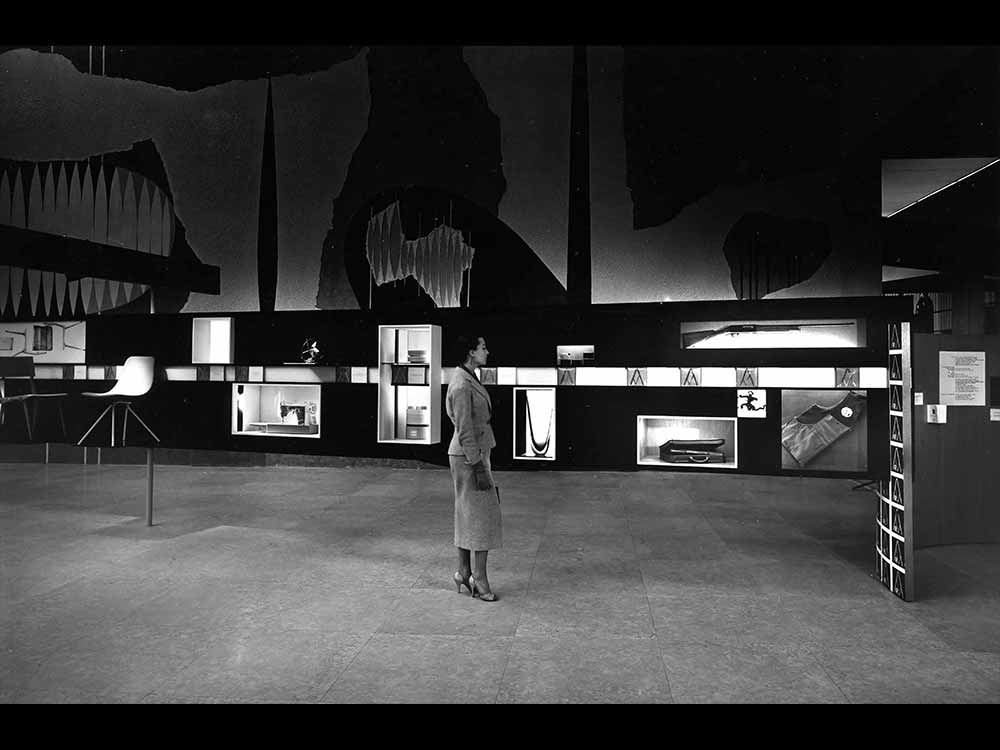
132 / 149 — Internal installation, Carlo Pagani, Gian Carlo Ortelli, mostra dei vincitori del I Compasso d'oro, X Triennale di Milano, 1954
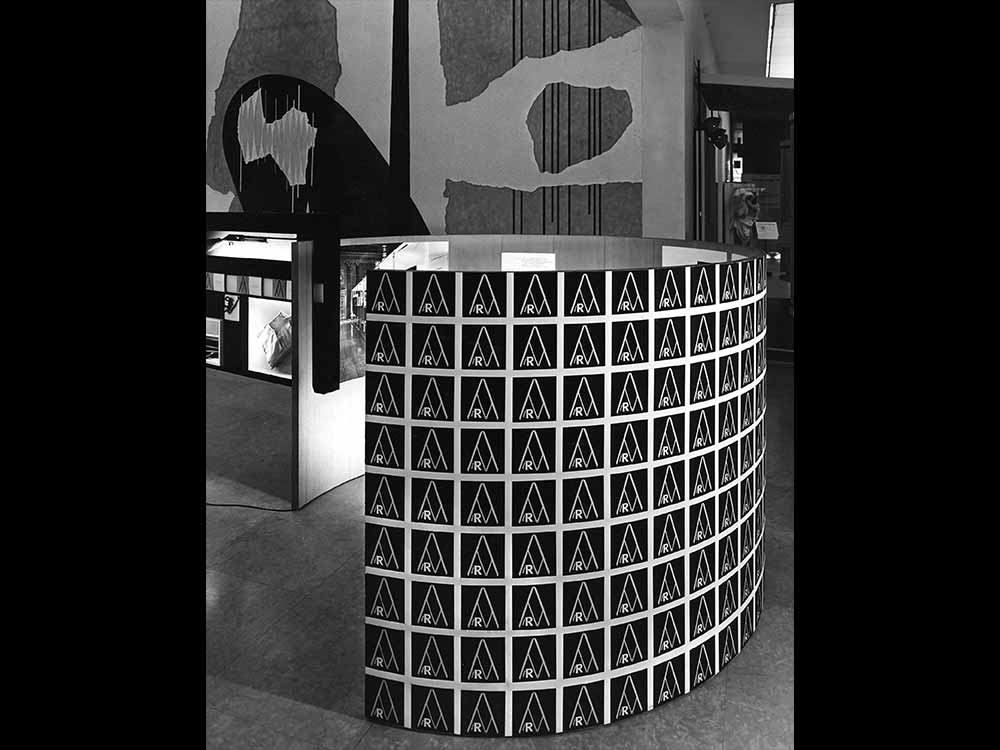
133 / 149 — Internal installation, Carlo Pagani, Gian Carlo Ortelli, particolare dell'allestimento per la mostra dei vincitori del I Compasso d'oro, X Triennale di Milano, 1954
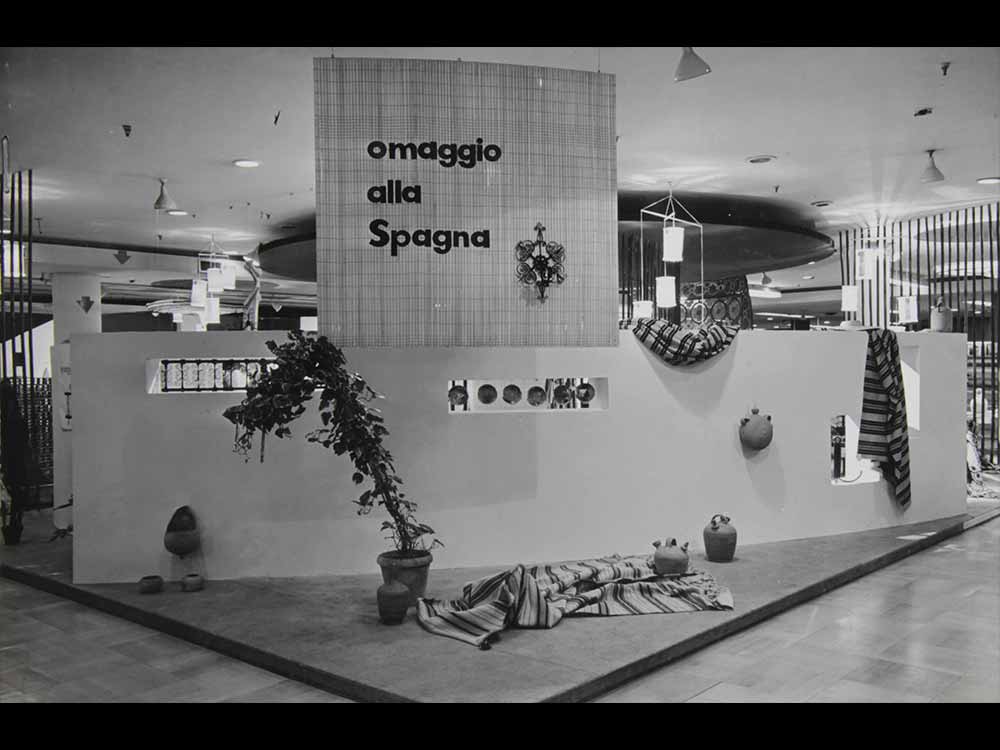
134 / 149 — Internal installation, Carlo Pagani, Gian Carlo Ortelli, Omaggio alla Spagna. Mostra di prodotti dell'artigianato spagnolo a La Rinascente, 1955
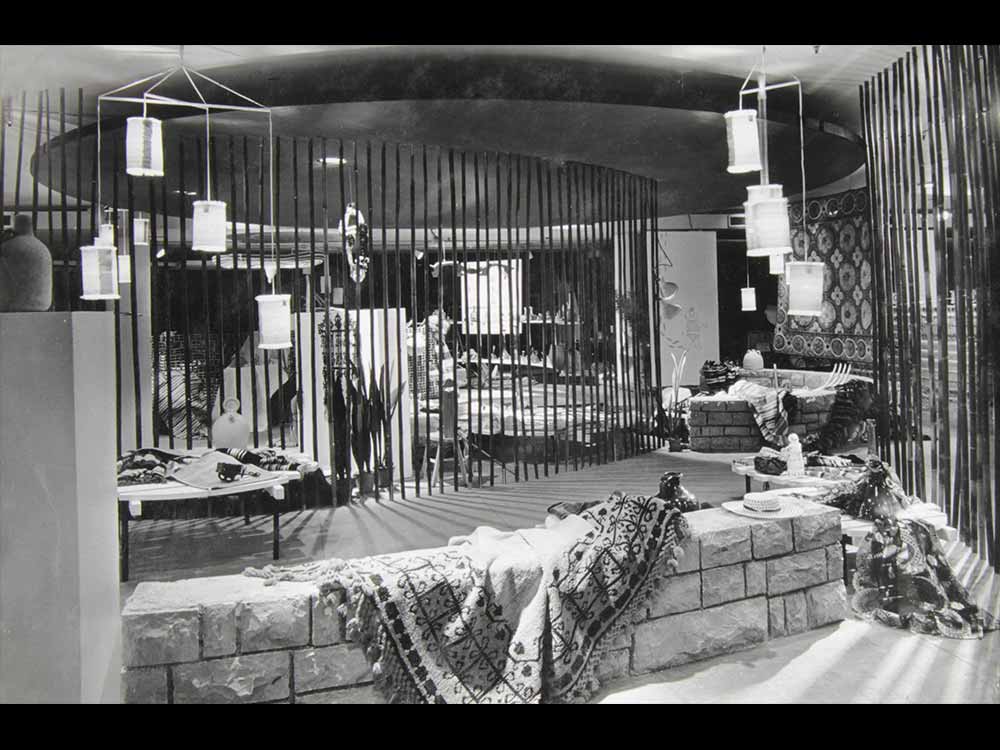
135 / 149 — Internal installation, Carlo Pagani, Gian Carlo Ortelli, Omaggio alla Spagna. Mostra di prodotti dell'artigianato spagnolo a La Rinascente, 1955
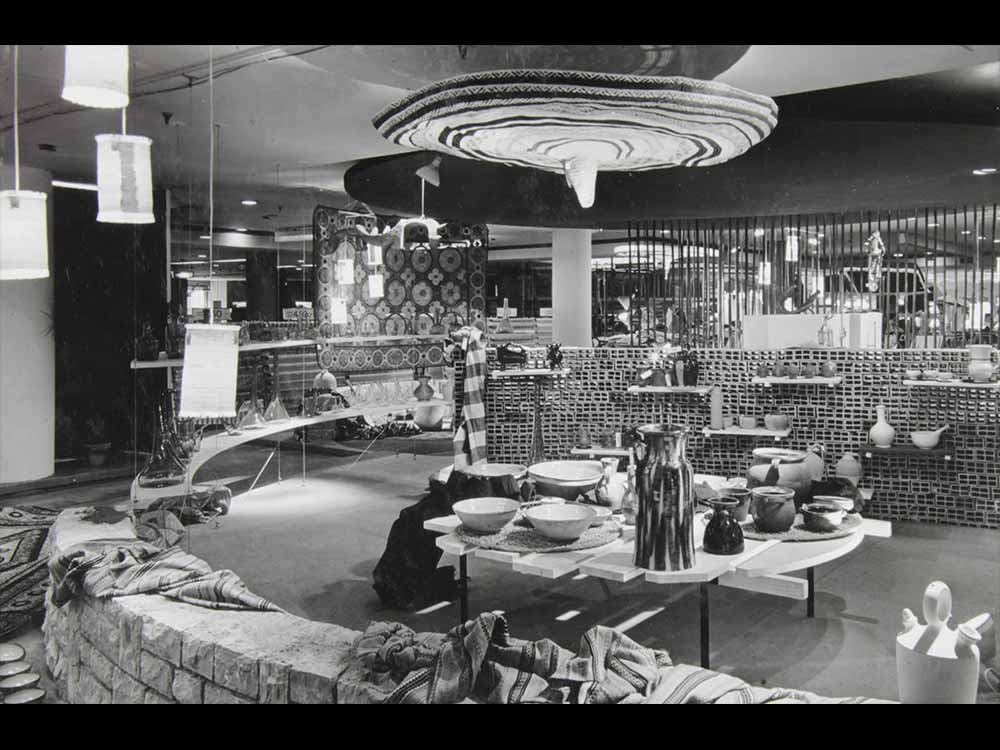
136 / 149 — Internal installation, Carlo Pagani, Gian Carlo Ortelli, Omaggio alla Spagna. Mostra di prodotti dell'artigianato spagnolo a La Rinascente, 1955
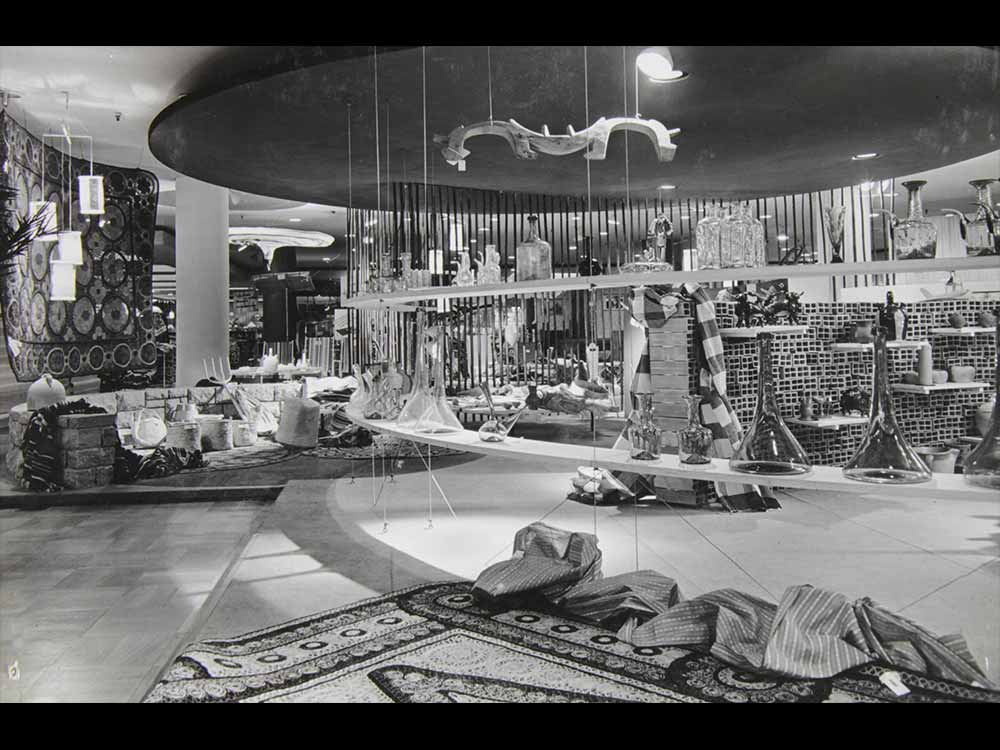
137 / 149 — Internal installation, Carlo Pagani, Gian Carlo Ortelli, Omaggio alla Spagna. Mostra di prodotti dell'artigianato spagnolo a La Rinascente, 1955
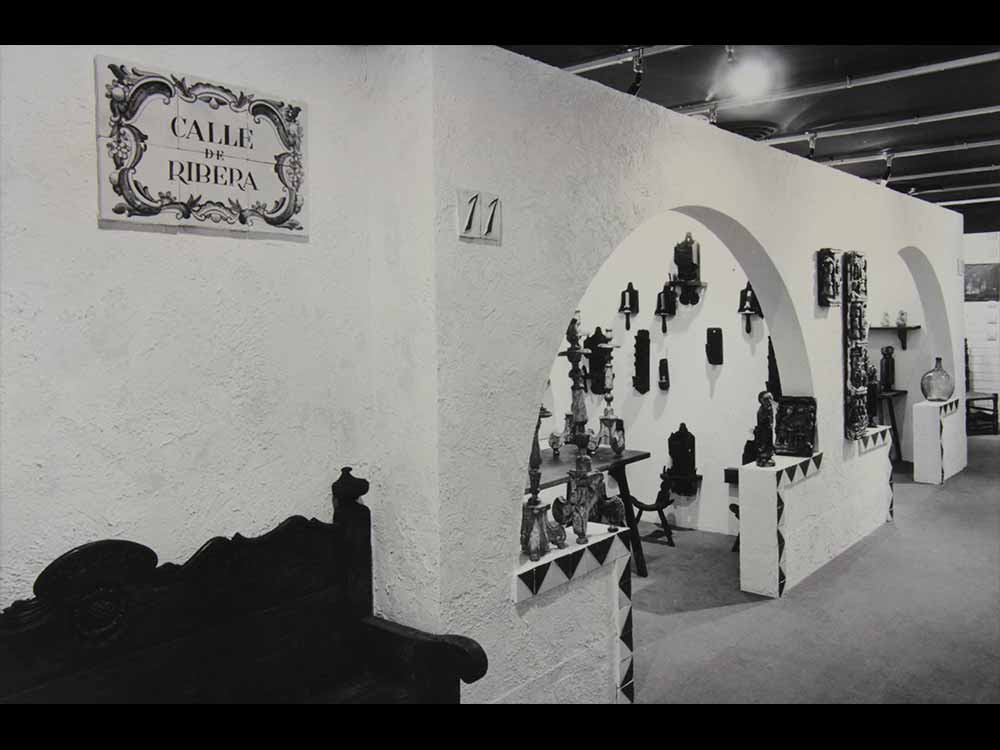
138 / 149 — Internal installation, Carlo Pagani, Sei mesi col Mondo a La Rinascente. La Spagna: mostra di arte popolare e antiquariato, 1963
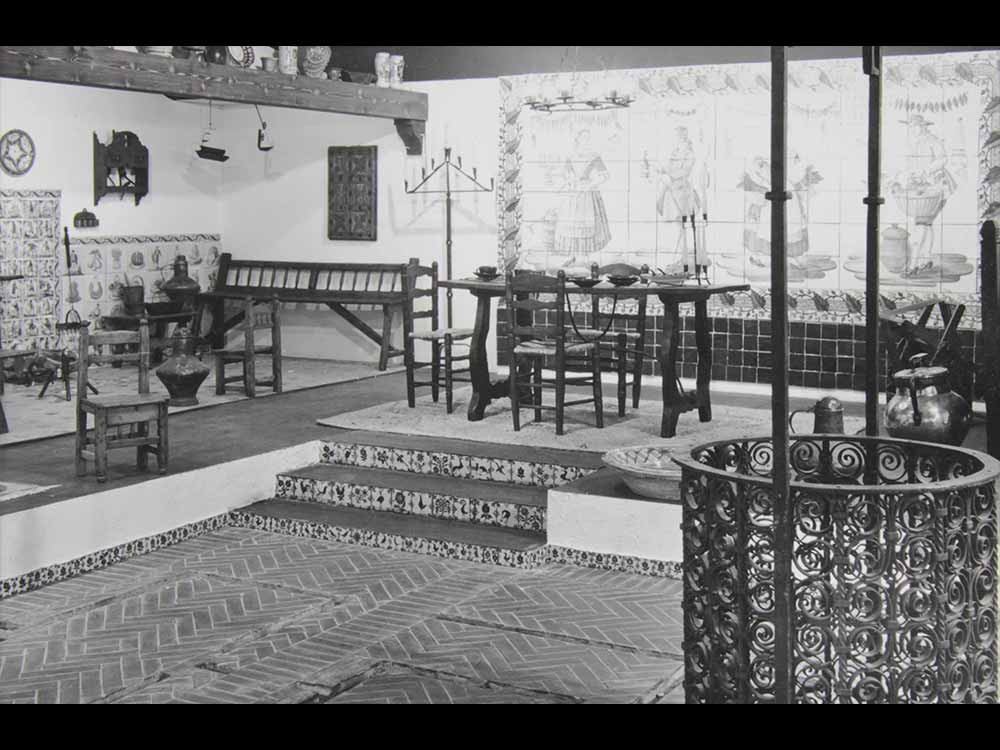
139 / 149 — Internal installation, Carlo Pagani, Sei mesi col Mondo a La Rinascente. La Spagna: mostra di arte popolare e antiquariato, 1963
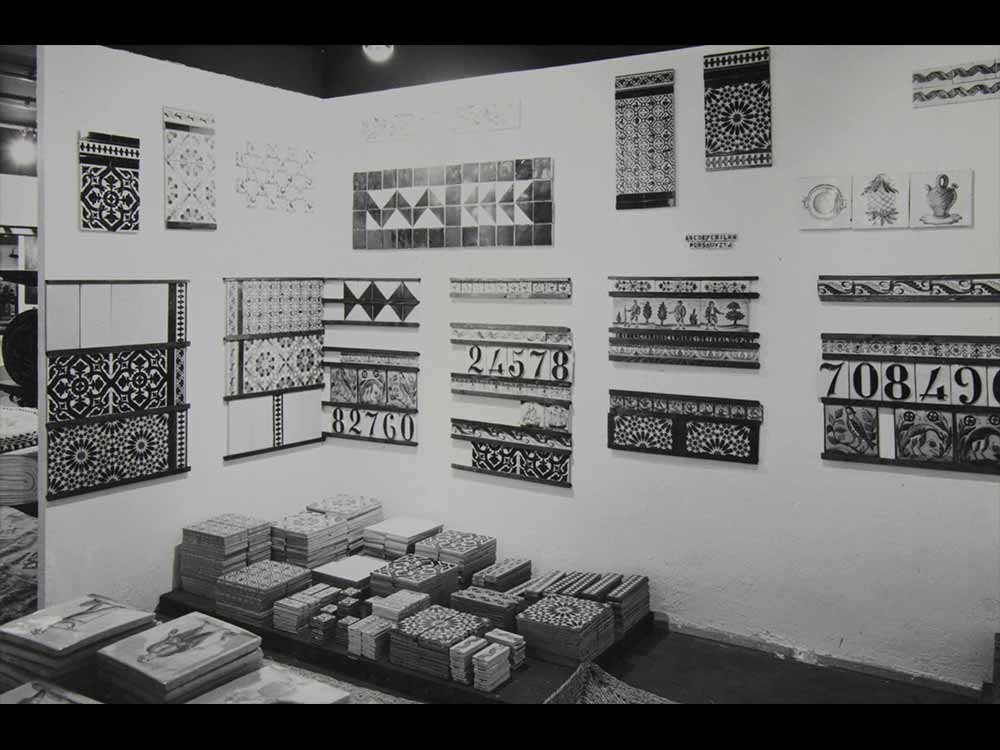
140 / 149 — Internal installation, Carlo Pagani, Sei mesi col Mondo a La Rinascente. La Spagna: mostra di arte popolare e antiquariato, 1963
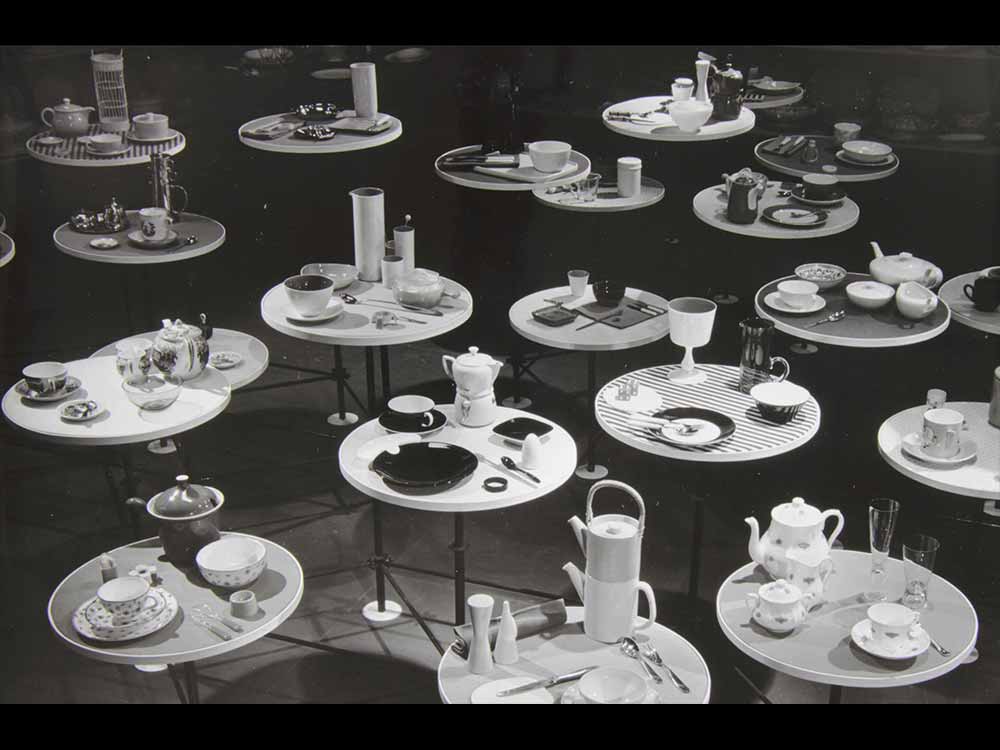
141 / 149 — Internal installation, reparto casa, s.d.
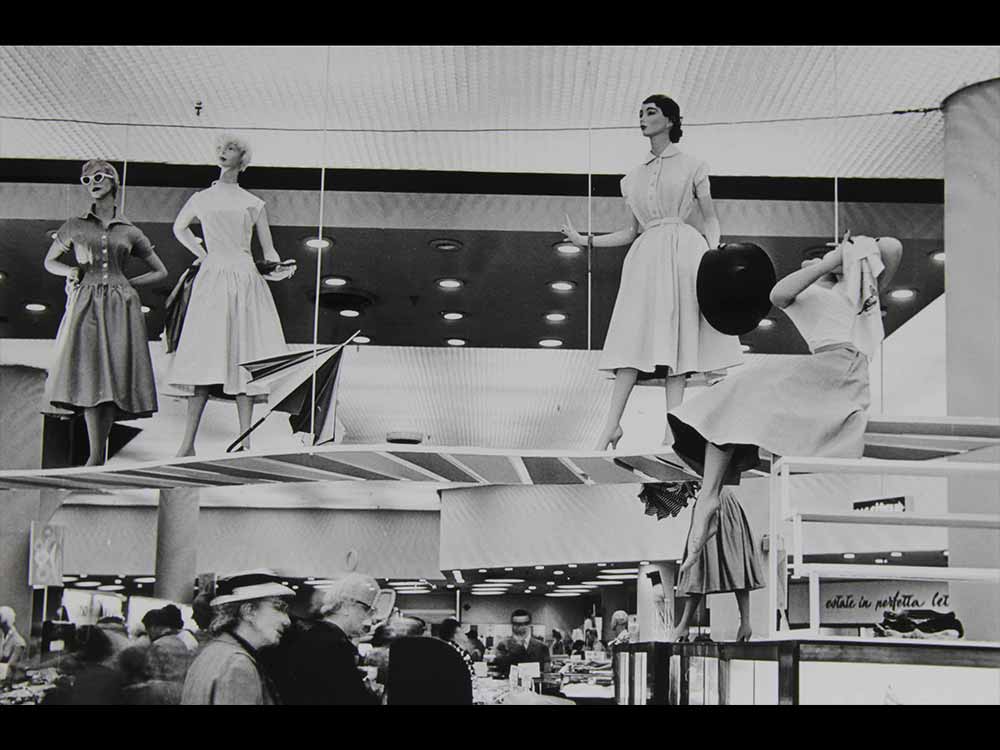
142 / 149 — Internal installation, particolare di allestimento, s.d.

143 / 149 — Internal installation, allestimento della mostra dedicata a Marcel Breuer, vincitore del Gran Premio Internazionale Compasso d'oro, 1955
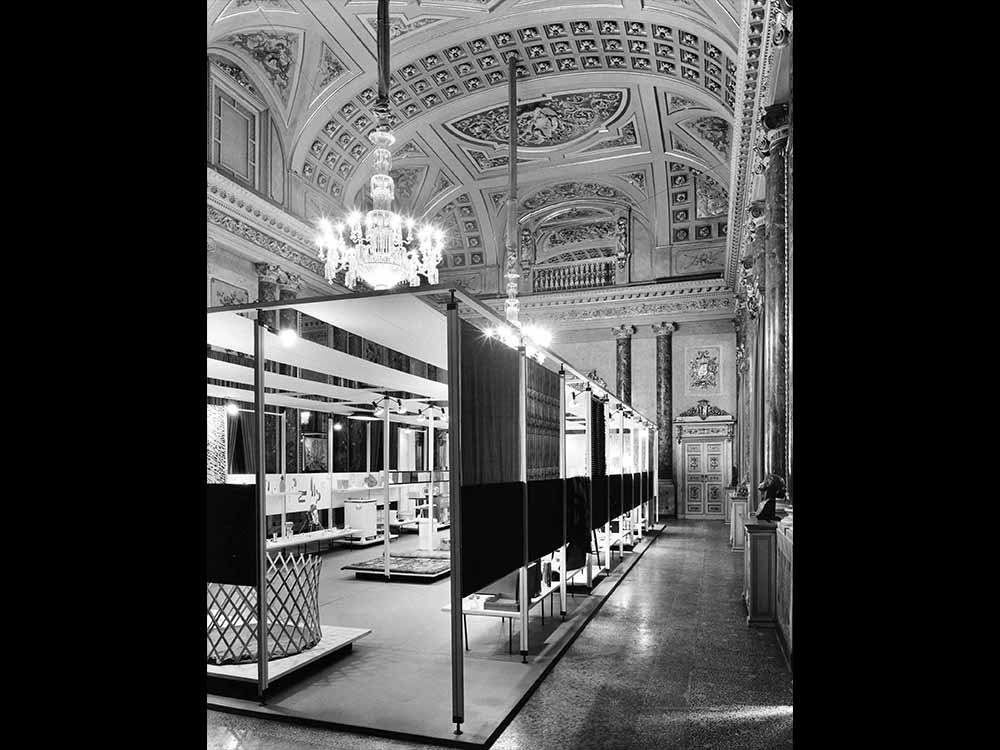
144 / 149 — Internal installation, allestimento del III Compasso d'Oro, Circolo della Stampa, Palazzo Serbelloni, Milano, 1956

145 / 149 — Internal installation, allestimento del III Compasso d'Oro, con Gran Premio Internazionale al MoMA, presso il Circolo della Stampa, Palazzo Serbelloni, Milano, 1956

146 / 149 — Internal installation, Bruno Munari, Gian Carlo Ortelli, allestimento della IV edizione del Compasso d'oro, XI Triennale di Milano, 1957
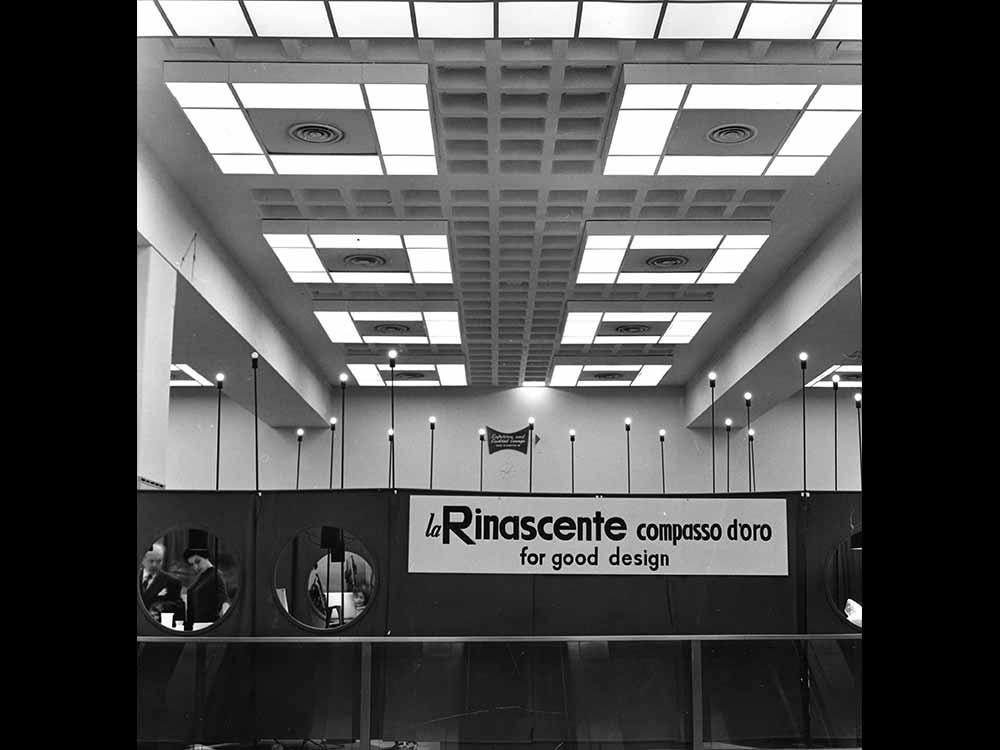
147 / 149 — Internal installation, Franco Albini, mostra del Compasso d'oro alla fiera mondiale di New York, 1957
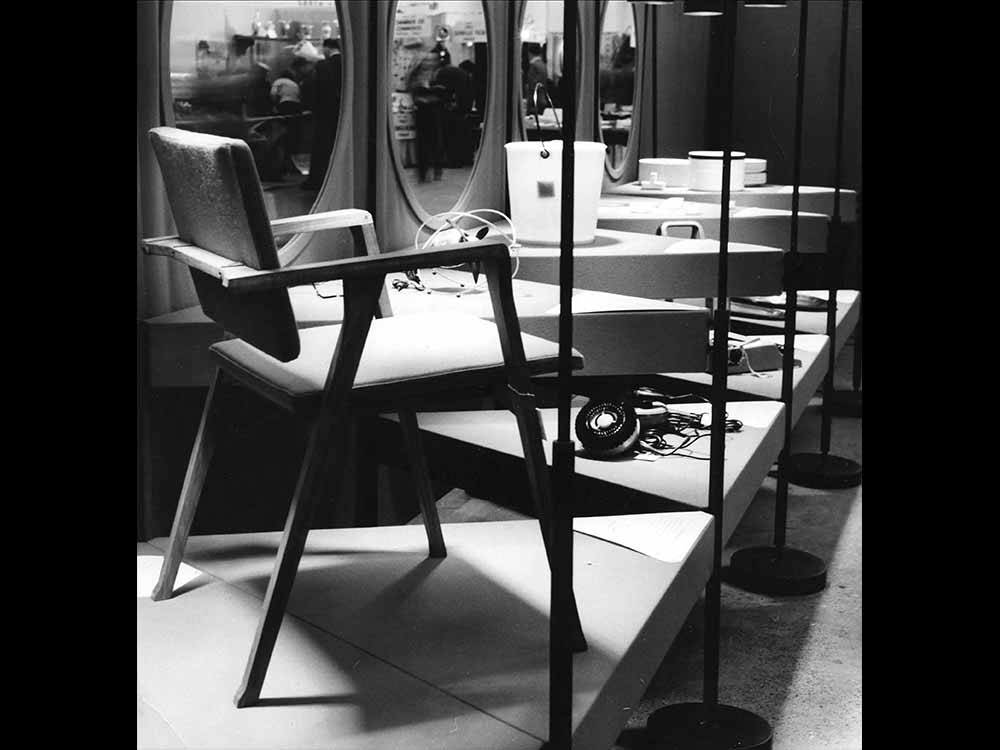
148 / 149 — Internal installation, Franco Albini, mostra del Compasso d'oro alla fiera mondiale di New York, 1957

149 / 149 — Internal installation, Architetti Monti G.P.A., esposizione dei prodotti Compasso d'oro alla Galleria d'arte moderna, Milano, 1959